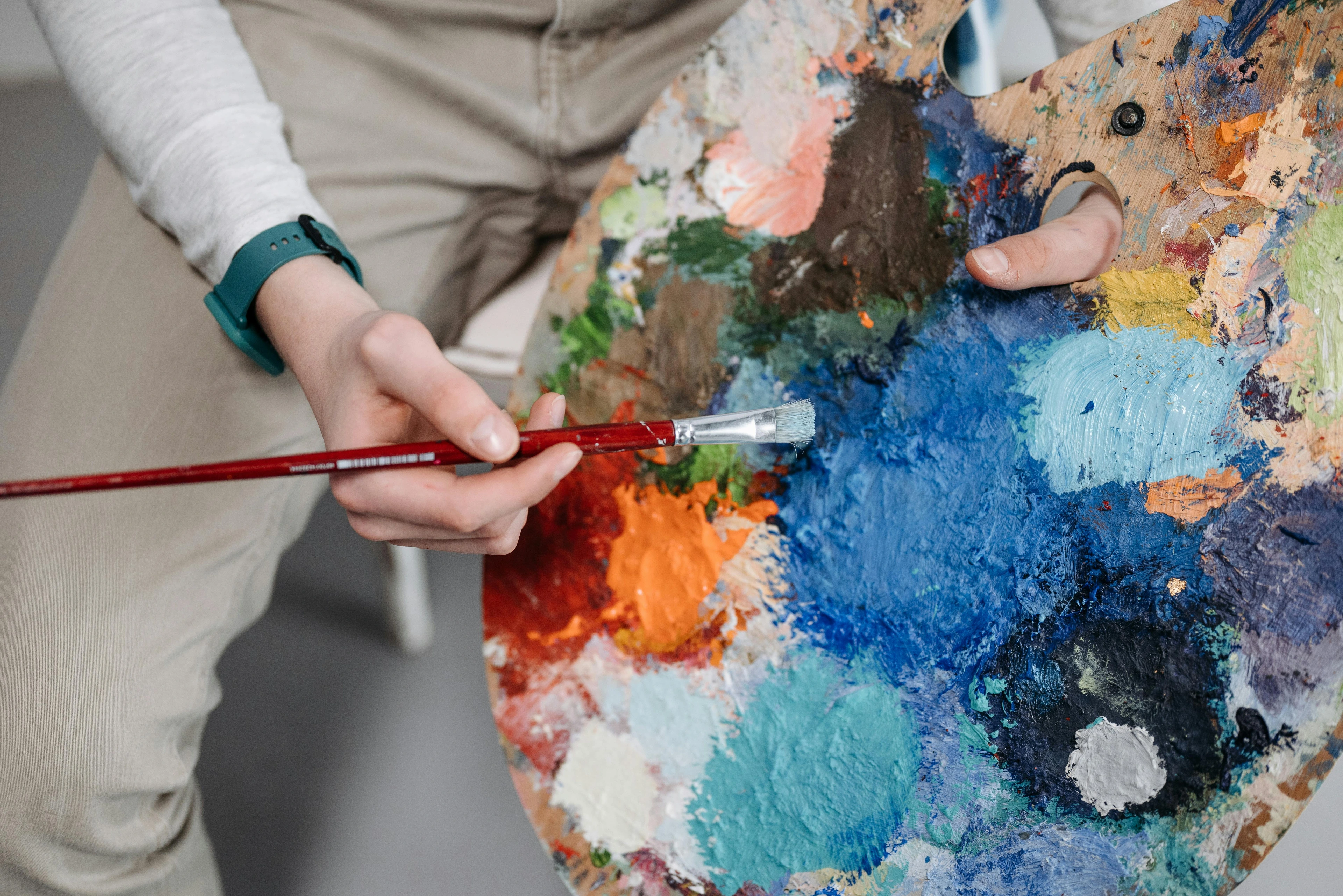
Europe's Best Art Museums: An Artist's Personal Guide to Unmissable Art & Hidden Gems
Explore Europe's top art museums with this artist's personal guide. Discover iconic masterpieces, hidden gems, and contemporary art, packed with practical tips for an unforgettable journey that fuels creativity and refines your unique taste.
Europe's Best Art Museums & Galleries: Your Personal Guide to the Unmissable and the Unexpected
Europe. Just whispering the name conjures images of cobbled streets, ancient ruins, and, let's be utterly honest, art. The continent is an absolute treasure chest overflowing with centuries of art history, housing some of a planet's most revered and influential art museums and art galleries. We're talking millennia of human creativity packed under impressive roofs – from dusty ancient relics whispering tales of forgotten empires, to revolutionary masterpieces that blew minds, and right up to the weird, wonderful, and sometimes head-scratching stuff contemporary artists are cooking up today. If you're looking for the best art museums in Europe, you've landed in the right spot.
This guide is your compass for navigating this glorious maze, pinpointing the best museums in Europe, the truly major art museums in Europe, and the absolute top art museums in Europe that culture vultures and art fanatics dream about. Now, "gallery" can sometimes mean those sleek commercial spots where you might feel tempted to buy art, but here, we're zeroing in on the grand public art institutions and museums. These are the magnificent guardians of Europe's artistic soul – often the very places people mean when they search for those premier European art museums. They are absolute goldmines for cultural travelers and anyone hunting for a dose of serious art inspiration.
But this isn't just another dry list. This is my personal journey through these hallowed halls, shaped by countless hours (and probably miles, my feet can attest!) spent wandering, observing, and letting the art seep in. I remember one particularly quiet afternoon in a small gallery in Florence, standing before a lesser-known Renaissance drawing. The light caught it just so, and for a fleeting moment, I felt an almost electric connection to the artist's hand, centuries ago, pulling charcoal across paper. It was a profound, almost spiritual jolt that solidified my own path. As an artist myself, visiting these places isn't just about seeing famous works; it's about connecting with the creative spirit across time, understanding the journey of those who came before, and finding fuel for my own practice. It's about the feeling these spaces evoke, the quiet moments of connection with a piece, and the unexpected sparks of inspiration that can ignite anywhere, from a grand salon to a quiet corner with a single drawing. So, grab a comfy chair (you'll definitely need it after imagining all the walking!), maybe a virtual espresso, and let's dive into an expanded, more opinionated tour of the absolute best museums across Europe. We'll cover the big hitters, the modern marvels, the niche specialists, and even whisper about the joys of finding hidden gems – representing the pinnacle of European art museum experiences, from vast art museums in Europe to intimate local collections.
Titans of Art History: The Ones You Really Can't Miss
Okay, let's start with the heavyweights, the undisputed champions. These are the institutions with world-famous, sprawling collections that span centuries, sometimes millennia. Visiting them is practically a prerequisite for understanding the grand sweep of Western art history. Their scale can be mind-boggling, placing them firmly among the major art museums in Europe. Prepare for crowds, masterpieces galore, and maybe a little awe-induced vertigo. You will need comfy shoes. And perhaps a sense of humor about getting slightly lost – I once spent 20 minutes trying to find the exit near the Egyptian wing at the Louvre, only to discover I'd walked in a circle. Classic!
- Louvre Museum - Paris, FranceImagine stepping into a palace that just happens to be filled with the world's most famous art. Arguably the world's most famous museum, the Louvre isn't just a museum; it's a sprawling historic palace complex that seems to stretch into infinity. Its collection is staggering, covering everything from ancient Egypt, Greece, Rome, and the Near East right up to the mid-19th century. Seriously, its sheer scale is breathtaking – you could spend weeks here and still miss entire wings. It's the definition of an encyclopedic museum. The feeling of being inside is one of overwhelming grandeur and history; you walk through spaces once inhabited by royalty, surrounded by treasures gathered over centuries. It's easy to feel like a tiny ant in this palace of art, and yes, getting lost is part of the adventure (or maybe just my terrible navigation skills). It feels like stepping into the very heart of Western art's grand narrative. I remember standing before the Winged Victory of Samothrace, feeling the sheer power and movement of the sculpture, almost as if the wind was still whipping around it, despite being indoors.
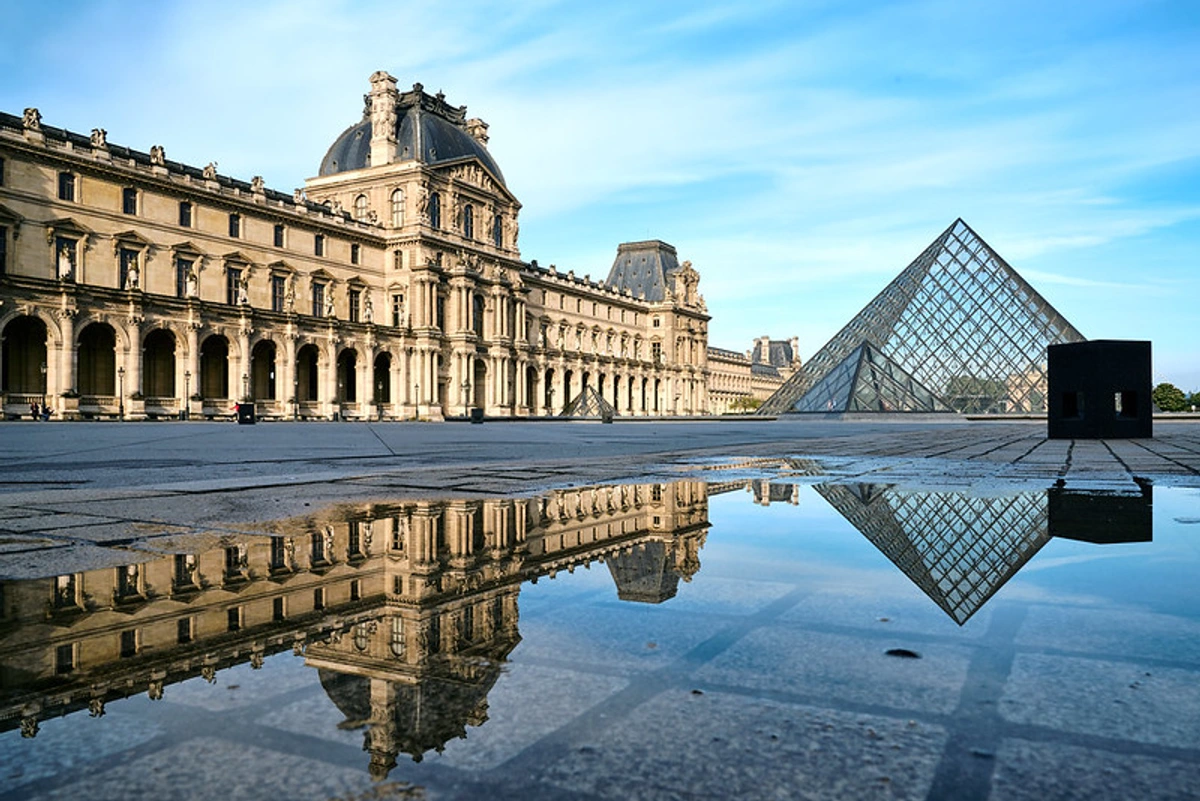
- Don't Miss: Leonardo da Vinci's Mona Lisa (brace for the scrum!), the Venus de Milo, the Winged Victory of Samothrace, vast Egyptian antiquities (mummies included!), masterpieces of French painting (David, Delacroix, Ingres), and room after cavernous room of incredible European paintings (Italian Renaissance, Northern European). The Egyptian wing alone feels like a separate, incredible museum.
- Pro Tip: Plan your attack! Prioritize sections using the map, book tickets way in advance online, and maybe don't try to see it all in one go unless you enjoy weeping from exhaustion. Remember, Paris itself is arguably the best art city in Europe. Find more highlights in our guide to the best galleries in Paris.
- Prado Museum (Museo Nacional del Prado) - Madrid, SpainStep into the soul of Spanish painting. The Prado is Spain's crown jewel, the place to get intimate with the Spanish masters. Its collection, stretching primarily from the 12th century to the early 20th, largely reflects the tastes (and considerable power) of the Spanish monarchy. You'll also find significant Italian and Flemish works that found their way into the royal stash over the centuries. For me, the Prado feels intensely focused, almost like stepping into the minds of Spain's greatest painters. The rooms dedicated to Velázquez, Goya, and El Greco have a particular gravity; you feel the weight of history and genius in a way that's different from the Louvre's sprawling encyclopedic approach. It's a place of deep contemplation, especially before the intensity of Goya's later works. Standing before Las Meninas, I remember feeling utterly baffled and mesmerized, trying to figure out who was looking at whom – it's a painting that demands you think. I distinctly recall the chilling power of Goya's Black Paintings, particularly Saturn Devouring His Son, which left me feeling profoundly unsettled and yet utterly compelled.
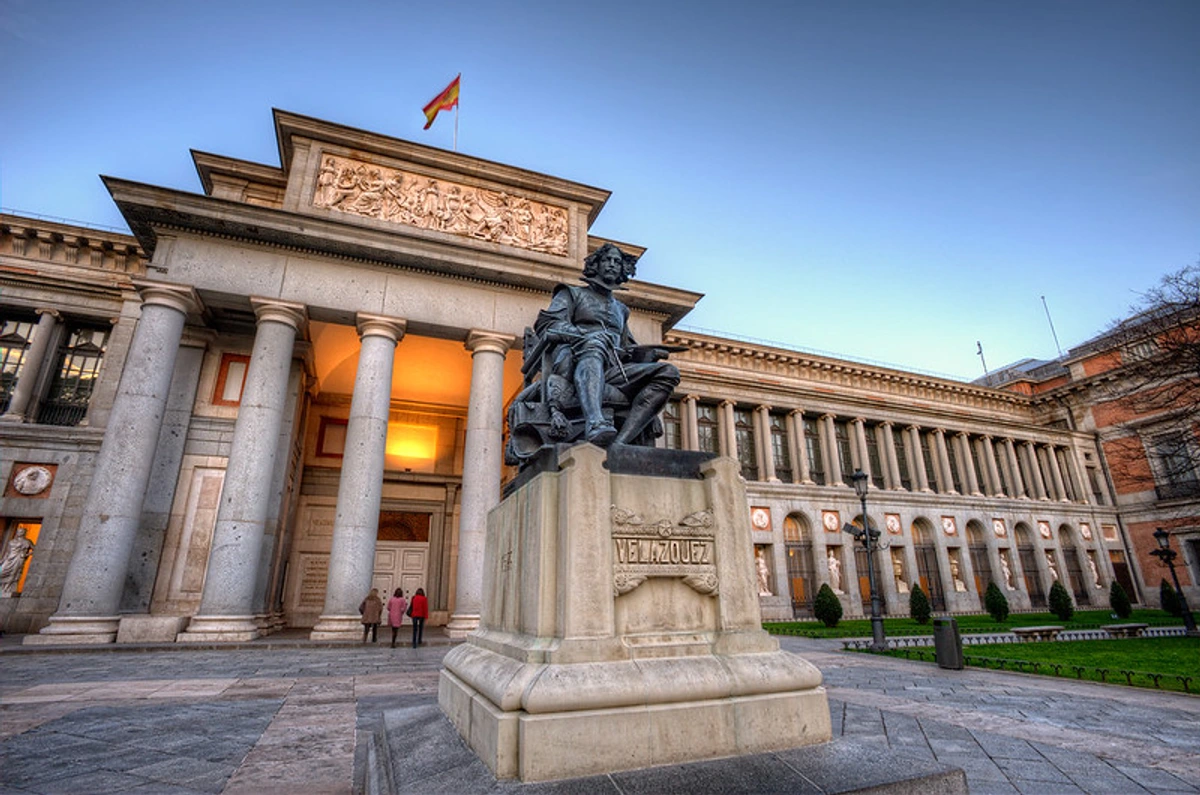
- Don't Miss: The unparalleled collection of Velázquez (including the utterly enigmatic Las Meninas – seriously, spend time pondering what is happening in that painting?), Goya in all his glory (from regal court portraits to his deeply unsettling Black Paintings), and the elongated, spiritual figures of El Greco. Plus, showstoppers by Titian, Rubens, and Hieronymus Bosch (The Garden of Earthly Delights is a trip like no other). Seeing the evolution of Spanish painting here is a masterclass.
- Insider Info: It's part of Madrid's famed "Golden Triangle of Art" – more on that later. Note that many Spanish national museums, including the Prado, are typically closed on Mondays.
- Uffizi Gallery (Galleria degli Uffizi) - Florence, ItalyWalk directly into the heart of the Renaissance. Right in the beating heartland of the Renaissance, the Uffizi boasts arguably the world's most breathtaking collection of Italian Renaissance paintings, especially from the Florentine school. It's housed in a grand, historic building designed by Giorgio Vasari, hugging the Arno River. Walking these hallowed halls feels like stepping directly back into the 15th century, minus the plague. The setting itself, with views over the Arno and the Ponte Vecchio, is incredibly evocative, making the masterpieces within feel even more connected to the city that birthed them. It's a pilgrimage site for anyone who loves this period, and the sheer concentration of iconic works can be genuinely overwhelming (in a good way!). It feels like the very air hums with creative energy. I remember being utterly mesmerized by Botticelli's Primavera, noticing new details in the intricate floral patterns and the delicate expressions of the figures with each passing minute.
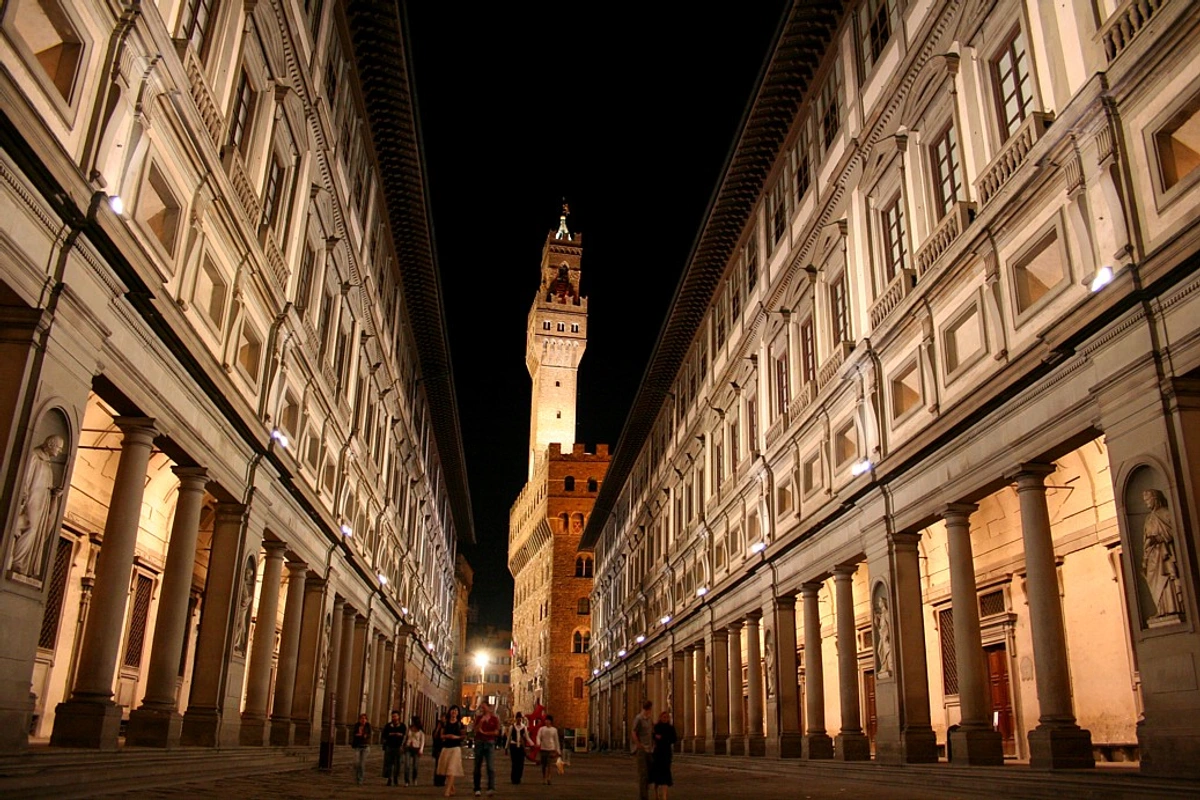 credit, licence
credit, licence- Don't Miss: Botticelli's Birth of Venus and Primavera (even more stunning and ethereal in person), Leonardo da Vinci's Annunciation, Michelangelo's Doni Tondo (his only finished panel painting!), Raphael's Madonna of the Goldfinch, plus masterpieces by Titian, Caravaggio, Giotto, Cimabelli... the list is truly epic. Seeing these works in Florence feels like they've come home.
- Crucial Advice: Booking tickets months in advance isn't overkill; it's absolutely essential if you don't want to spend half your Florentine holiday in a queue. Remember that state museums in Italy often close on Tuesdays. Florence is Renaissance art. Dive deeper into its specific offerings in our guide to the best galleries in Florence.
- Rijksmuseum - Amsterdam, NetherlandsExperience the Golden Age in golden light. The national museum of the Netherlands, the Rijksmuseum, is where you go for the full immersion into Dutch arts and history, particularly the glorious Dutch Golden Age (17th century). It's housed in a magnificent building that underwent a stunning, decade-long renovation, making the setting almost as grand as the art itself. It's a cornerstone of the best art cities in the Netherlands. Stepping into the dedicated Night Watch hall feels like entering a national shrine, and the quiet contemplation possible in rooms with Vermeer's serene domestic scenes is a beautiful contrast. It feels like a museum deeply proud of its national heritage, presented with elegance and clarity. The light in the Dutch Golden Age rooms feels particularly special, almost like it's filtered through time. I was struck by the intimate scale of Vermeer's The Milkmaid, where every detail, from the pouring milk to the light on the bread, felt incredibly real and timeless.
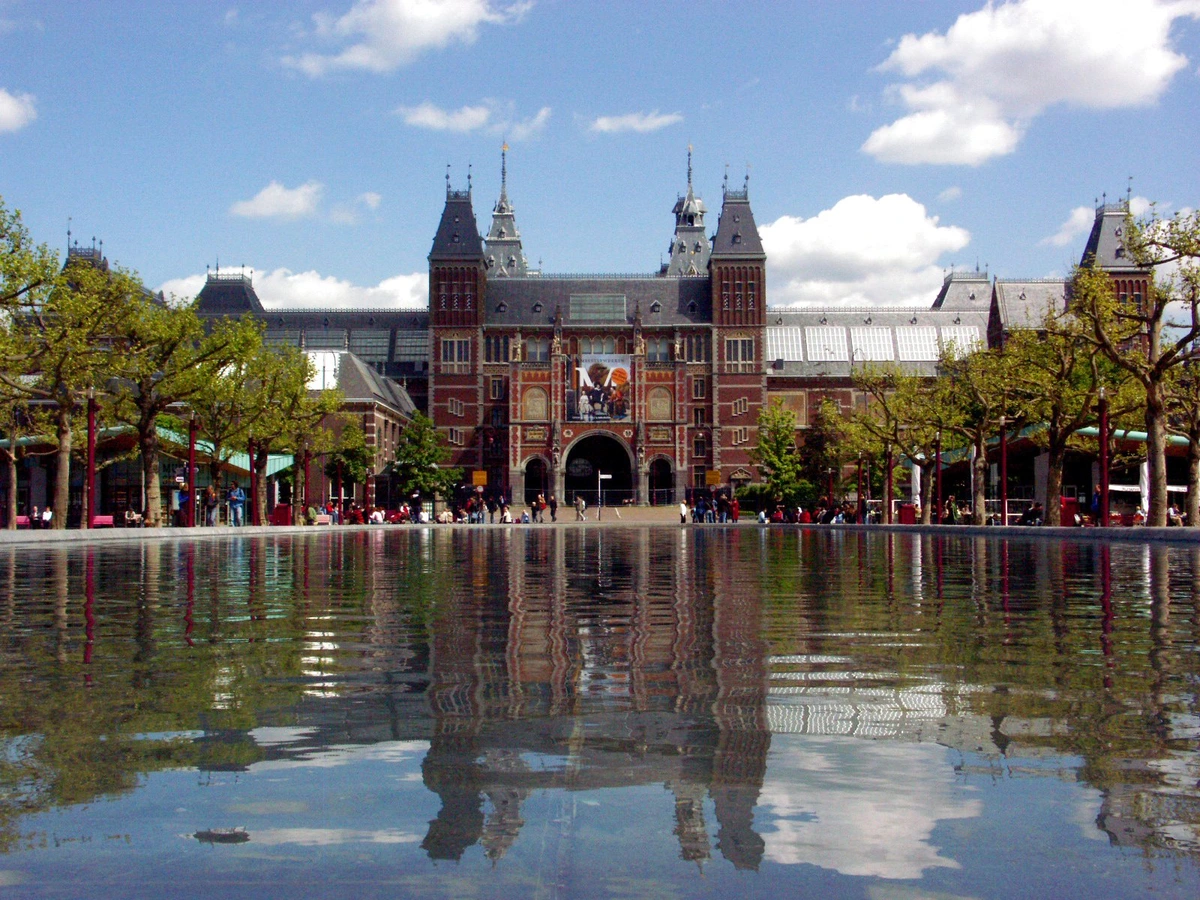 credit, licence
credit, licence- Don't Miss: Rembrandt's The Night Watch. It's huge, dramatic, technically brilliant, and displayed like the national treasure it is in its own dedicated hall. Also see his incredibly touching The Jewish Bride, Vermeer's serene The Milkmaid and Woman Reading a Letter, plus lively works by Frans Hals and Jan Steen. Don't skip the intricate dollhouses and iconic blue-and-white Delftware either – they offer fascinating cultural context and show the incredible craftsmanship of the era.
- National Gallery - London, UKA perfectly curated history book, but with actual paintings. Sitting proudly in Trafalgar Square (pigeons and Nelson's Column included), the National Gallery offers a truly exceptional journey through Western European painting, covering the mid-13th century right up to 1900 with over 2,300 works. It's fantastic for getting a solid overview and seeing how painting styles evolved across different countries and centuries. The layout feels logical and manageable compared to some giants, making it a joy to wander and trace the lineage of painting. And the fact that it's free? That just makes the experience feel incredibly generous and accessible. It feels like a perfectly curated history book, but with actual paintings. I remember spending an absurd amount of time trying to decipher the hidden skull in Holbein's The Ambassadors, feeling like I was part of a clever, centuries-old riddle.
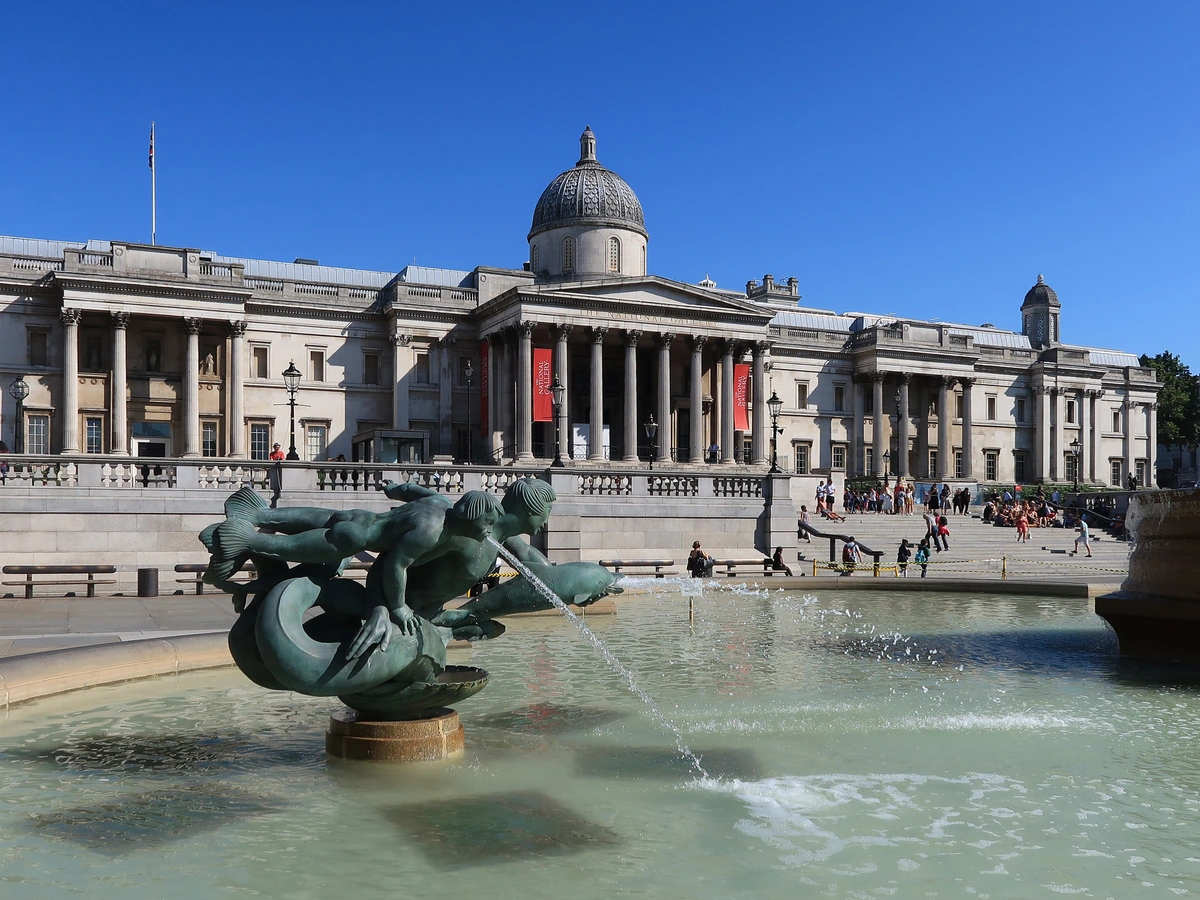 credit, licence
credit, licence- Don't Miss: Van Eyck's ridiculously detailed Arnolfini Portrait (spot the artist in the mirror!), Van Gogh's vibrant Sunflowers, masterpieces by British greats Turner and Constable, Leonardo da Vinci's Virgin of the Rocks, Holbein's clever (and slightly creepy) The Ambassadors with its distorted skull, and incredible works by Monet, Rembrandt, Titian, Raphael, Velázquez... the breadth is astounding. It's a place where you can hop centuries and countries in minutes.
- Best Part? Entry to the main collection is completely free! This is a wonderful exception; many other European cities offer free entry on specific days or evenings (like the first Sunday of the month in Paris, or certain evening hours at the Prado), but check individual museum websites as these policies can change. Find more London highlights in our guide to London's best galleries.
Deepening the Dive: Still Absolutely Essential Major Institutions
So you've braved the crowds and stood before the most famous faces in art history. What's next? Europe's artistic landscape is vast and deep, extending far beyond the handful of universally recognized titans. This section delves into other absolutely essential institutions that are pillars of the Europe art museums landscape. Leaving them off your itinerary might cause serious art-lover FOMO (Fear Of Missing Out), and we wouldn't want that, would we? These institutions are absolutely major destinations in their own right, offering different, often more intimate, perspectives than the colossal five above. It's like switching from a deafening stadium rock concert to an intimate acoustic session in a cozy cafe.
- State Hermitage Museum - Saint Petersburg, RussiaA journey through imperial excess and artistic accumulation. One of the largest and oldest museums on Earth, the Hermitage isn't just a museum; it's housed primarily in the ridiculously opulent former Winter Palace of the Russian Tsars (plus several adjacent buildings). The collection numbers over three million items (!), including one of the most extensive painting collections globally. The sheer, unadulterated grandeur of the place – gold leaf seemingly everywhere – is a huge part of the experience. You might go for the art, but you'll be just as mesmerized by the palace itself. It feels like a journey through imperial excess and artistic accumulation on a scale that's hard to grasp. It's a place that demands time and patience, but rewards with unparalleled scale and beauty. Walking through the Malachite Room, I couldn't help but wonder about the lives of the Tsars who once inhabited such dazzling spaces.
 credit, licence
credit, licence- Highlights: Deep holdings of Western European art (Rembrandt, Rubens, Leonardo da Vinci, Titian, French Impressionists, Matisse, Picasso), glittering Scythian gold artifacts, classical antiquities, decorative arts galore. Honestly, the opulent Rococo and Neoclassical interiors are worth the admission price alone. (Note: Current accessibility and visiting conditions may be impacted by geopolitical events. Always check official sources before planning any visit.)
- Vatican Museums - Vatican City, Rome, ItalyPrepare for sensory overload (in the best possible way). Located within Vatican City, these museums showcase the mind-boggling collection amassed by Popes over centuries. It's less a single museum and more a labyrinth of interconnected palaces, galleries, and courtyards leading to the ultimate, awe-inspiring crescendo: the Sistine Chapel. Some specific sections might have additional booking requirements or restricted access, so it's worth checking the official site if you have very specific interests beyond the main route. The feeling here is one of immense spiritual and historical weight, combined with the sheer scale of papal patronage. It's a journey through centuries of religious and artistic power, culminating in a space that, despite the crowds, still manages to feel sacred and breathtaking. It's a truly unique blend of faith, history, and artistic genius. I remember feeling a profound sense of humility standing beneath Michelangelo's ceiling, realizing the sheer audacity and devotion required to create something so monumental.
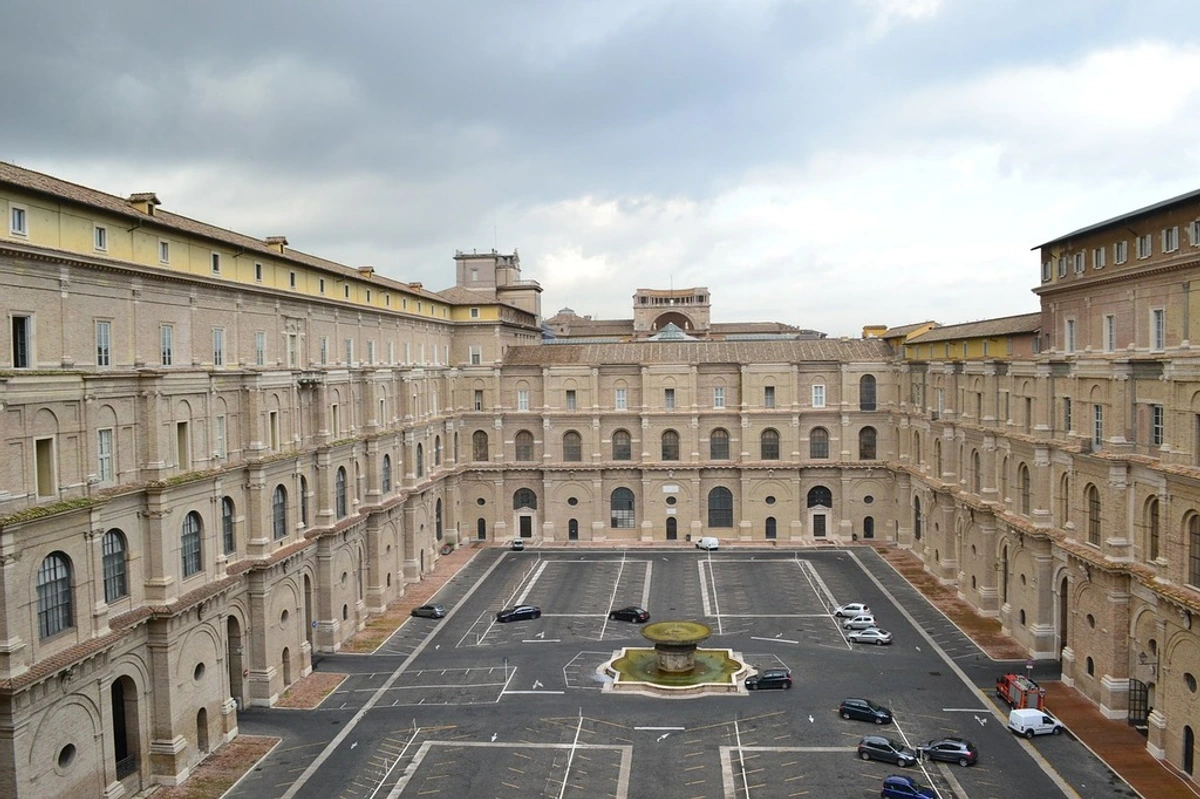
- Highlights: Michelangelo's Sistine Chapel ceiling and his powerful Last Judgment. The Raphael Rooms, covered in breathtaking frescoes. Iconic classical sculptures like Laocoön and His Sons and the Apollo Belvedere. Egyptian mummies, Etruscan artifacts, the stunning Gallery of Maps... the list goes on and on. The sheer density of masterpieces is astonishing.
- Warning: Expect colossal crowds. Seriously, colossal. Book tickets far, far in advance. And remember the strict dress code (shoulders and knees must be covered).
- British Museum - London, UKA repository of humanity's story, told through objects. While its primary focus is human history, art, and culture from across the globe, the British Museum holds art collections of immense world significance. Think vast holdings of prints and drawings, plus artifacts considered masterpieces of world art (like the hotly debated Parthenon sculptures, imposing Assyrian reliefs, and an extensive Egyptian collection – hello, Rosetta Stone!). Norman Foster's magnificent glass roof over the Great Court is an architectural marvel in itself. Like the Louvre, the feeling is one of global reach and historical depth; you can travel the world and through time under one roof. It's a place that sparks endless curiosity, even if you only scratch the surface. I once spent an hour just staring at the intricate details of the Assyrian reliefs, imagining the ancient stories they told.
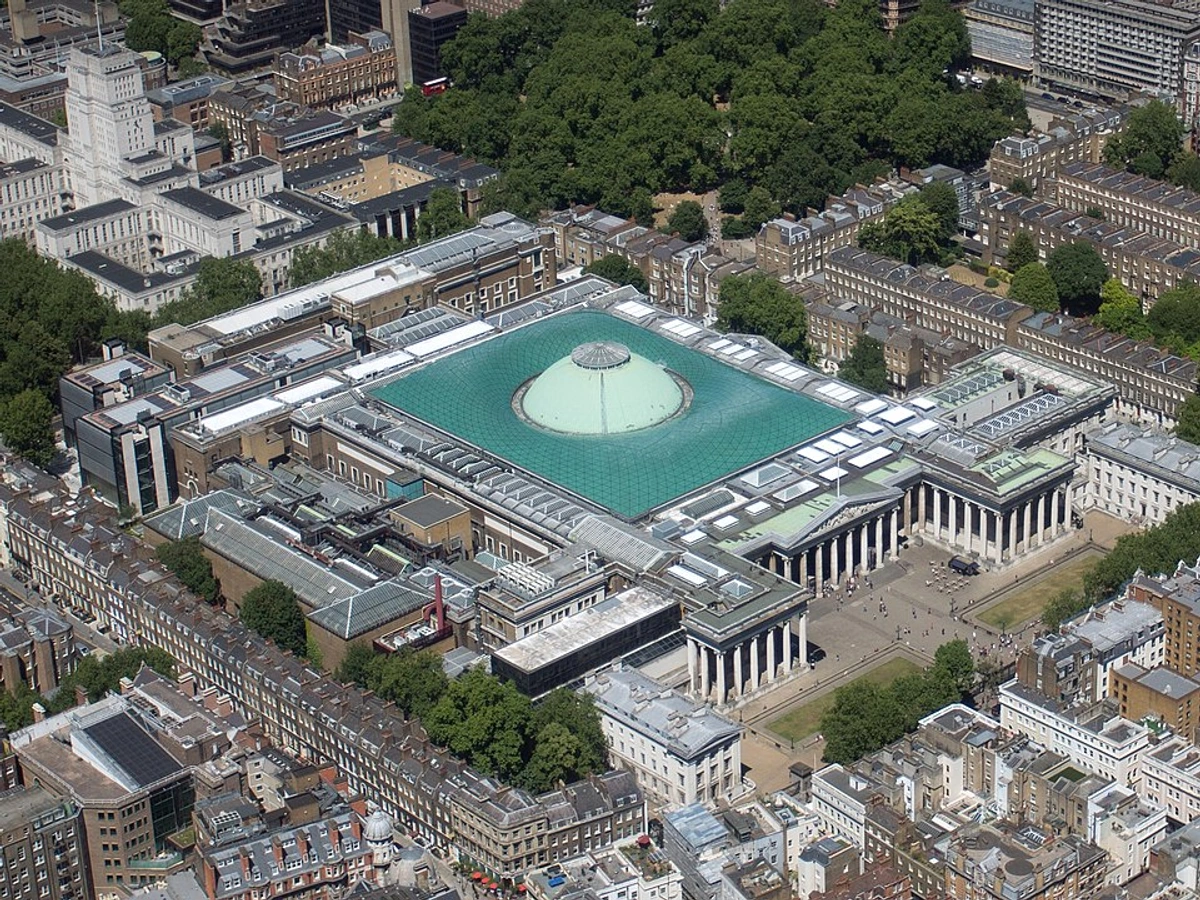 credit, licence
credit, licence- Highlights: The Rosetta Stone, Parthenon sculptures (aka the Elgin Marbles), Egyptian mummies galore, the Sutton Hoo helmet, the Lewis Chessmen, Samurai armor, plus incredible collections from Africa, Oceania, and the Americas. Like the National Gallery, entry to the main collection is free. It's enormous – pick your battles! You could spend a lifetime here and not see it all.
- Musée d'Orsay - Paris, FranceStep into a world bathed in light and fleeting moments. Housed in a truly stunning former Beaux-Arts railway station on the Left Bank (look up at that clock!), the Musée d'Orsay brilliantly bridges the gap between the Louvre's collection (ending around 1848) and the Centre Pompidou's modern focus (starting around 1914). This is the global epicentre for Impressionist and Post-Impressionist art – it holds the world's largest collection of these beloved masterpieces. The building itself is a huge part of the charm; seeing these vibrant, light-filled paintings under the soaring glass roof of a former train station feels perfectly fitting. It's a place that feels both grand and surprisingly accessible, filled with art that many people instantly connect with. It feels like stepping into a world bathed in light and fleeting moments. I recall being utterly captivated by the way the natural light filtered through the station's grand clock face, casting a unique glow on the Impressionist masterpieces below.
 credit, licence
credit, licence- Highlights: Seeing iconic works by Monet (Impression, soleil levant - the painting that literally gave Impressionism its name, Rouen Cathedral series), Manet (Le Déjeuner sur l'herbe - scandalous!), Degas (those dancers!), Renoir (Bal du moulin de la Galette - pure joy), Cézanne, Gauguin, Van Gogh (Starry Night Over the Rhône, intense Self-Portrait). The building itself, with its airy main hall and enormous station clock, is worth gazing at too. Check our Paris galleries guide for more. French national museums often close on Mondays.
- Gemäldegalerie - Berlin, GermanyA quiet sanctuary dedicated to the craft of painting. Part of Berlin's Kulturforum complex (near Potsdamer Platz), the Gemäldegalerie (Painting Gallery) houses one of the world's absolute top collections of European paintings from the 13th to the 18th centuries. It's renowned for the sheer quality of its holdings and the clear, systematic way the art is presented. A real treat for painting purists who appreciate thoughtful curation. For those particularly interested in German Expressionism, the nearby Brücke Museum offers a focused dive into that vital movement. The Gemäldegalerie feels like a serious, academic collection, but in the best possible way – the focus is squarely on the paintings, presented beautifully and logically, allowing for deep contemplation without distraction. It feels like a place built for serious looking and learning.
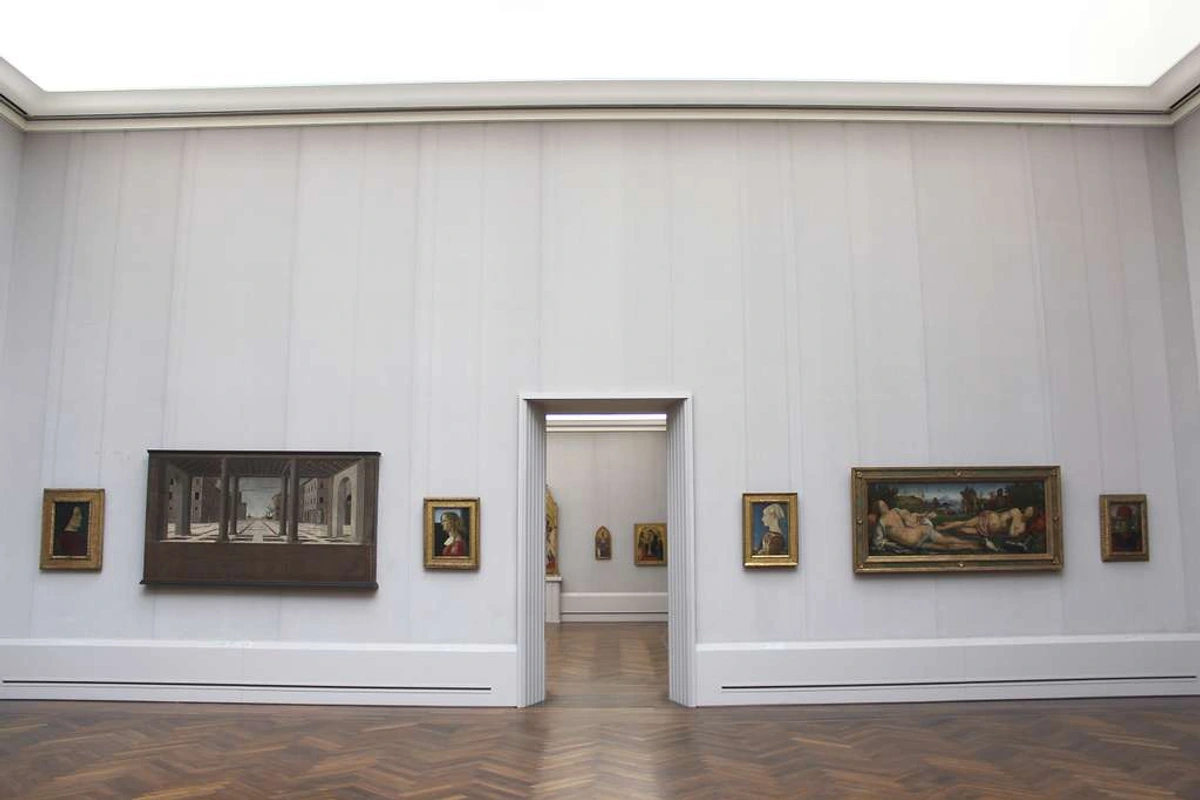 credit, licence
credit, licence- Highlights: Masterpieces by German greats like Dürer, Cranach, Holbein. Outstanding works by Netherlandish masters including Rembrandt (a large collection), Vermeer, Rubens, Van Eyck. Strong Italian section featuring Raphael, Titian, Caravaggio. Known for its thoughtful, chronological arrangement allowing you to trace artistic developments easily. Berlin itself is one of the definite best art cities in Europe, offering a vibrant mix of history and contemporary edge.
- Kunsthistorisches Museum - Vienna, AustriaStepping into a world of accumulated power and beauty. Vienna's premier Museum of Art History is where the Habsburg emperors stashed their incredible, centuries-spanning art collection. Housed in a suitably palatial building on the Ringstrasse (it mirrors the Natural History Museum opposite), it feels every bit as imperial and grand as its contents. Prepare for plush velvet and gilded frames. For fans of early 20th-century Viennese art, don't miss the Belvedere Museum (home to Klimt's The Kiss) and the Leopold Museum (a treasure trove of Egon Schiele and the Vienna Secession movement). Visiting the KHM feels like being a guest in the Habsburgs' private viewing chambers – the setting is inseparable from the collection, dripping with imperial history and a certain old-world elegance. The atmosphere here is one of immense accumulated power and beauty.
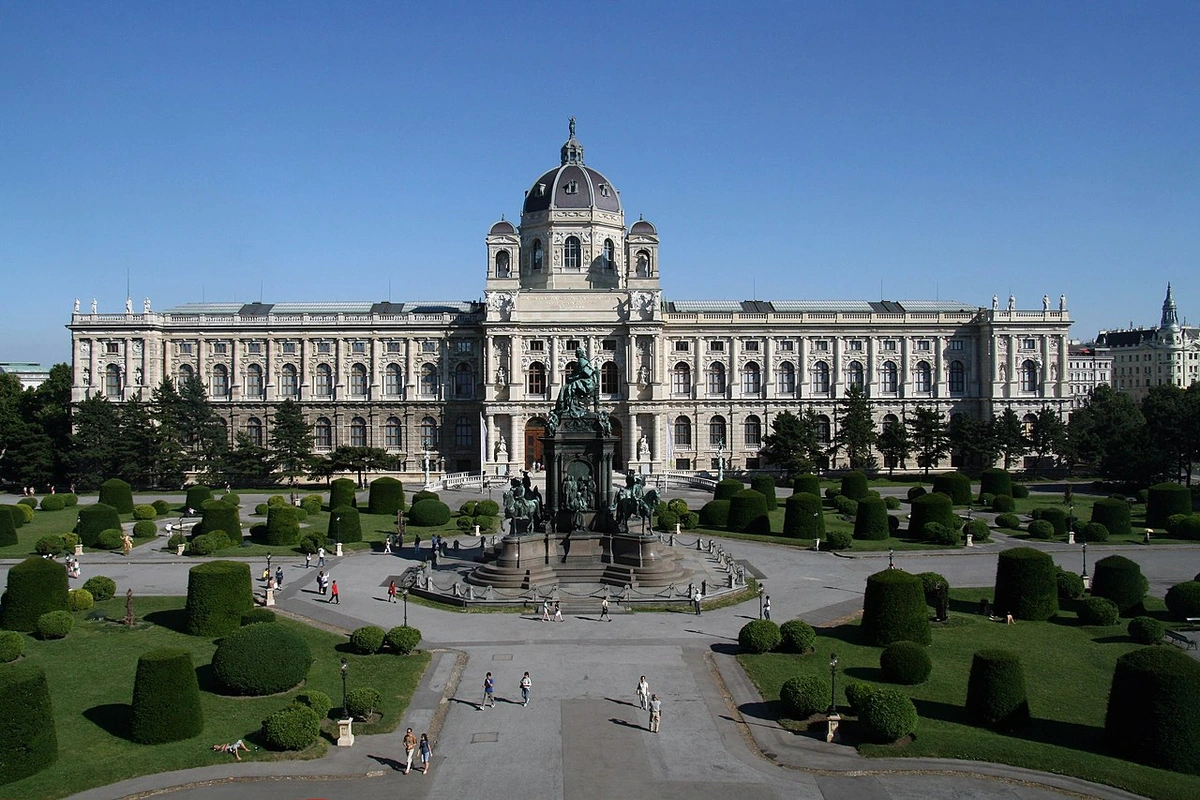 credit, licence
credit, licence- Highlights: The world's best collection of works by Pieter Bruegel the Elder (Tower of Babel, Hunters in the Snow, Peasant Wedding – they're narrative, detailed, and endlessly fascinating). Masterpieces by Vermeer (The Art of Painting), Rembrandt, Raphael, Caravaggio, Velázquez, Titian, Rubens. Plus, extensive Egyptian and Near Eastern collections, Greek and Roman Antiquities, and a fascinating Kunstkammer (cabinet of curiosities). Pure Habsburg indulgence.
- Alte Pinakothek - Munich, GermanyA classic, solid collection for serious looking. One of the oldest museums globally, the Alte Pinakothek (Old Picture Gallery) is a must-visit for lovers of Old Master paintings (roughly 14th to 18th century). It boasts particularly strong suits in Early Italian, Old Dutch, and Flemish masters. A cornerstone of Munich's excellent Kunstareal (art district), which also includes the Neue Pinakothek (19th C.), Pinakothek der Moderne (Modern/Contemporary Art & Design), and the Lenbachhaus (essential for its unparalleled collection of Blue Rider / Blauer Reiter German Expressionist works, including Kandinsky and Marc). The Alte Pinakothek feels like a classic, solid painting collection – perhaps less flashy than some, but deep and rewarding, especially if you appreciate Northern European masters. And yes, there's a lot of Rubens, which can be... an experience. It feels like a place built for serious looking and learning.
 credit, licence
credit, licence- Highlights: Key works by Dürer (including a famous Self-Portrait), Altdorfer, Rembrandt, a huge collection of Rubens (he really churned them out!), Leonardo da Vinci (Madonna of the Carnation), Raphael, Titian. It's a deep dive into the foundations of European painting.
- Thyssen-Bornemisza National Museum - Madrid, SpainA highly curated, personal history of art. Completing Madrid's "Golden Triangle of Art" (alongside the Prado and Reina Sofía), the Thyssen-Bornemisza offers a fascinating, whistle-stop journey through Western art history, from the 13th century right up to the late 20th. What makes it special? It originated from a massive private collection assembled by Baron Thyssen-Bornemisza and brilliantly fills the historical gaps left by its two heavyweight neighbours. Visiting feels like walking through a highly curated, personal history of art – it's less overwhelming than the Prado but offers incredible breadth, making connections across centuries and styles feel surprisingly natural.
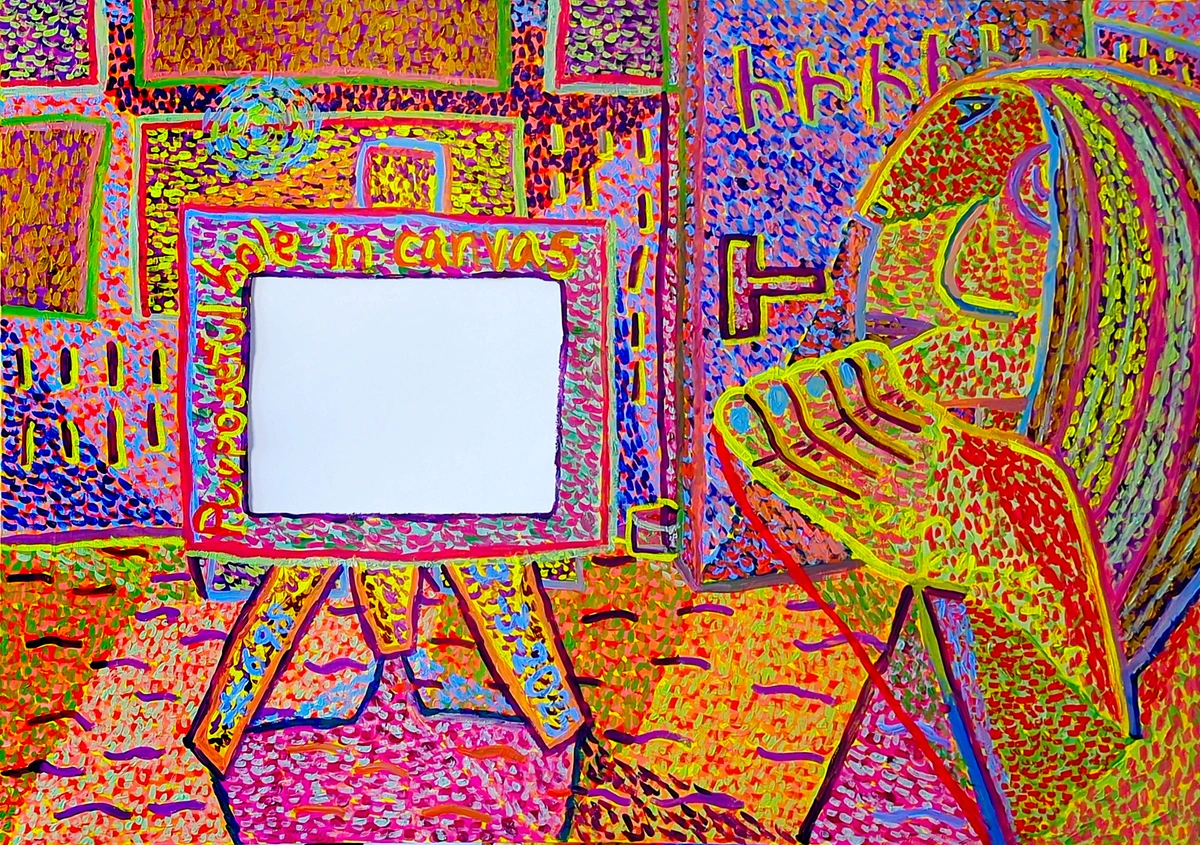
- Highlights: Italian primitives, Early Netherlandish painting (Van Eyck, Memling), German Renaissance (Holbein), Dutch Golden Age, Impressionism (Monet, Renoir, Degas), German Expressionism (Kirchner, Nolde), Russian Constructivism, Pop Art (Lichtenstein). It's like a perfectly curated greatest hits album of Western art – fantastic for seeing the big picture and how art styles evolved over time.
Focus on Modern & Contemporary Art: Where Things Get Weird (and Wonderful)
Europe isn't just about dusty Old Masters in gilded frames (though we love those too!). It's a powerhouse for modern art and contemporary art, often housed in buildings that are architectural statements in their own right. These represent some of the top contemporary art museums in Europe for diving into the often challenging, sometimes bizarre, but always thought-provoking art of the 20th century and beyond. Prepare to have your perceptions shifted, maybe even pleasantly scrambled. Engaging with contemporary art can feel like stepping into a conversation you don't quite understand yet, but that's part of the thrill – it asks you to think, to feel, and to question. As an artist, seeing how others push boundaries, experiment with types of artwork, and respond to the world around them is incredibly stimulating. It directly fuels my own thinking about what is art today and how I want my own artist statement to resonate. Many of these institutions are also at the forefront of integrating digital art, virtual reality (VR) experiences, and interactive installations into their displays, reflecting the ever-evolving nature of artistic expression. Check out our guide to the best museums for modern art or best galleries for modern art for even more options globally. Keep an eye out for works by influential living artists like Germany's Gerhard Richter, known for his diverse styles from photorealism to abstraction, or Danish-Icelandic artist Olafur Eliasson, whose large-scale installations often play with light, perception, and the environment. I once stood in front of a contemporary piece that was literally just a pile of candy, and my first thought was, "Is this art? Or is it just... a snack?" It made me laugh, then think, and then realize that's exactly the point – it challenges your assumptions and invites you to play along.
- Tate Modern - London, UKThe vibrant, beating heart of the contemporary art world. Housed in the colossal former Bankside Power Station on the Thames (opposite St. Paul's), Tate Modern is a global magnet for modern and contemporary art lovers (tracking art from roughly 1900 to yesterday). Its vast Turbine Hall hosts enormous, often jaw-dropping installations that change regularly. The Blavatnik Building extension added even more gallery space and killer viewing terraces overlooking the city. The feeling here is one of raw, industrial scale meeting cutting-edge creativity. It's a place that feels alive and constantly changing, reflecting the dynamic nature of the art it houses. And the views from the top are a bonus!credit, licence
- Highlights: Seriously strong collections covering Surrealism, Abstract Expressionism, Pop Art, Minimalism, Conceptual Art, and what's happening right now globally. Major works by heavyweights like Picasso, Dali, Rothko (discover Rothko here!), Warhol, Beuys, Bourgeois. Like its sibling the National Gallery, entry to the main collection displays is free. For more London options, see our London galleries guide.
- Centre Pompidou - Paris, FranceAn inside-out machine for culture. You absolutely cannot miss it. With its radical "inside-out" architecture (all pipes, ducts, and escalators defiantly displayed on the exterior) designed by Renzo Piano and Richard Rogers, the Pompidou is a Beaubourg landmark and a bold statement. Inside, it houses the Musée National d'Art Moderne, France's national treasure trove of modern and contemporary art, plus a huge public library and a music research centre (IRCAM). Visiting feels like stepping into a machine for culture – the architecture is as much the exhibit as the art. It's vibrant, sometimes chaotic, and always stimulating, offering a panoramic view of 20th and 21st-century creativity. It feels like a living, breathing cultural organism.
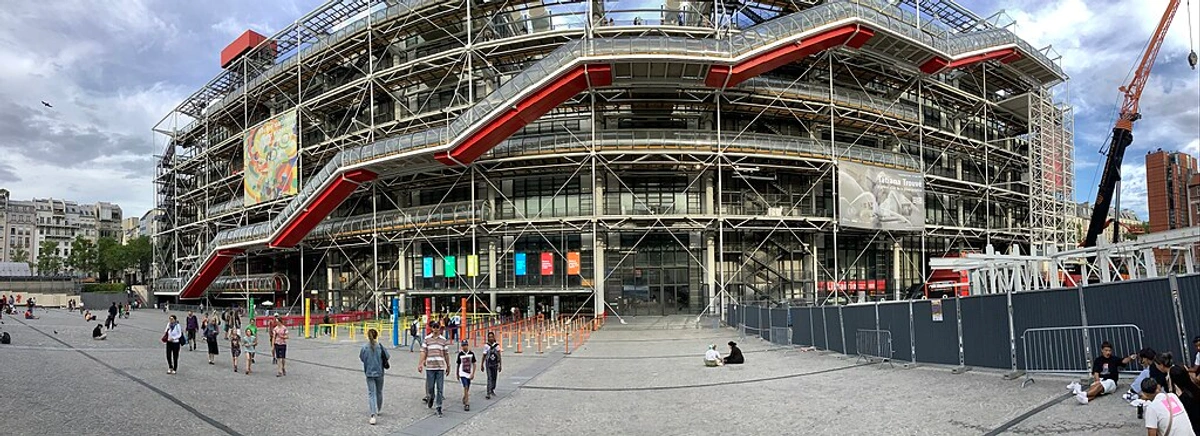 credit, licence
credit, licence- Highlights: Traces the wild ride of 20th and 21st-century art – Fauvism, Cubism, Surrealism, right up to contemporary stars. Major holdings of Matisse (dive into Matisse here!), Picasso (explore Picasso!), Kandinsky, Ernst, Duchamp, Brancusi. Plus strong design and architecture collections. Bonus: killer panoramic views of Paris from the top-floor escalator ride.
- Museo Reina Sofía - Madrid, SpainWhere history and contemporary issues collide. The third crucial point of Madrid's "Golden Triangle of Art" (alongside the Prado and Thyssen-Bornemisza), the Reina Sofía is Spain's national museum dedicated to 20th-century and contemporary art. It occupies a former 18th-century hospital, dramatically expanded by a sleek modern wing designed by Jean Nouvel, creating a compelling dialogue between old and new architecture. The atmosphere here is dominated by the presence of Guernica – the room feels hushed and reverent, a powerful reminder of art's ability to bear witness to history. The rest of the museum offers a fascinating, sometimes challenging, look at Spain's modern artistic journey. It feels like a place where history and contemporary issues collide.
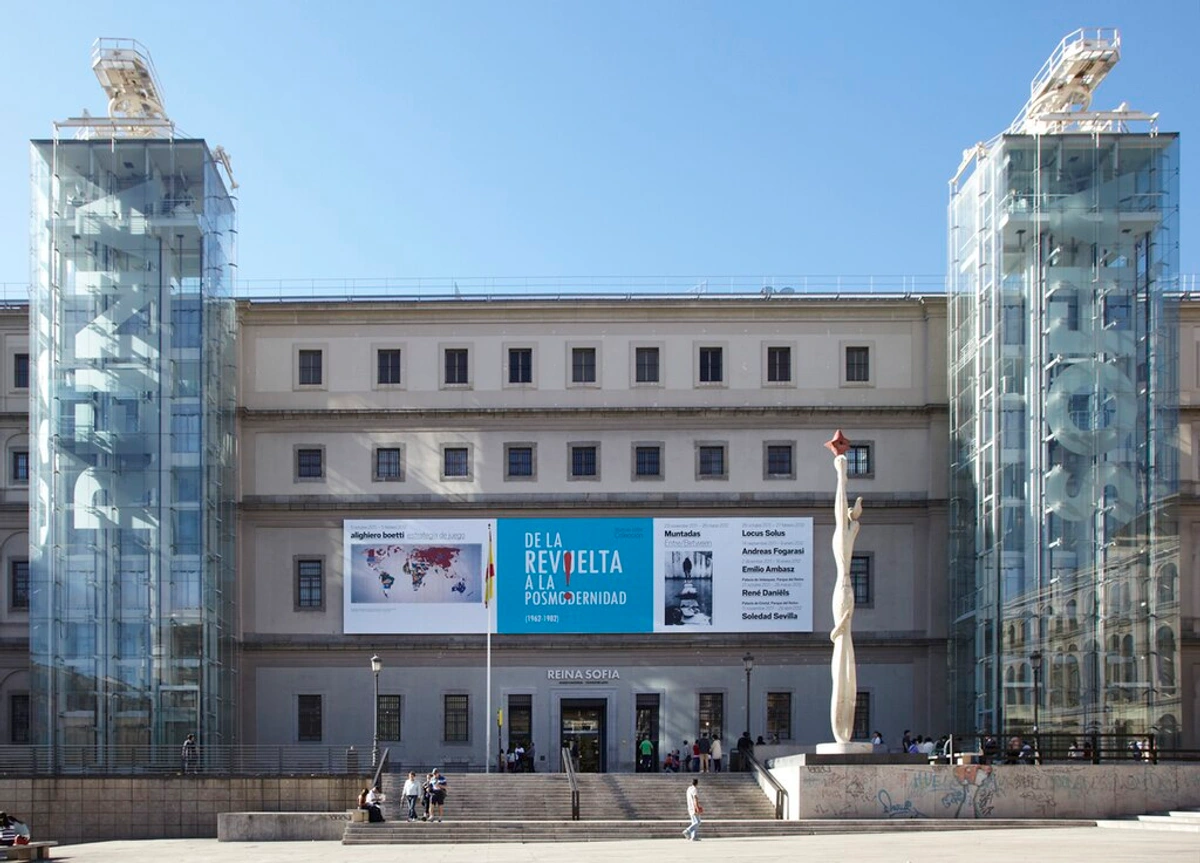 credit, licence
credit, licence- Highlights: Its undisputed, soul-shaking centerpiece is Picasso's monumental anti-war masterpiece, Guernica. Seeing its scale and power in person is a powerful, unforgettable experience. Also boasts significant collections of Salvador Dalí and Joan Miró, plus works by Spanish modernists like Juan Gris, Antoni Tàpies, and key international contemporary figures. It's a deep dive into the Spanish contribution to modernism.
- Fondation Beyeler - Riehen/Basel, SwitzerlandA peaceful, refined harmony of art, architecture, and nature. Nestled in a serene park just outside Basel, this stunning museum, designed by Renzo Piano (him again!), houses the exceptional private collection of gallerists Hildy and Ernst Beyeler. It's famed for its intimate feel, the beautiful way it seamlessly blends world-class art, sensitive architecture, and natural surroundings, and the sheer consistent quality of the works. Hosts superb temporary exhibitions too. Visiting feels incredibly peaceful and refined. The art is presented with such care, and the views of the park through the large windows create a constant dialogue between inside and out. It's a truly special place that feels more like a large, art-filled home than a public institution.credit, licence
- Highlights: A murderer's row of modern and contemporary masters: Monet (gorgeous water lilies in a dedicated room overlooking a pond), Cézanne, Van Gogh, Picasso, Matisse, Rousseau, Mondrian, Klee, Rothko, Warhol, Bacon, Giacometti. Also includes ethnographic art from Africa and Oceania that deeply inspired many modern artists. Basel is a major art hub, especially during the annual Art Basel fair (find tips for visiting art fairs here).
- Stedelijk Museum - Amsterdam, NetherlandsEnergetic, diverse, and embracing the new. Amsterdam's go-to institution for modern and contemporary art and design. Conveniently located on Museumplein, practically neighbours with the Rijksmuseum and Van Gogh Museum. Its collection covers major movements from the late 19th century right up to the present day. You can't miss its distinctive modern extension, affectionately (or perhaps not so affectionately) nicknamed "the bathtub." The Stedelijk feels energetic and diverse, reflecting the often experimental nature of modern and contemporary art. It's a place where you might encounter something truly unexpected, from a classic De Stijl painting to a challenging video installation.
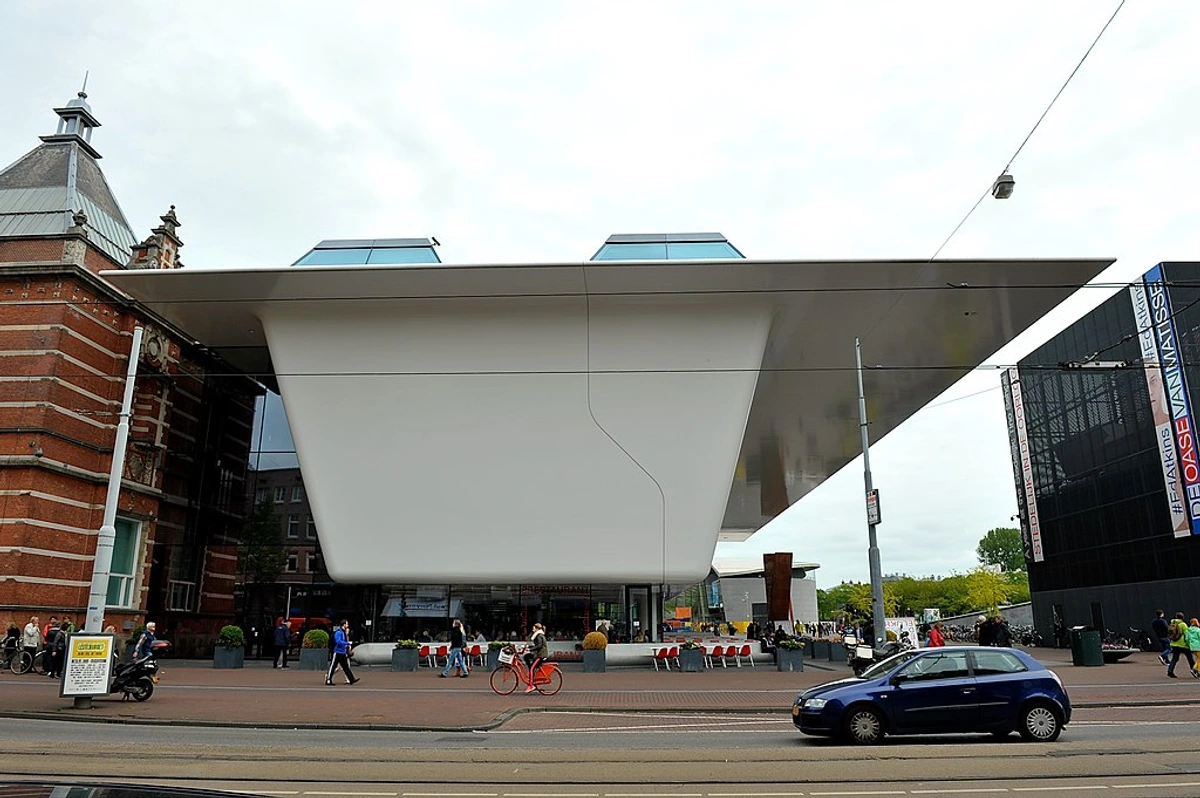 credit, licence
credit, licence- Highlights: Strong focus on De Stijl (Mondrian, Rietveld), Cobra, Abstract Expressionism, Pop Art. Holds a significant and influential design collection. Key works by Malevich, Chagall, Warhol, Kiefer (learn about Kiefer here!), Koons, and important Dutch contemporary artists. A vital stop in one of the best art cities in the Netherlands.
- Hamburger Bahnhof – Museum für Gegenwart – Berlin, GermanyA vast industrial space for bold statements. Housed in a grand former railway station near Berlin Central Station (Hauptbahnhof), the Hamburger Bahnhof is Berlin's main public hub for contemporary art, focusing primarily on works from the 1960s onwards. It draws heavily from the Nationalgalerie collection and significant private holdings on long-term loan (like the Marx, Flick, and Marzona collections). A very different, but equally compelling Berlin experience can be found at the Sammlung Boros, a private collection of contemporary art dramatically housed in a former WWII bunker (visits by appointment only!). The Hamburger Bahnhof feels vast and industrial, a perfect backdrop for large-scale contemporary works. It's a place where the art often feels raw and directly engaged with recent history and current issues.
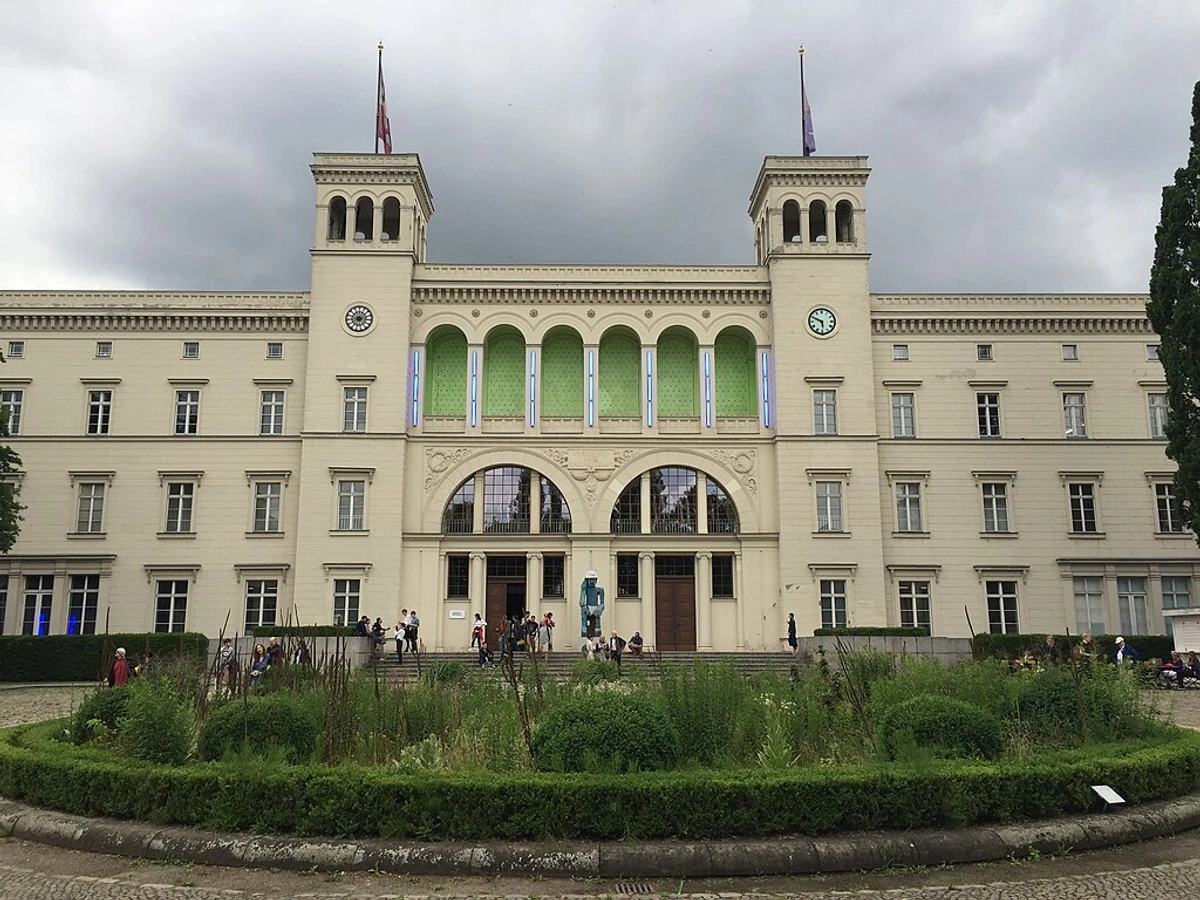 credit, licence
credit, licence- Highlights: Major works and installations by Joseph Beuys, Andy Warhol, Cy Twombly, Anselm Kiefer, Rebecca Horn. Expect large-scale installations, video art, and a deep dive into the art currents since the mid-20th century. Berlin's strength as one of the best art cities is undeniable.
- Kiasma Museum of Contemporary Art - Helsinki, FinlandSleek, modern, and integrated into its urban environment. Part of the Finnish National Gallery, Kiasma, housed in a dynamic, curving zinc-and-glass building designed by Steven Holl, focuses squarely on contemporary art from Finland and nearby Nordic/Baltic regions, alongside international names. Its prime location near Helsinki's main railway station makes it easily accessible. Kiasma feels sleek and modern, with spaces that encourage interaction and contemplation of contemporary issues. It's a great entry point into the vibrant Nordic contemporary scene, often showcasing experimental and multimedia art that challenges traditional notions.
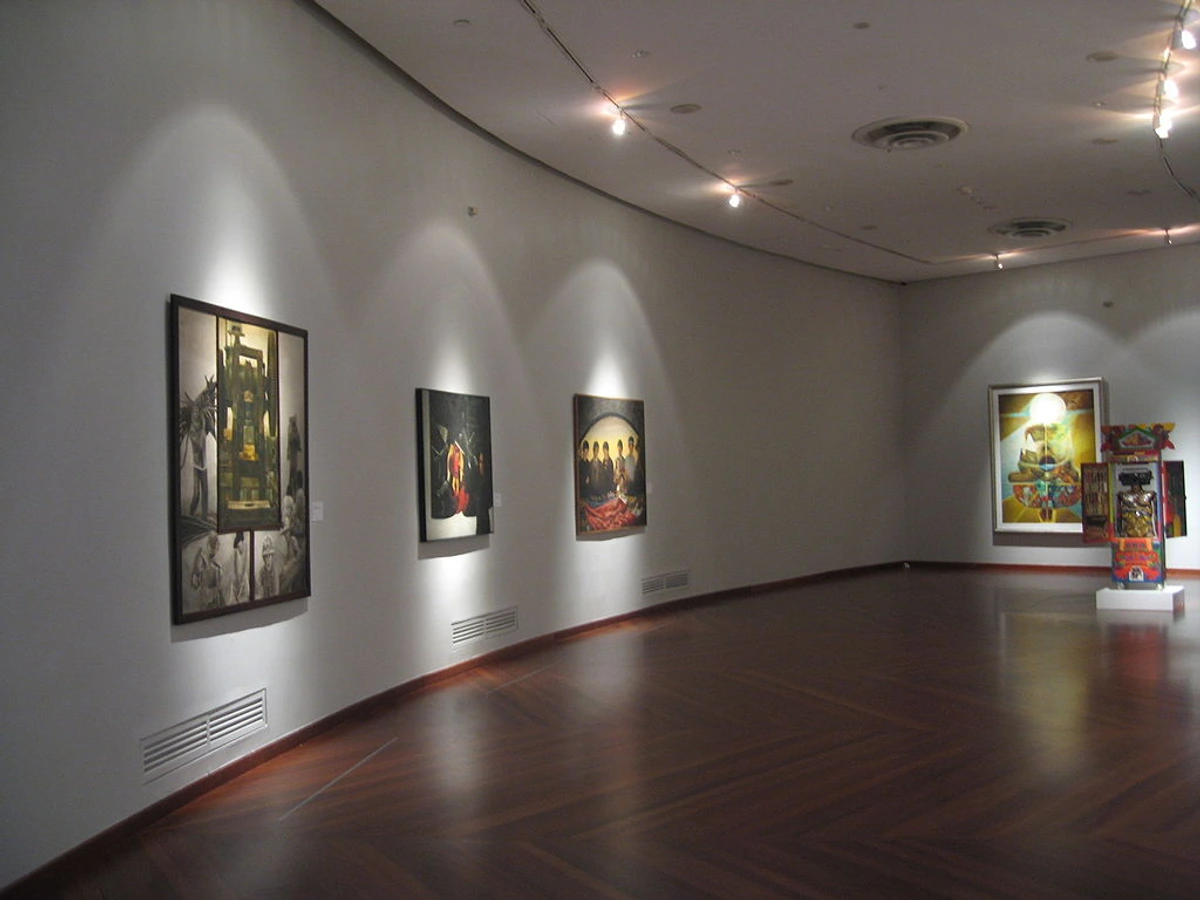
- Highlights: Features a constantly rotating selection from its collection (post-1960s) and engaging temporary exhibitions exploring current themes and artistic practices. Known for embracing experimental and multimedia art. A great entry point into the vibrant Nordic contemporary scene.
- MUDAM (Musée d'Art Moderne Grand-Duc Jean) - Luxembourg City, LuxembourgA bold statement about the future of art, rooted in history. Sitting dramatically on the ramparts of the historic Fort Thüngen, MUDAM's building, designed by the legendary I. M. Pei (of Louvre Pyramid fame), masterfully blends historical fortifications with striking modern architecture. It's dedicated to showcasing the most adventurous trends in international contemporary art, design, and fashion. Visiting MUDAM is an experience that starts with the building itself – the dialogue between the old fort and Pei's modern structure is fascinating. Inside, the focus on cutting-edge international contemporary art feels fresh and forward-looking, a surprising find in a city known more for finance and history.
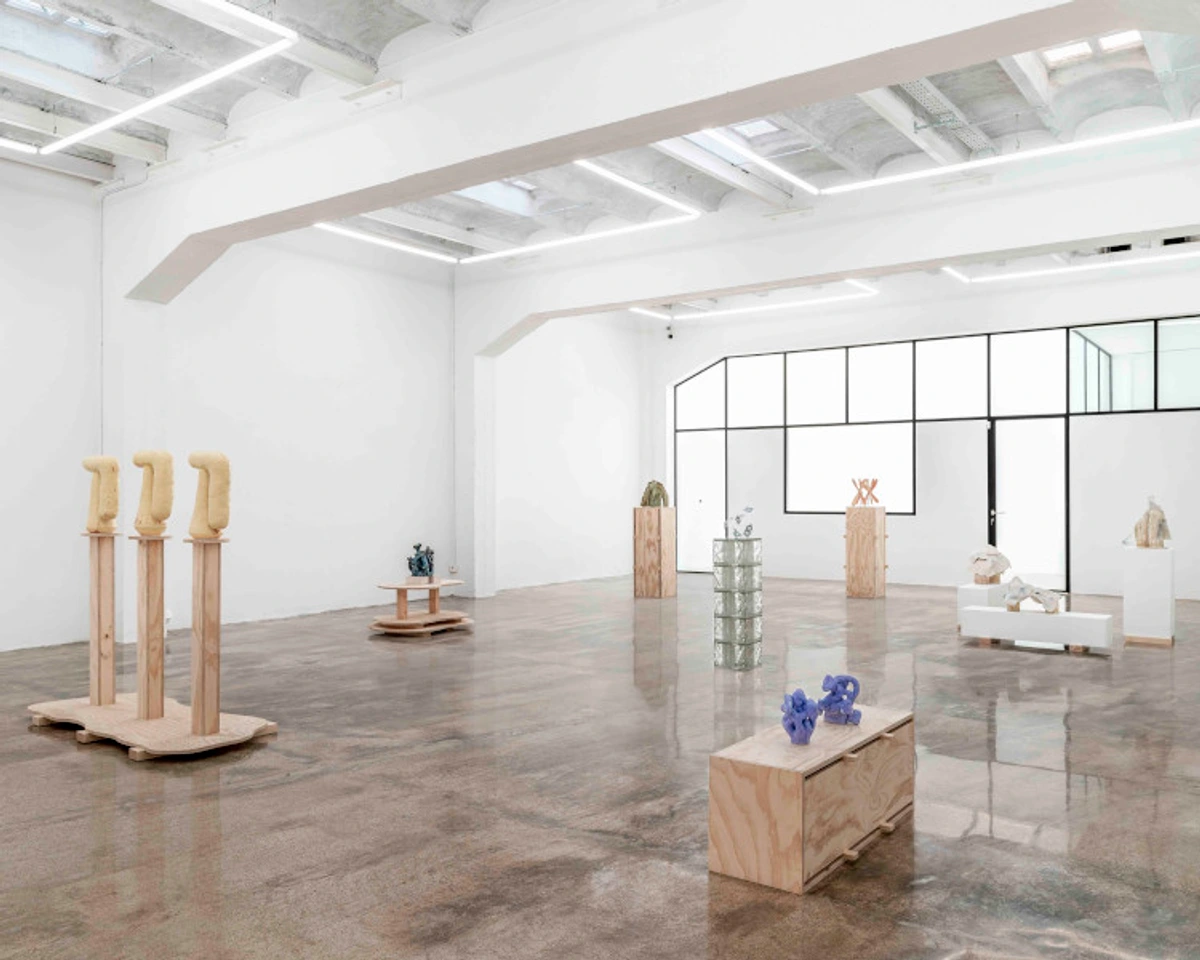
- Highlights: Focuses on international contemporary artists and cutting-edge, often thematic, temporary exhibitions. The architecture itself, with its soaring glass atrium and integration with the old fort walls, is a key feature. Offers a glimpse into forward-thinking creativity in a unique historical setting.
Specialized Collections, Regional Stars & Hidden Gems: The Joy of Finding Local Art Gems & Lesser-Known Treasures
While the huge encyclopedic and modern art museums are rightly famous, Europe is absolutely sprinkled with countless other institutions well worth your time and attention. These places offer deeper dives, sometimes quieter contemplation, and a chance to discover art beyond the most famous names. They might focus intensely on specific artists or themes, be housed in buildings that are architectural destinations in themselves, or shine a light on art beyond the dominant capitals. Lots of these qualify as top European art museums within their specific niche or region, offering different, often more intimate, perspectives. I sometimes find myself almost apologizing (to whom? I don't know!) for loving these quiet corners more than the main halls – but why should I? Art isn't just about ticking off the 'greatest hits' checklist. Discovering something unexpected can be far more memorable. It's in these places that you might find a piece that speaks directly to you, away from the noise. It makes you think about form, material, and space in a whole new way.
Let's explore some of these different kinds of art experiences:
Single-Artist Sanctuaries: Deep Dives into Genius
Want to go really deep on one particular artistic vision? These museums offer unparalleled insight into the life and work of specific icons:
- Van Gogh Museum (Amsterdam, Netherlands): Visiting feels like walking alongside him through his struggles and triumphs. Home to the world's largest collection of paintings and drawings by Vincent van Gogh, plus works by artists who influenced him or were his contemporaries. It's an emotional journey through his turbulent life and incredible artistic evolution. Essential viewing alongside the Rijksmuseum. Book way, way in advance. Seriously, we can't stress this enough. Explore his world further in our ultimate guide to Van Gogh.
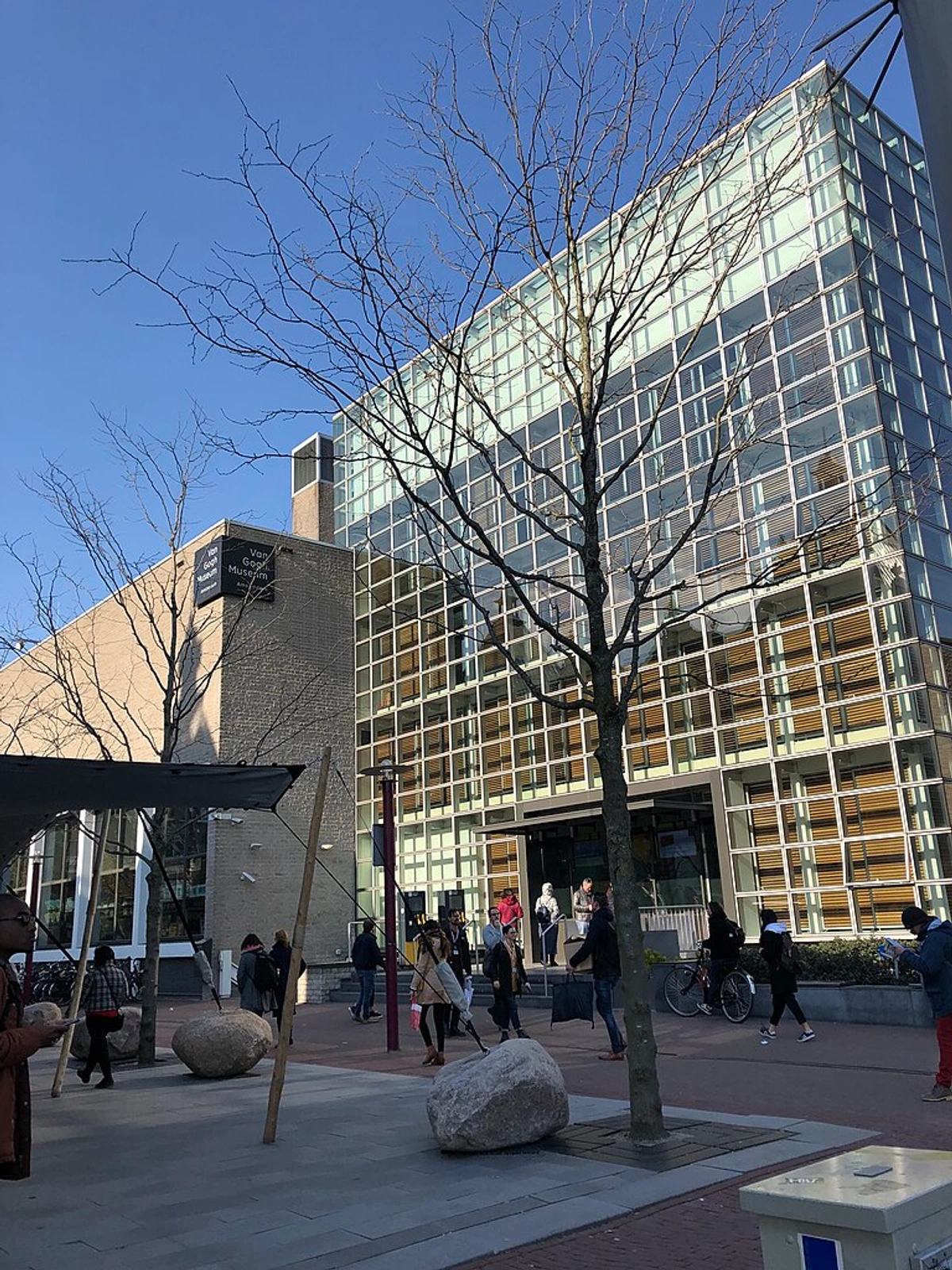 credit, licence
credit, licence - Picasso Museums (Paris, Barcelona, Málaga, Antibes): Each museum feels like a chapter in his complex story. Picasso was so astonishingly prolific, he practically requires multiple museums! The Musée National Picasso-Paris (housed in the gorgeous Hôtel Salé mansion in the Marais) and the Museu Picasso in Barcelona (focusing particularly on his early, formative years in Spain) are particularly outstanding. Each offers a different, crucial slice of his long, incredibly varied, and revolutionary career. Explore more in our guide to Picasso.
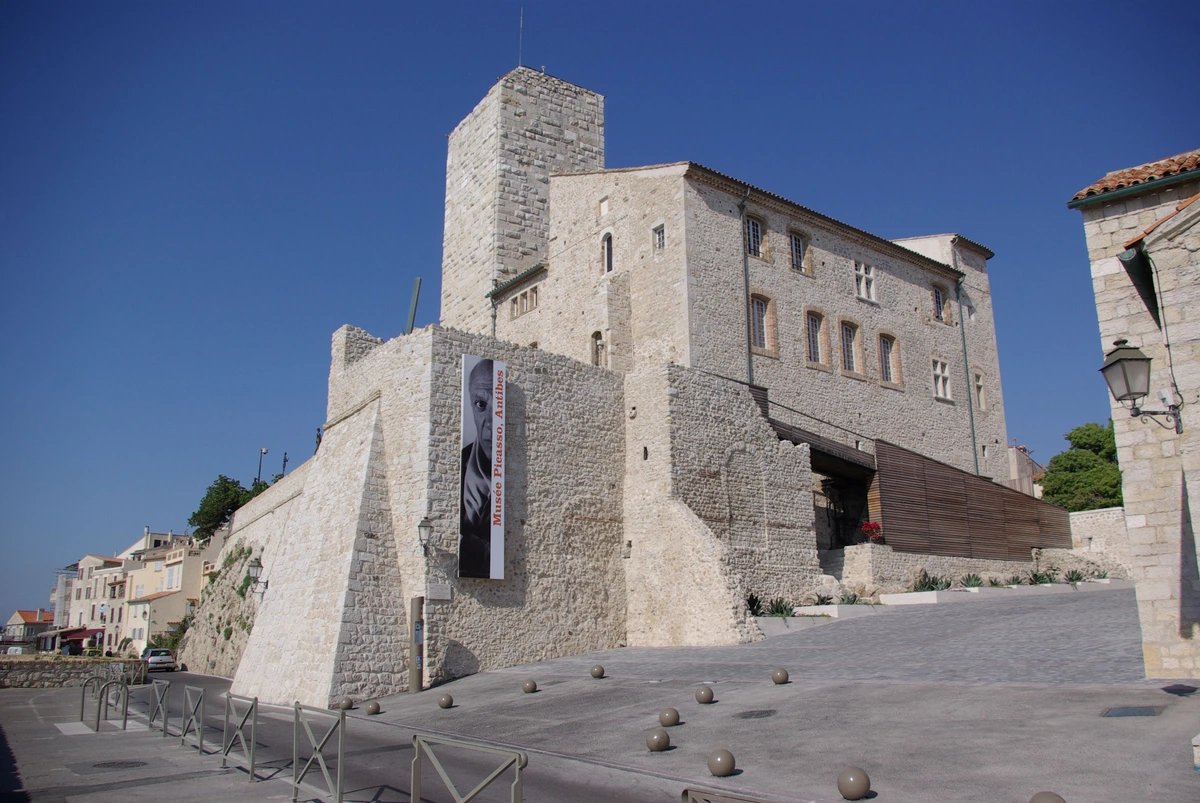 credit, licence
credit, licence - Munch Museum (Oslo, Norway): Visiting feels like a deep dive into the human psyche, sometimes uncomfortably so. Dedicated entirely to Norway's most famous artistic export, Edvard Munch. It holds multiple versions of iconic, angst-ridden works like The Scream (yes, that one), Madonna, and The Sick Child, alongside thousands of other paintings, prints, and drawings. Recently relocated to a striking, modern, leaning tower right on the Oslo waterfront (opened 2021).
 credit, licence
credit, licence - Musée Rodin (Paris, France): This place evokes a sense of stepping into the artist's world, surrounded by his powerful forms. Set in the beautiful Hôtel Biron and its surrounding gardens, where Auguste Rodin himself lived and worked. See his iconic sculptures like The Thinker, The Kiss, and the epic Gates of Hell displayed both inside the elegant mansion and scattered atmospherically throughout the lovely grounds. A wonderfully serene and evocative visit, especially on a sunny day.
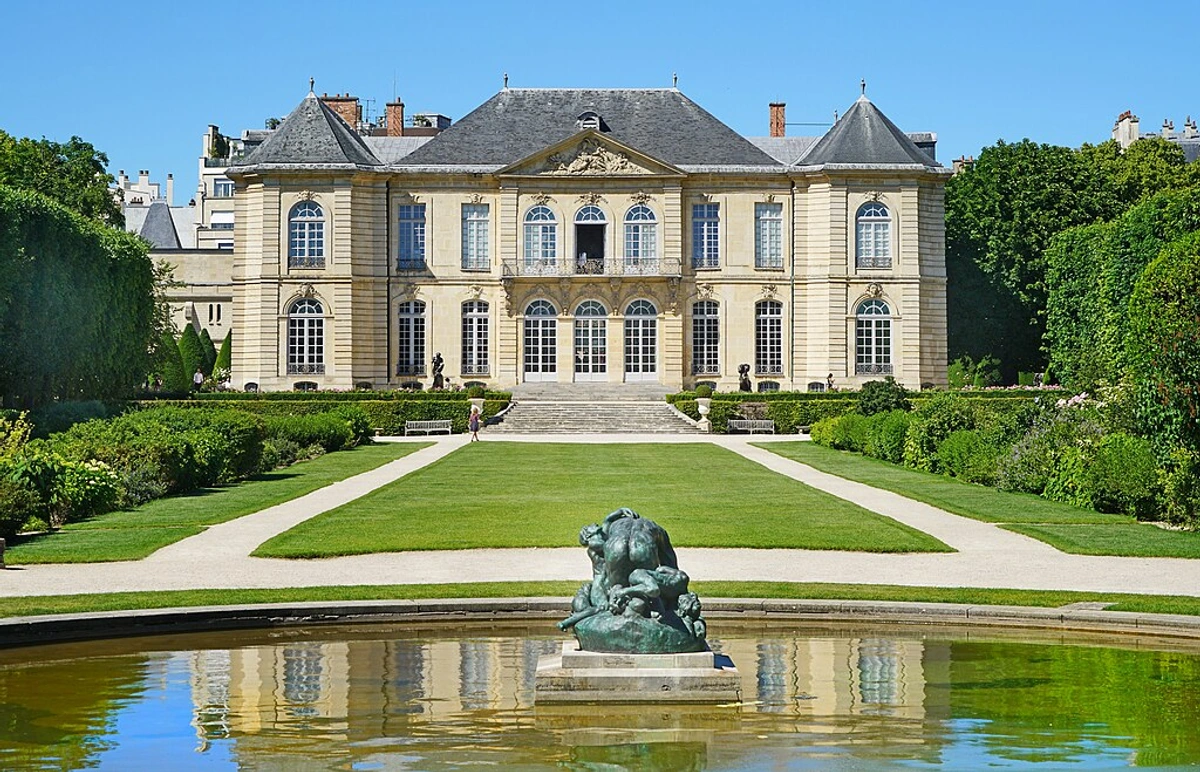 credit, licence
credit, licence - Kröller-Müller Museum (Otterlo, Netherlands): This place feels like a peaceful retreat where art and landscape are in perfect dialogue. This absolute gem holds the second-largest Van Gogh collection globally (after Amsterdam's), but it's equally renowned for its extensive sculpture garden – one of Europe's biggest and best – set idyllically within the stunning Hoge Veluwe National Park. It takes a bit of effort to get there (often involving a bike ride through the park!), but the unique combination of high-quality art and beautiful nature is truly special.
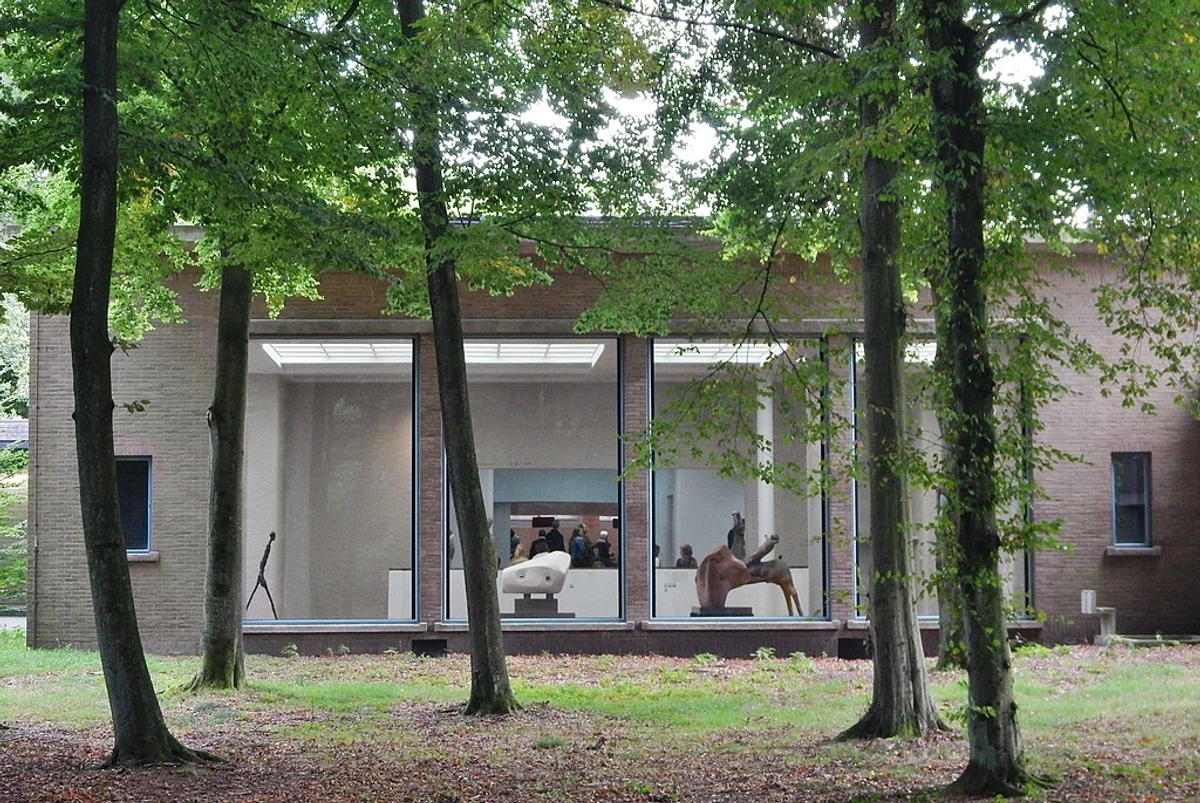 credit, licence
credit, licence
Sculpture Sanctuaries: Art in Three Dimensions
While painting often steals the limelight, Europe offers incredible spaces dedicated to the tactile, spatial world of sculpture. You'll find works spanning millennia, from classical marbles that seem to breathe, to mind-bending contemporary installations, often set in breathtaking natural or architectural environments. These are some of the best sculpture museums and parks in Europe. It's a different kind of looking, isn't it? You walk around the art, seeing how it changes with the light, how it interacts with the space – something photos just can't capture. Finding a piece tucked away in a garden can feel like a personal discovery. It makes you think about form, material, and space in a whole new way.
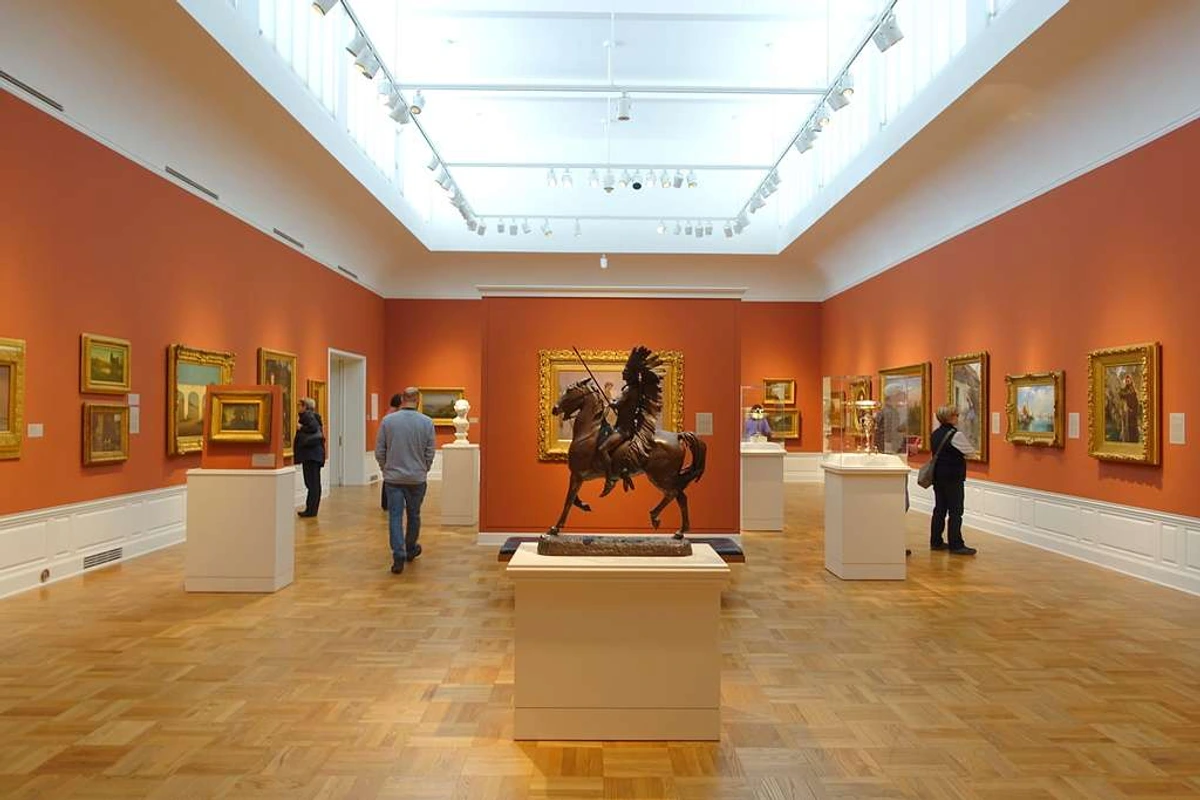
- (Re-mention) Musée Rodin (Paris, France): As noted above, this is the place to immerse yourself in Rodin's powerful bronze and marble figures, experiencing their emotional weight both indoors and in its charming garden setting. Seeing The Gates of Hell up close is an intense, unforgettable artistic encounter. It feels like witnessing raw human emotion cast in bronze.
- (Re-mention) Kröller-Müller Museum (Otterlo, Netherlands): Its sculpture garden is a massive draw, featuring major works by giants like Moore, Dubuffet, Serra, Oldenburg, Rickey, and many more, thoughtfully scattered across 25 hectares of beautiful parkland. The interplay between monumental art and the natural environment is simply magical. It really makes you think about scale and material in a new way. This place feels like a treasure hunt through a beautiful landscape.
- Middelheim Museum (Antwerp, Belgium): This unique open-air museum boasts an impressive permanent collection of modern and contemporary sculpture (over 400 works!) displayed across a beautiful public park setting. Think major names like Rodin, Moore, Hepworth, Ai Weiwei, Panamarenko, and many more. It’s a fantastic place to wander, perhaps get slightly lost, and stumble upon sculpture in a relaxed, accessible environment – a welcome change from hushed indoor museums. Plus, entry is wonderfully free! The atmosphere here is less like a museum visit and more like a lovely walk enhanced by unexpected art encounters.
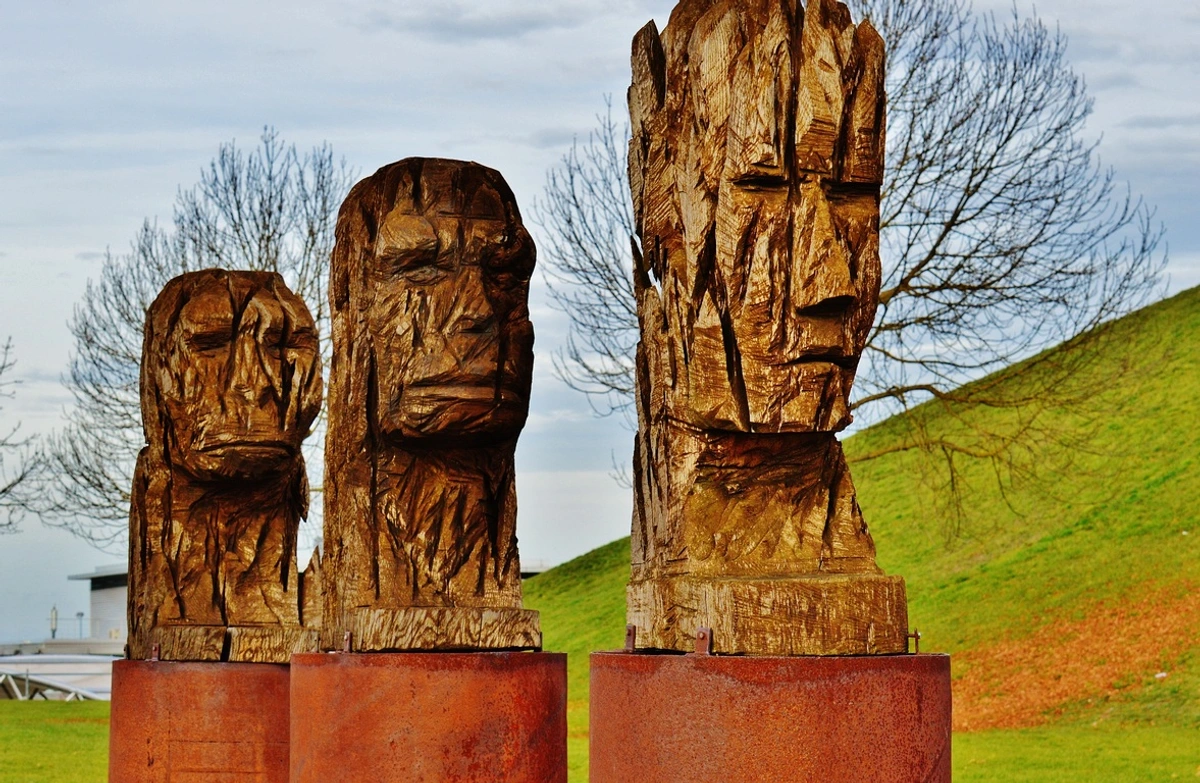
- Yorkshire Sculpture Park (West Bretton, UK): Set within the expansive historic grounds of the 18th-century Bretton Hall estate, YSP is an internationally renowned centre for modern and contemporary sculpture. It presents major temporary exhibitions by global stars alongside its significant permanent collection spread across 500 acres of rolling landscape. Expect large-scale works by artists like Barbara Hepworth, Henry Moore (who grew up nearby and whose work is extensively featured), Andy Goldsworthy, Jaume Plensa, and many others. Honestly, you could easily spend a full day here just exploring the grounds and letting the massive sculptures surprise you against the backdrop of the English countryside. It beautifully blends art, heritage, and nature, making you appreciate how sculpture interacts with its environment. This place feels like art breathing in the open air.
- Borghese Gallery and Museum (Rome, Italy): While also housing exquisite paintings (by Raphael, Caravaggio, Titian), the Borghese is world-famous and utterly unmissable for its collection of Baroque sculptures by Gian Lorenzo Bernini. Seeing his astonishingly dynamic Apollo and Daphne (marble truly seeming to turn into leaves!), his intense David, and the dramatic The Rape of Proserpina in the intimate setting of the Cardinal Borghese's villa, for which they were originally created, is simply breathtaking. It’s like seeing the art exactly where it was meant to live. Booking far in advance is absolutely, positively essential here – entry is strictly timed and limited, which actually enhances the experience once you're inside, believe me. This place offers a privileged glimpse into a moment of artistic perfection.
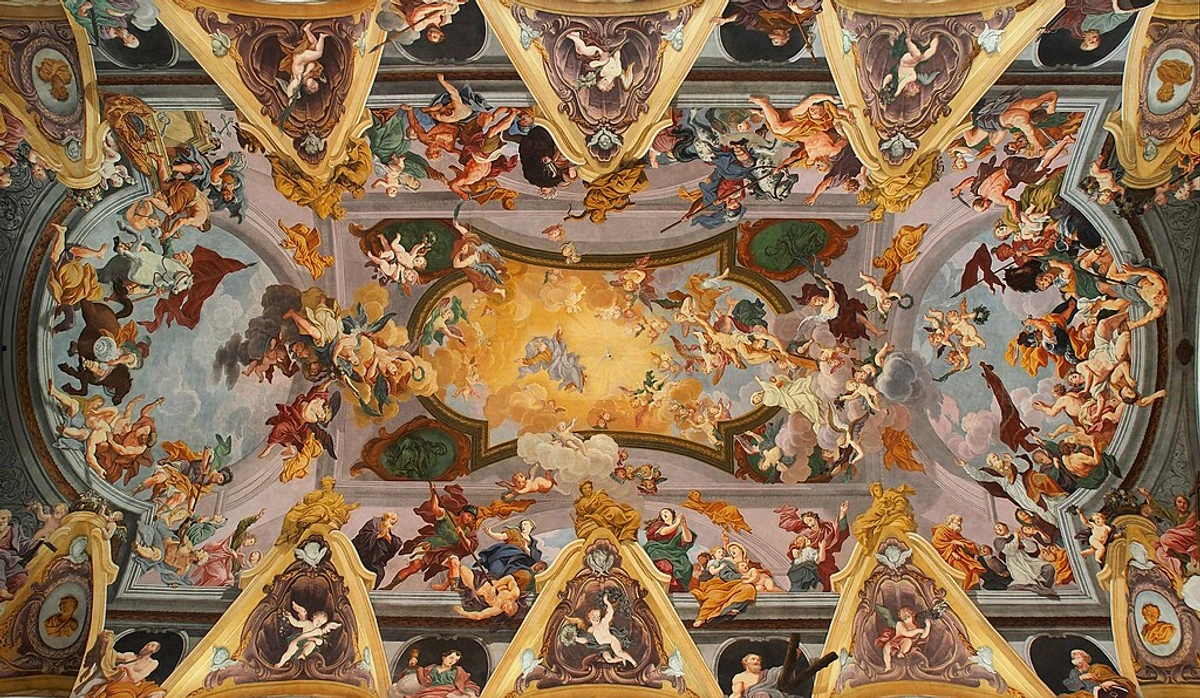 credit, licence
credit, licence
Design & Decorative Arts Delights: Beauty in Function
If furniture, fashion, ceramics, glass, jewellery, or just exquisitely crafted things are your jam, these museums are paradise. Don't overlook the influence of specific design movements like Bauhaus (look for the clean lines and functional forms) or Art Deco (think geometric patterns and luxurious materials) alongside Art Nouveau (or Jugendstil in German-speaking areas) – look for the flowing, organic lines in architecture and design at places like the Musée Horta in Brussels (the former home and studio of architect Victor Horta) or admire the legacy of Charles Rennie Mackintosh at the Glasgow School of Art (check visitor access status post-fire). These collections show that art isn't confined to painting and sculpture; it permeates every aspect of life and craft.
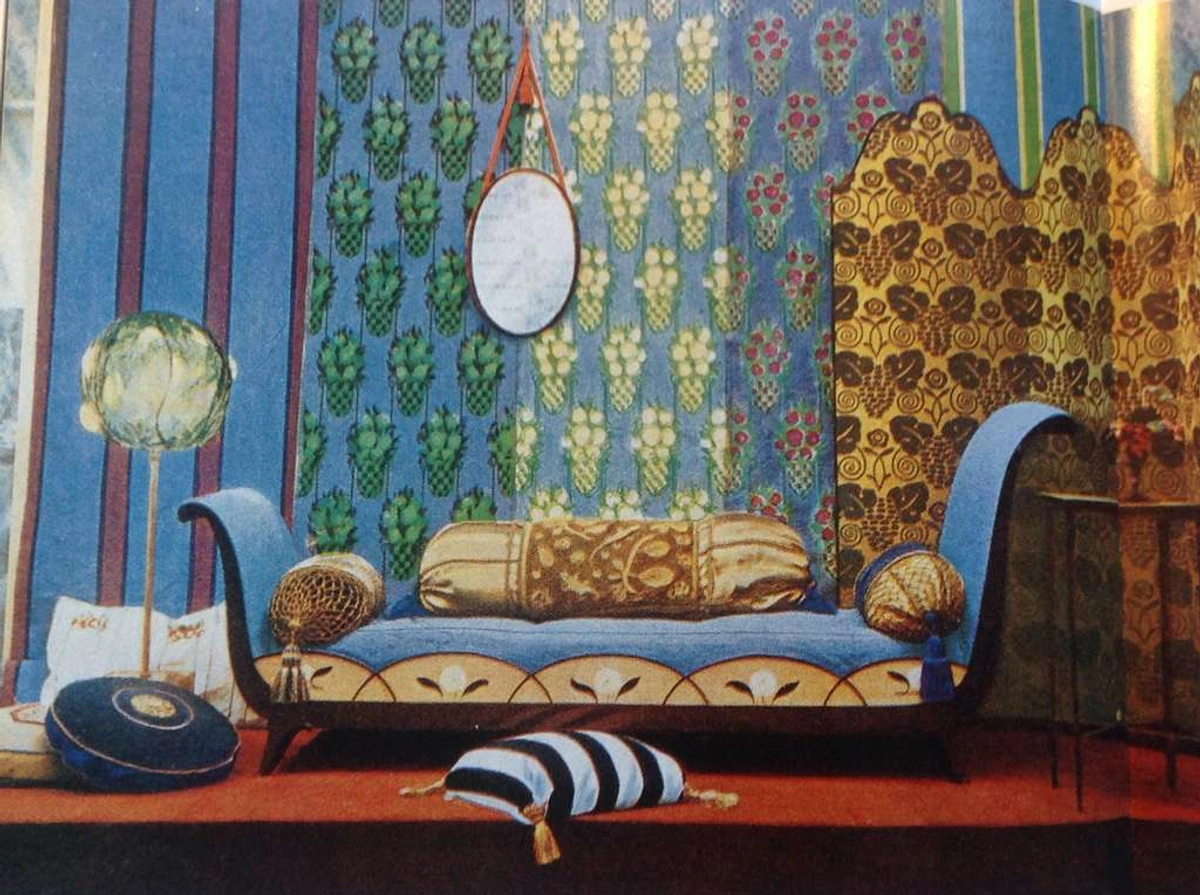
- Victoria and Albert Museum (V&A) (London, UK): This place feels like a global journey through creativity and craftsmanship. A world-leading museum dedicated to art, design, and performance. Its collections are mind-bogglingly vast and diverse, spanning centuries and continents: furniture, fashion through the ages (a huge highlight), textiles, ceramics (don't miss the ceramics galleries!), glass, metalwork, jewellery, photography, theatre costumes and set designs... you name it, they probably have an amazing example (or ten thousand). Free entry to permanent collections, but so huge you definitely need a game plan or risk blissful overwhelm. Another gem accessible from our London galleries guide.credit, licence
- Musée des Arts Décoratifs (Paris, France): This place feels like a stylish stroll through French history. Tucked neatly into a wing of the Louvre palace complex (Richelieu & Marsan wings), this museum offers a deep dive into French 'art de vivre' (the art of living). See exquisite examples of French furniture, interior design through history, fashion and textiles, jewellery, toys, advertising posters, and graphic design from the Middle Ages right up to contemporary creations. Très chic, and a fascinating insight into evolving tastes.
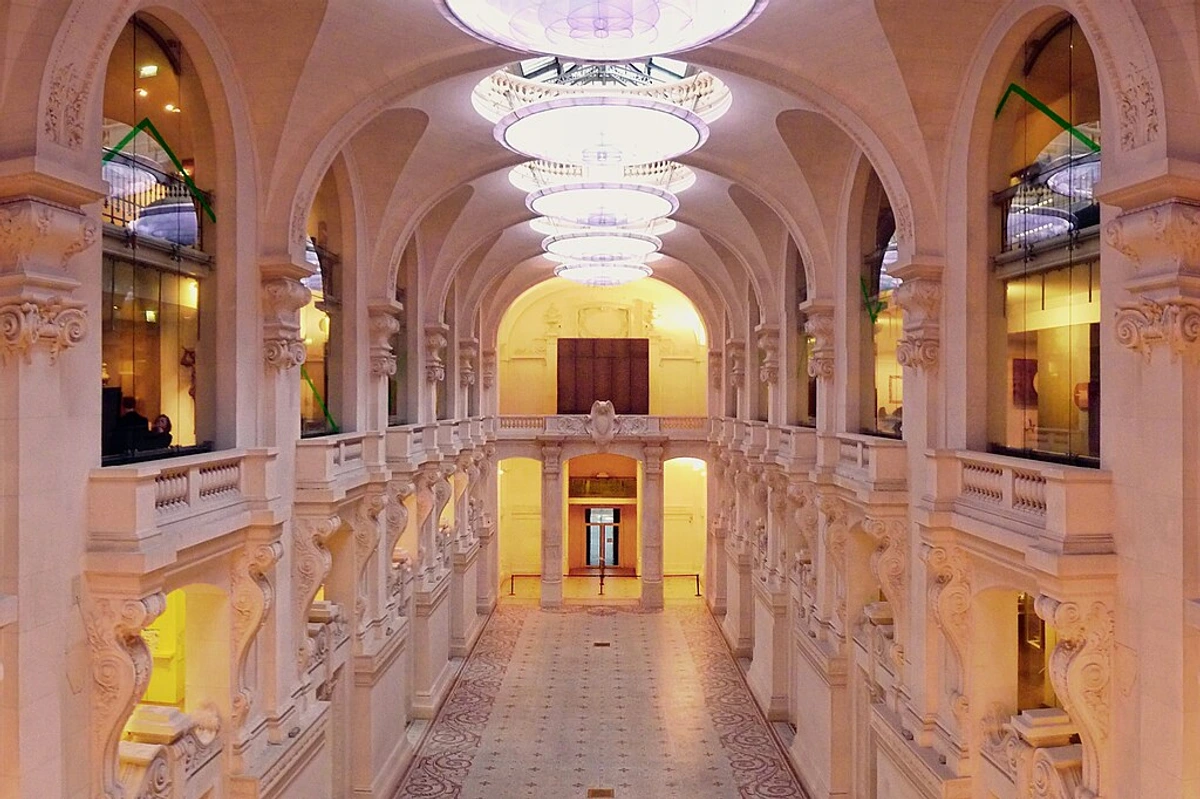 credit, licence
credit, licence - Design Museum (London, UK): This place feels like a pulse check on the creative present and future. Relocated to a landmark mid-century modernist building in Kensington (beautifully renovated by John Pawson), this museum celebrates contemporary design in all its diverse forms – architecture, fashion, graphics, product design, digital design, industrial design. Sleek, forward-looking, and often hosting thought-provoking temporary exhibitions on current design issues. Find it near the V&A in our London galleries guide.
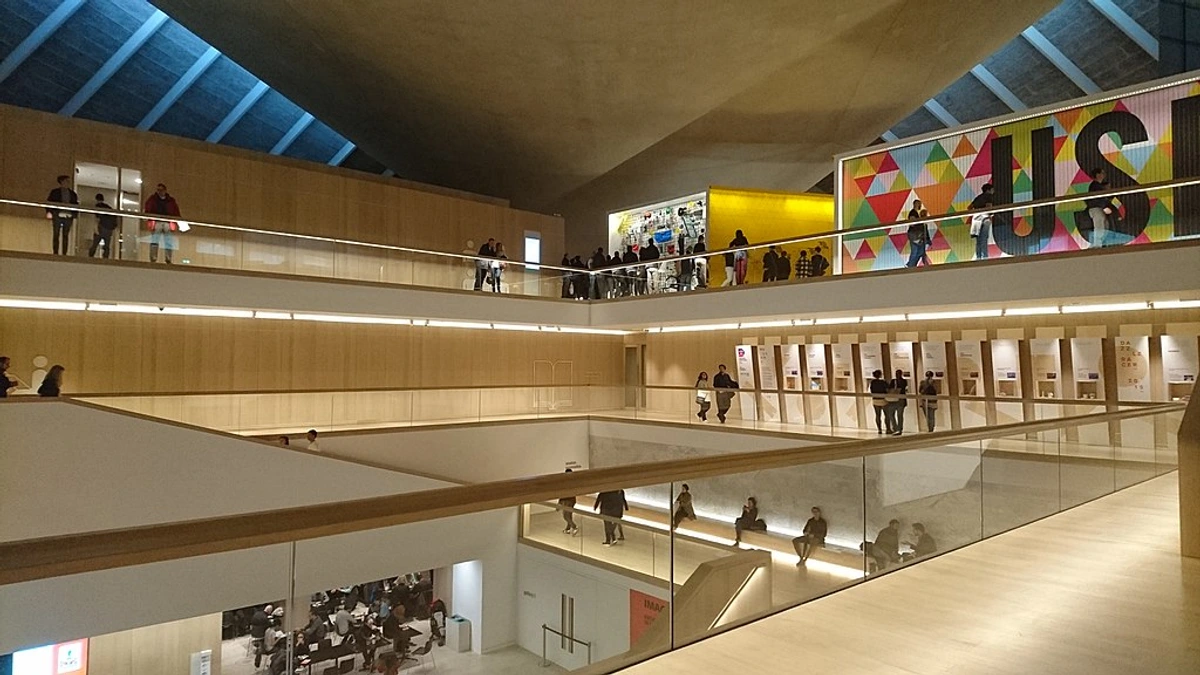 credit, licence
credit, licence - MAK – Museum of Applied Arts (Vienna, Austria): This place feels like a celebration of craft and innovation. Situated on Vienna's Ringstrasse, the MAK features extensive collections showcasing the history of applied arts – furniture, glass, ceramics, silver, and textiles – with a special emphasis on the hugely influential Wiener Werkstätte design movement and Viennese modernism (think Hoffmann, Moser). Also hosts engaging contemporary design and architecture exhibitions.
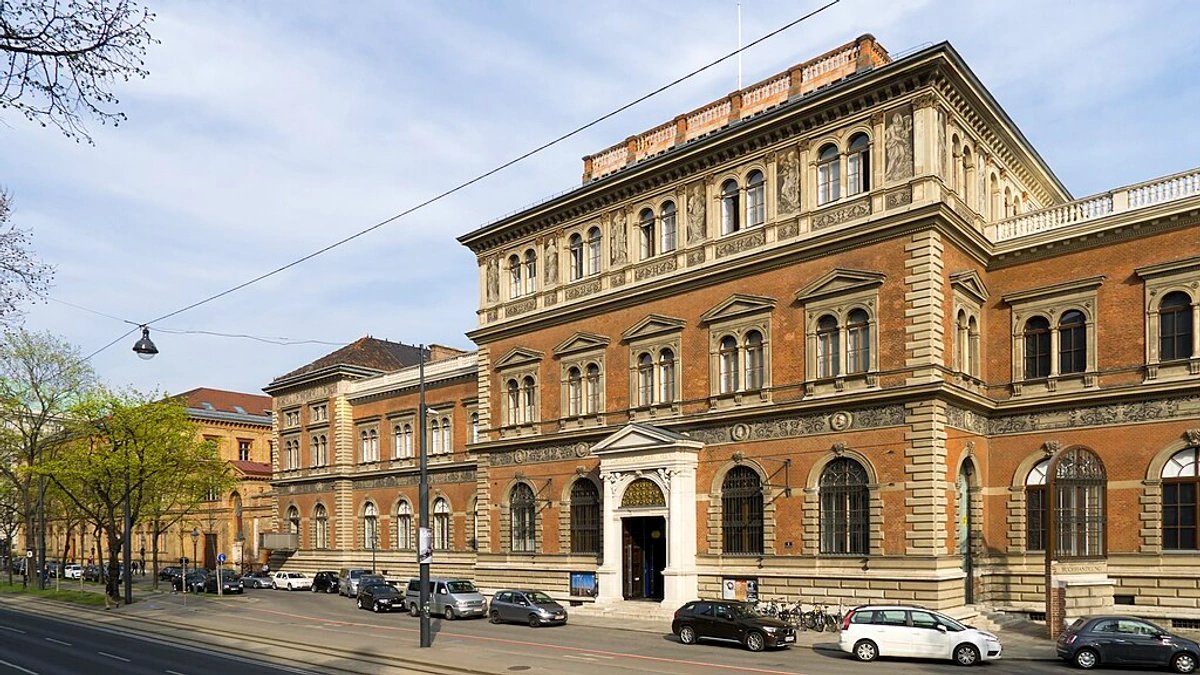 credit, licence
credit, licence - Design Museum Den Bosch ('s-Hertogenbosch, Netherlands): This place feels like a place that asks you to think about the objects that surround you every day. Focusing squarely on contemporary design and visual culture, this Dutch museum explores how design shapes our society through thought-provoking thematic exhibitions on topics ranging from data visualization to sustainable fashion. It offers a different, often more critical and socially engaged perspective compared to historical collections, and nicely complements the city's other art spots like the Noordbrabants Museum (more below) or the unique contemporary collection at the artist-run Zen Museum Den Bosch. A highlight in the best art cities in the Netherlands outside Amsterdam.
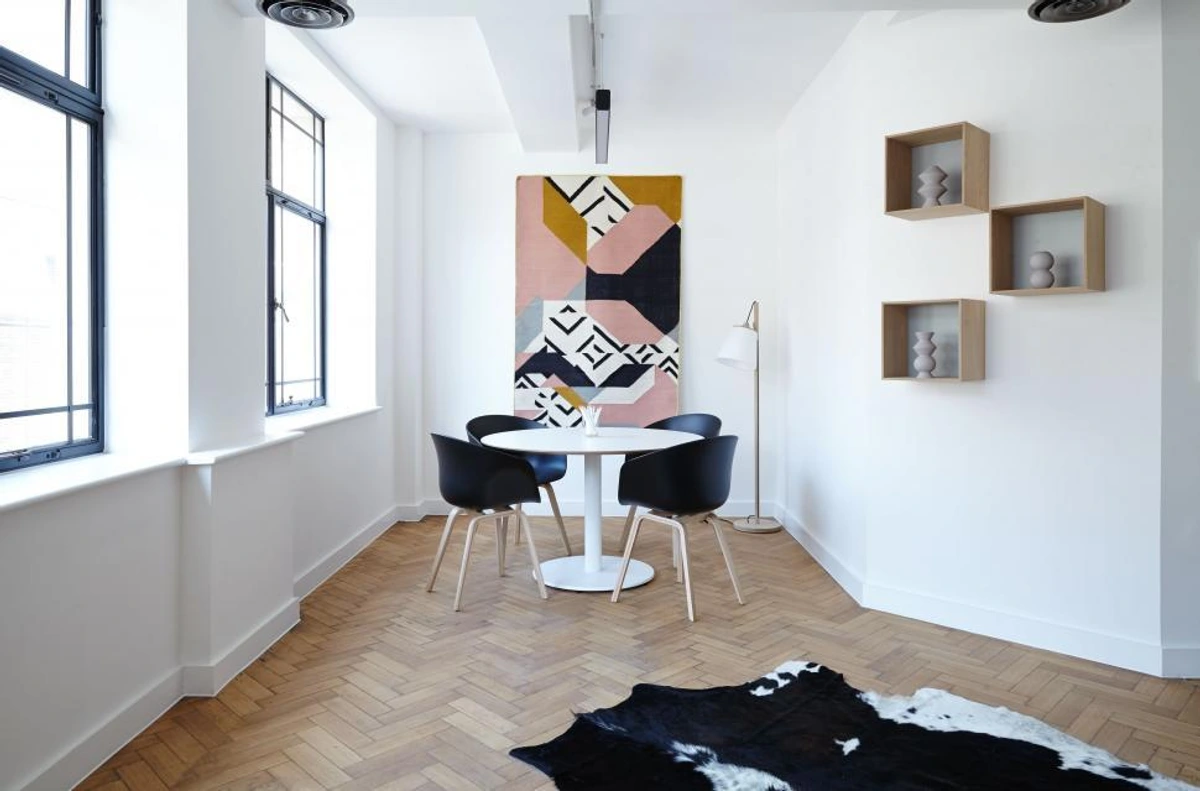
Photography Focused Frames: Capturing the Moment
For those captivated by the power of the photographic image:
- Fotografiemuseum Amsterdam (FOAM): This place feels like a vibrant hub for the ever-evolving medium of photography. An internationally acclaimed hotspot located on Amsterdam's Keizersgracht, showcasing all facets of photography – fine art, documentary, historical, fashion, contemporary, emerging talent. Features established masters alongside fresh, often surprising new voices in a dynamic, multi-level canal house space. Always something interesting to see.
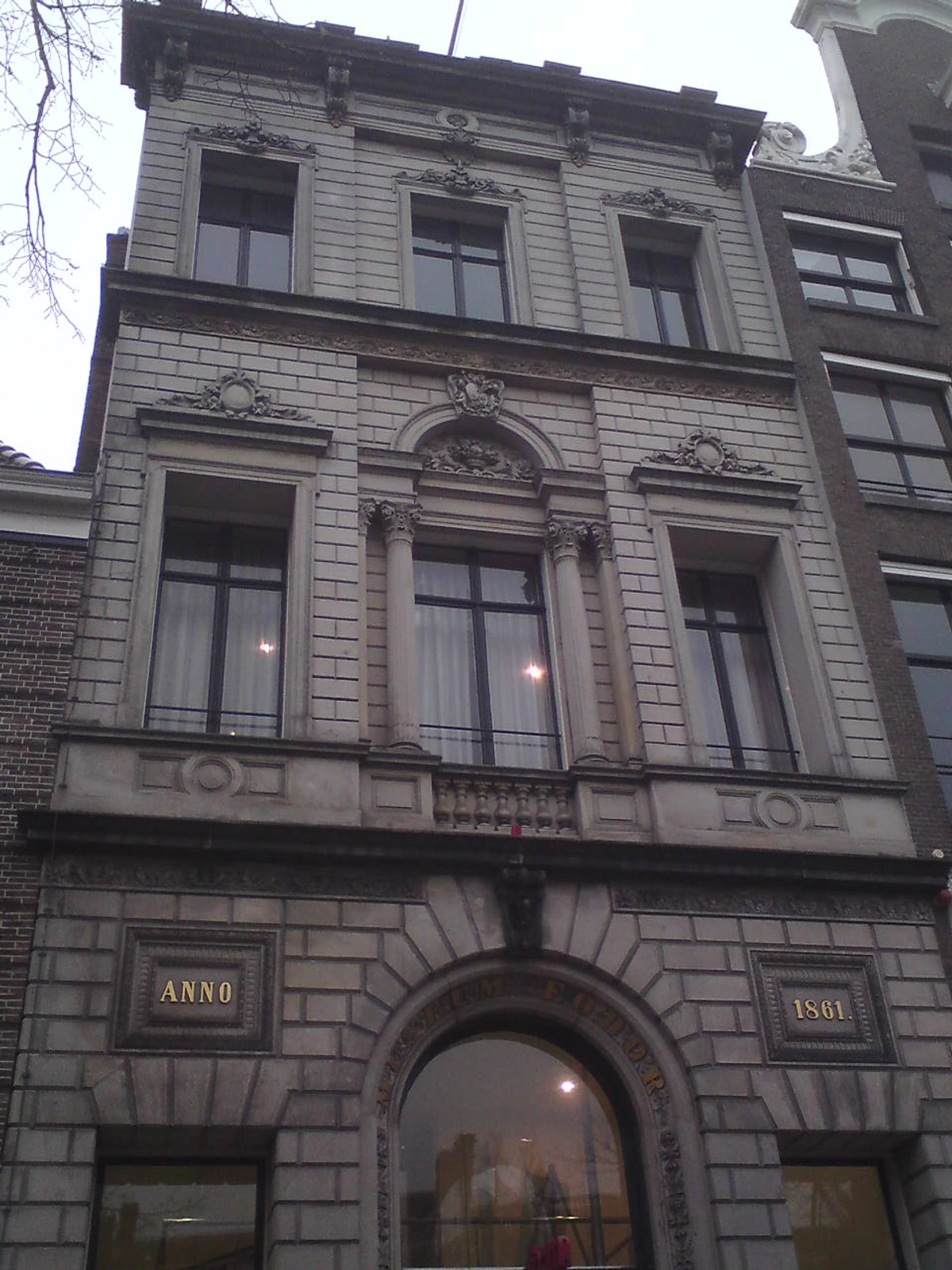 credit, licence
credit, licence - The Photographers' Gallery (London, UK): This place feels like a dedicated space for understanding the power of the lens. The UK's leading public centre dedicated solely to exploring photography in all its diverse guises – past, present, and future. Found in the heart of Soho, it offers a vibrant program of exhibitions across several floors, alongside talks, events, and an excellent bookshop. A must for photography enthusiasts in London.
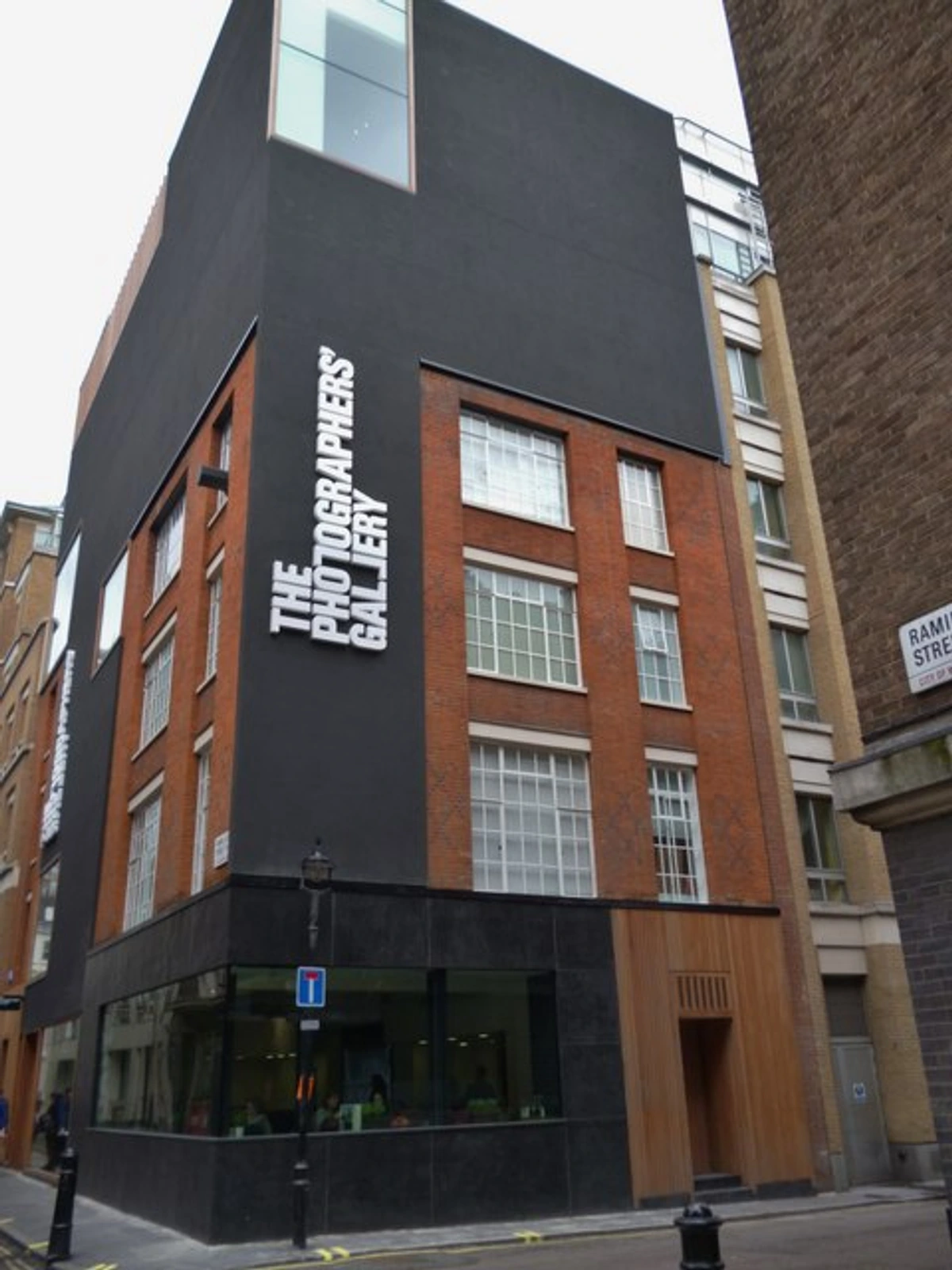
- Maison Européenne de la Photographie (MEP) (Paris, France): This place feels like a stylish showcase for contemporary visual narratives. Located in the historically rich and trendy Marais district, MEP is dedicated primarily to contemporary photographic art, housing a significant collection and hosting major temporary shows featuring international stars and exploring current themes in photography.credit, licence
Architectural Statements: Where the Building Wows Too
Sometimes, the container is just as compelling, famous, and visually stunning as the contents:
- Guggenheim Museum Bilbao (Bilbao, Spain): This place feels like a sculpture you can walk inside. Frank Gehry's swirling, shimmering titanium masterpiece is arguably the icon of late 20th-century architecture. Its arrival famously revitalized the post-industrial city (coining the term "the Bilbao effect"). Inside, you'll find modern and contemporary art, often large-scale installations perfectly suited to the dramatic, light-filled spaces (like Richard Serra's behemoth steel sculptures). The building itself is the primary exhibit for many.
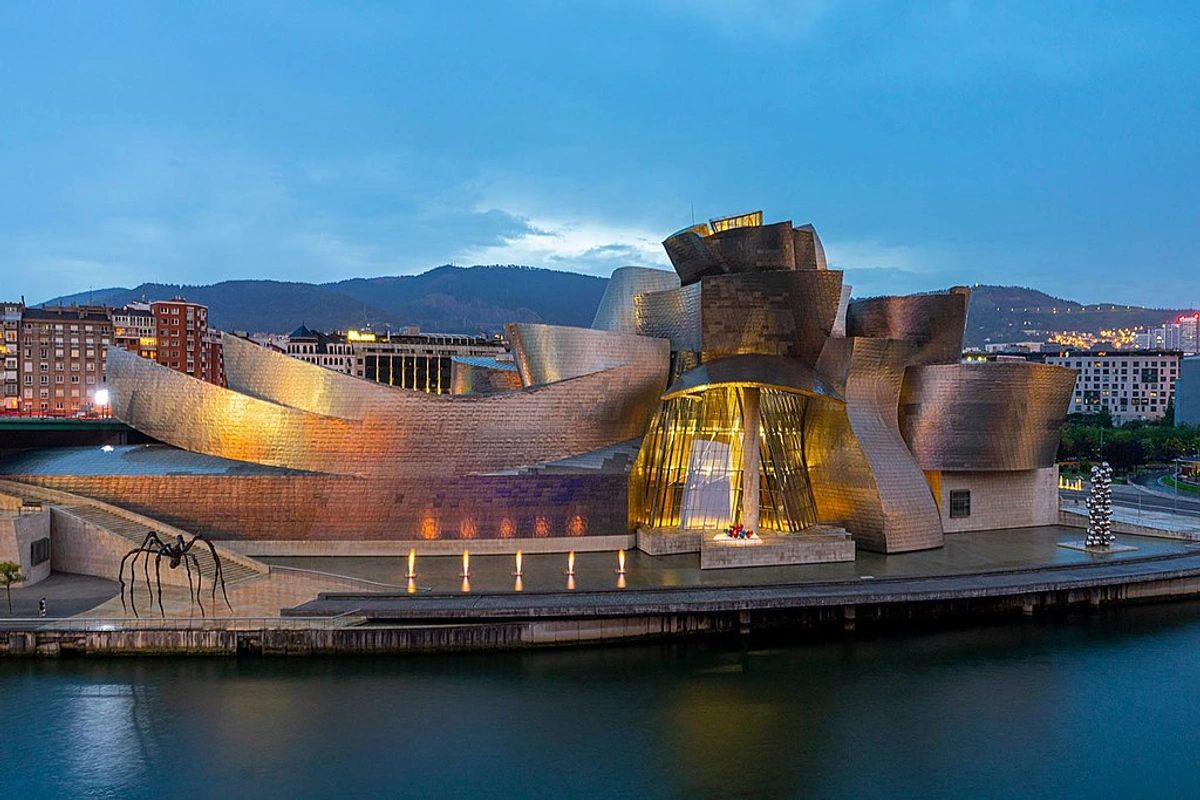 credit, licence
credit, licence - Louisiana Museum of Modern Art (Humlebæk, Denmark): This place feels like a peaceful escape where art enhances nature, and nature enhances art. Located about a 35-minute train ride north of Copenhagen, this museum is beloved worldwide for its seamless, sensitive blend of excellent modern art, understated mid-century modern architecture (by Vilhelm Wohlert and Jørgen Bo), and stunning natural landscape overlooking the Øresund Sound towards Sweden. It's a truly tranquil, beautiful, and enriching art experience. Well worth the day trip.
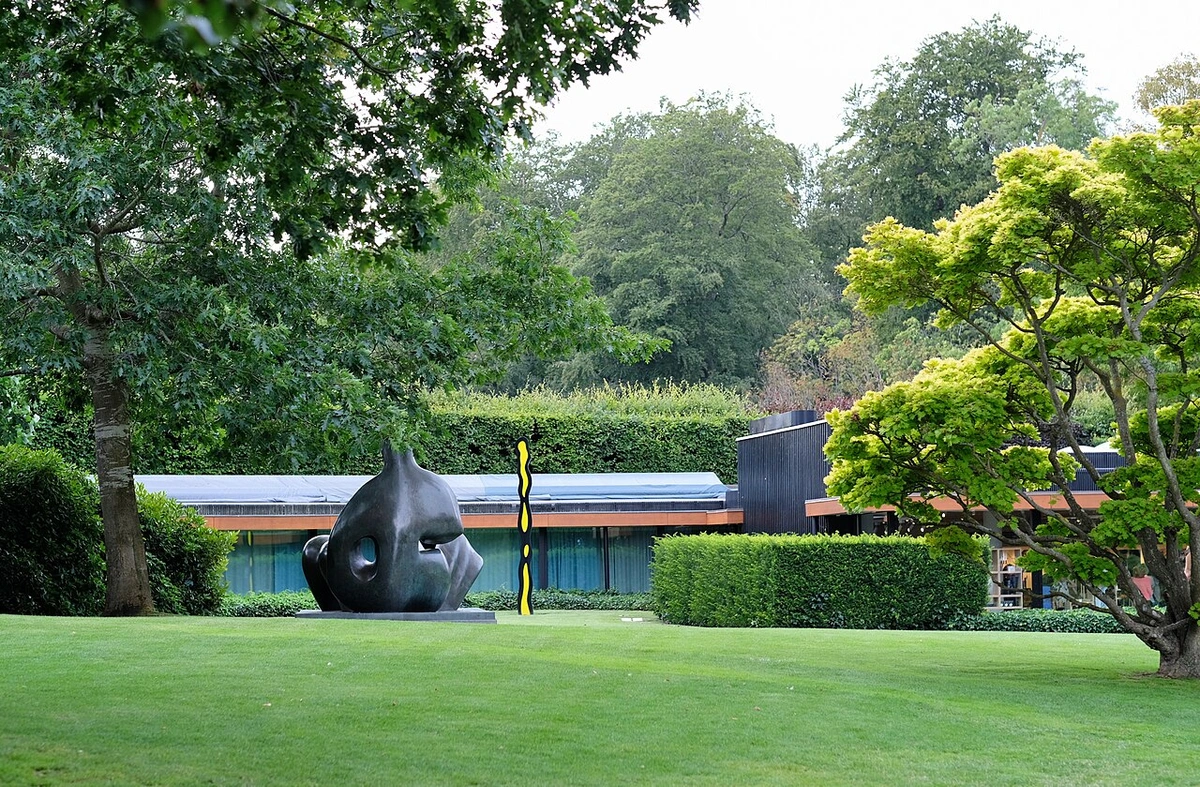 credit, licence
credit, licence - MAXXI - National Museum of 21st Century Arts (Rome, Italy): This place feels like a futuristic vessel landed in a historic city. Designed by the late, great Zaha Hadid, MAXXI's flowing, dynamic concrete form, full of intersecting ramps and suspended walkways, is a major statement in contemporary architecture. It houses Italy's national public collections of contemporary art and architecture, offering a striking modern counterpoint to Rome's ancient wonders.
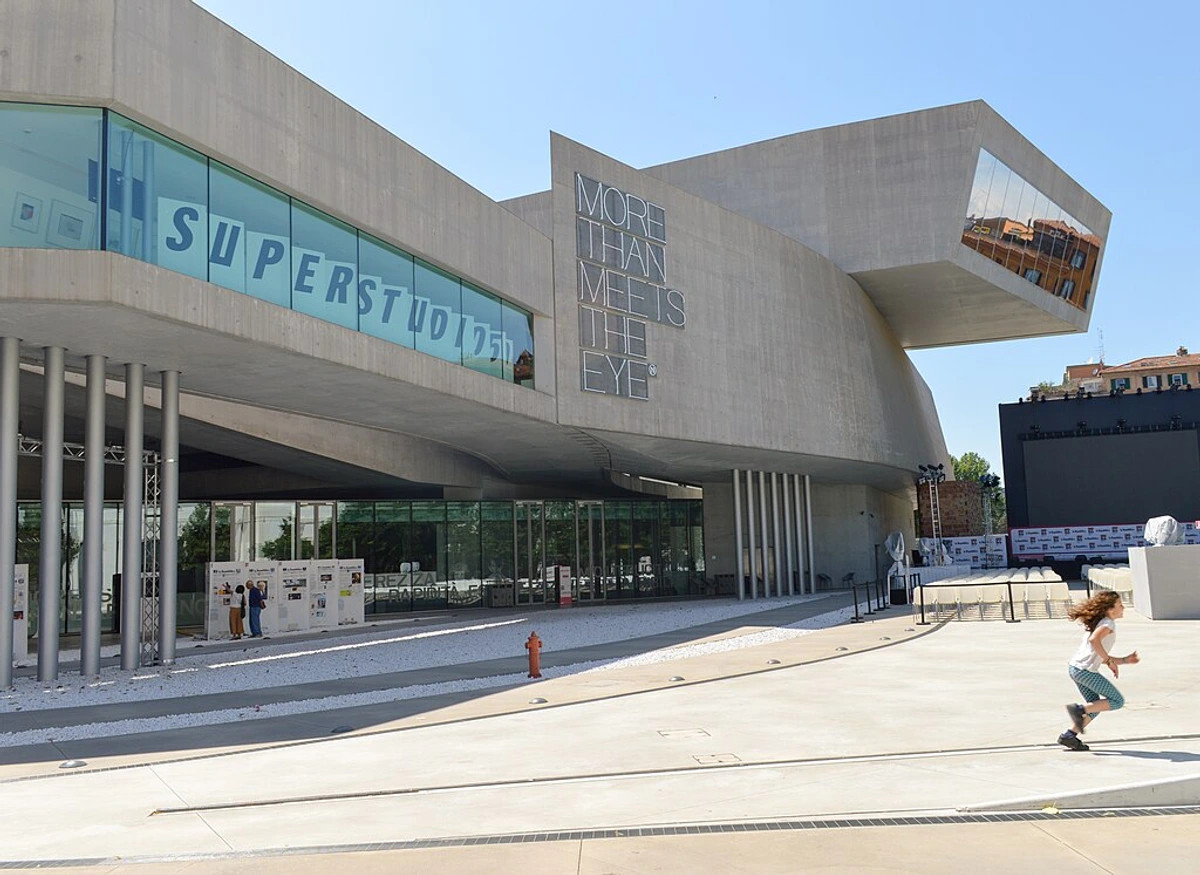 credit, licence
credit, licence - (Re-mentions) Centre Pompidou (Paris), Tate Modern (London), Fondation Beyeler (Basel), Munch Museum (Oslo), Museo Reina Sofía (Nouvel Wing, Madrid), Kiasma (Helsinki), MUDAM (Luxembourg): As noted in their respective sections, these institutions aren't just famous for their world-class collections; their influential, often radical architectural designs are a huge part of their identity, attraction, and the overall visitor experience.
Widening the Net: Beyond the Usual Suspects
It's easy to focus on the art powerhouses of Western Europe – and rightly so, they're incredible! But limiting yourself means missing out on some seriously amazing institutions elsewhere on the continent. Sometimes the most rewarding trips involve stepping slightly off the most beaten path. Let's broaden our horizons a bit, shall we? You might discover movements or artists you've never encountered before, gaining a different lens on European art history, one shaped by different political and cultural currents. It feels different, somehow, seeing art in these slightly less frantic, often beautifully designed spaces. It feels like a calmer, more focused experience.
- Venturing East: Cities like Prague and Warsaw hold national treasures that offer fascinating perspectives.
- The National Gallery Prague (Národní galerie Praha) comprises multiple venues. It showcases Czech and international art across history, from medieval masterpieces in the Convent of St. Agnes of Bohemia to 19th and 20th-century works in the Trade Fair Palace.
- In Poland, the National Museum in Warsaw (Muzeum Narodowe w Warszawie) offers a vast collection covering Polish art history alongside significant European works and antiquities, including the unique Faras Gallery of Nubian Christian art.
- Further east, cities like Budapest and Bucharest also boast significant national galleries (like the Hungarian National Gallery and the National Museum of Art of Romania) offering deep dives into their respective national art histories and European collections.
- Scandinavian Scenes (Beyond the Capitals): While Oslo, Copenhagen, and Helsinki boast major institutions (like the Munch Museum and Kiasma mentioned earlier), don't forget other Nordic cities.
- Denmark's second city, Aarhus, is home to the visually striking ARoS Aarhus Art Museum, famous for its rainbow panorama walkway by Olafur Eliasson and its collection spanning Danish Golden Age to contemporary international art.
- In Sweden, the Gothenburg Museum of Art (Göteborgs Konstmuseum) is renowned for its strong collection of Nordic art from the turn of the 20th century, alongside European masters.
- Norway's National Museum in Oslo (reopened 2022) is now the largest museum in the Nordics, bringing together collections previously housed in separate institutions, offering a comprehensive view of Norwegian art and design alongside international works.
- Irish Treasures: Dublin offers a compelling mix.
- The National Gallery of Ireland houses the national collection of Irish and European art, including a significant Caravaggio and works by Vermeer and Velázquez, alongside Irish masters like Jack B. Yeats.
- For a modern and contemporary focus, the Irish Museum of Modern Art (IMMA), located in the stunning historic Royal Hospital Kilmainham, presents works from its collection and dynamic temporary exhibitions. It feels like discovering the artistic soul of a nation.
- Regional Hubs with Global Punch: You don't always need to be in a capital city to find world-class art.
- Italy, for instance, has gems scattered everywhere. Beyond Florence and Rome, Milan's Pinacoteca di Brera boasts masterpieces of Italian painting, particularly Lombard and Venetian schools (think Mantegna, Bellini, Caravaggio).
- And who could forget Venice? Alongside its Biennale madness (more on that later), the Peggy Guggenheim Collection, housed in her former palazzo on the Grand Canal, offers an incredible, intimate experience with 20th-century masterpieces of Cubism, Surrealism, and Abstract Expressionism – it feels personal, like stepping into a legendary collector's world.
- In France, cities like Montpellier boast the excellent Musée Fabre, with strong holdings of French and European painting, including works by Courbet and Delacroix.
- And we already mentioned Munich's Lenbachhaus as the place for Blue Rider Expressionism. These places offer world-class art without the capital-city crush.
- Belgian Brilliance (Beyond Antwerp): While Antwerp's Middelheim and Mayer van den Bergh are fantastic, Brussels is a major player.
- The Royal Museums of Fine Arts of Belgium complex includes the Oldmasters Museum (Bruegel, Rubens), the Fin-de-Siècle Museum, and the Magritte Museum, dedicated entirely to the iconic Belgian Surrealist René Magritte – absolutely essential for understanding Surrealism beyond Dalí.
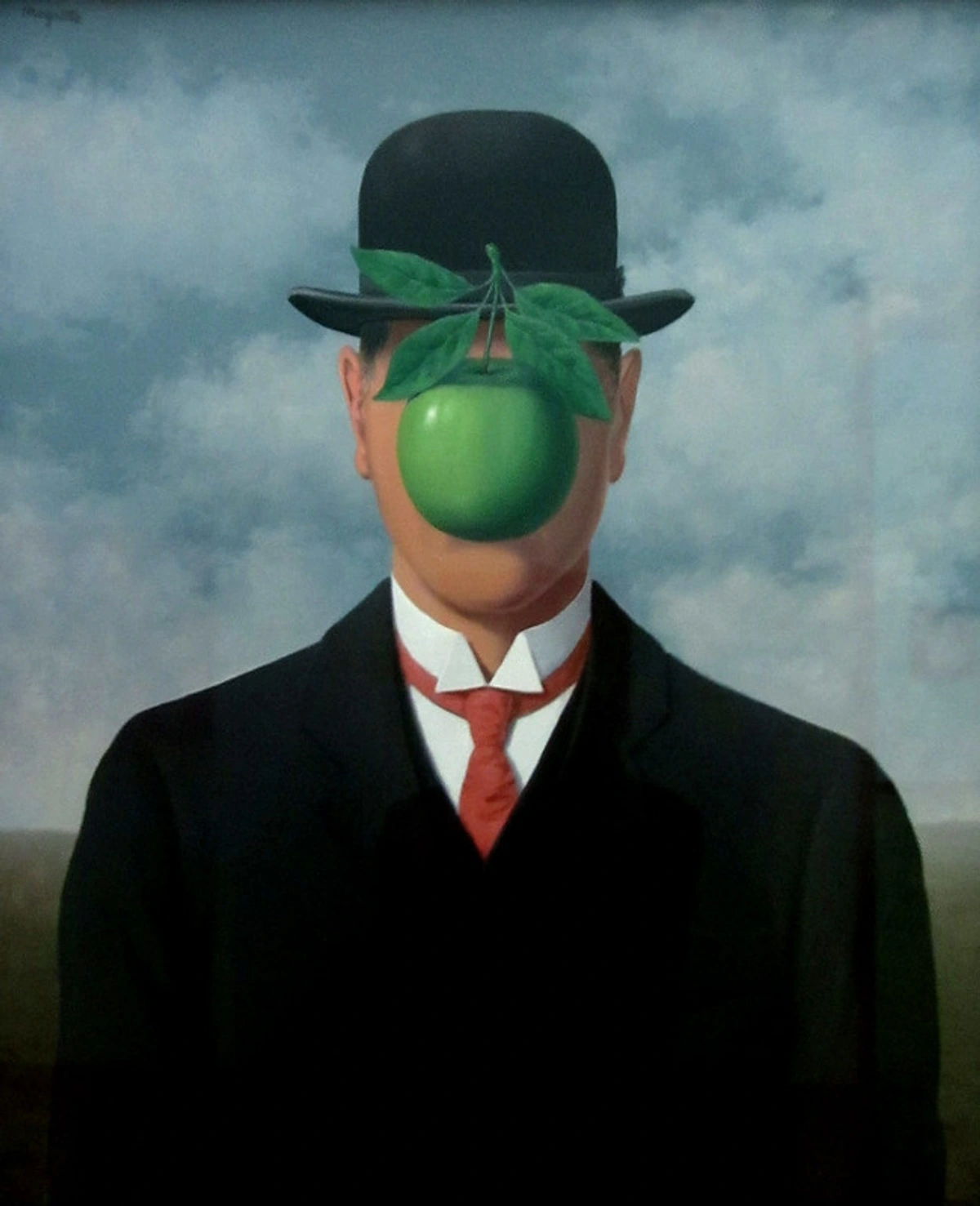
- Don't forget Bruges, where the Groeningemuseum offers a stunning collection of Early Netherlandish painting (Van Eyck, Memling) in a wonderfully atmospheric city.
- Iberian Gems (Beyond Madrid): While Madrid has the Golden Triangle, Spain and Portugal offer more.
- In Spain, beyond Bilbao's Guggenheim, cities like Barcelona boast the Museu Nacional d'Art de Catalunya (MNAC) with its incredible Romanesque frescoes and Catalan art collection, and the aforementioned Museu Picasso.
- In Portugal, Lisbon's Calouste Gulbenkian Museum houses a stunning, eclectic collection spanning Egyptian artifacts to European painting (including Rembrandt and Rubens) and Art Nouveau jewellery, while the National Museum of Ancient Art (Museu Nacional de Arte Antiga) is Portugal's national gallery, with key works of Portuguese and European painting and decorative arts.
- Porto's Serralves Museum is a major hub for contemporary art and architecture with beautiful grounds.
Thinking beyond the obvious often leads to discovering places that feel more manageable, perhaps more connected to their specific locality, and maybe, just maybe, leave you feeling less like a tourist ticking boxes and more like a genuine explorer on a personal journey of discovery. Plus, let's face it, there's a certain thrill in stumbling upon an unexpected gem in a quiet museum in, say, Porto, Krakow, Ghent, Bologna, or countless other fascinating cities. It feels like your discovery, a secret shared just between you and the art. It’s a fantastic way to define your personal art style and taste by exposing yourself to a wider, less pre-digested range of works beyond the established canon. It might even provide that unexpected spark of art inspiration you didn't even know you were looking for.
So, how do you find these hidden treasures?
- Local Tourist Information Offices: Old school, but still surprisingly effective. Ask staff for recommendations beyond the top 3 obvious choices. Tell them what kind of art interests you.
- City/Region Official Websites: Look beyond the 'Top Attractions' page. Check dedicated 'Culture' sections or museum directories.
- Art Blogs/Magazines/Local News: Search for articles or listings focusing on specific cities or regions you're visiting. Websites like Artsy, Artnet News, or The Art Newspaper often have city-specific sections or cover regional scenes.
- Social Media: Follow local art accounts, hashtags (#'CityName'Art, #'RegionName'Museum, #EuropeanArtMuseum), or location tags on platforms like Instagram.
- Museum Passes/City Cards: Check the full list of included venues – sometimes smaller gems are part of the deal.
- Just Wander: Seriously. Some of the best finds are stumbled upon down a charming side street. Keep your eyes peeled for intriguing signs or doorways! I once found a tiny, perfect museum dedicated to miniature portraits this way in a small French town. It wasn't on any major list, but it was utterly captivating and felt like a secret shared just with me.
Examples of Hidden Gems & Local Treasures (Just a Taste!)
This is far, far from exhaustive – every country, region, and decent-sized city has its own hidden gems waiting to be discovered – but here are a few examples to whet your appetite for exploration beyond the blockbusters:
- Museum Mayer van den Bergh (Antwerp, Belgium): This place feels like a perfectly preserved moment in time. A stunning, intimate house museum filled with the exquisite personal collection of the discerning connoisseur Fritz Mayer van den Bergh. Its star attraction is Bruegel the Elder's incredible, nightmarish Mad Meg (Dulle Griet), but the entire collection of Northern Renaissance and Baroque art, sculpture, and decorative arts displayed in period rooms feels like stepping directly into a wealthy 16th-century collector's private world. It's the kind of place where you feel the collector's passion, not just the institution's budget.
- Sir John Soane's Museum (London, UK): This place feels like stepping into a brilliant, eccentric mind. The eccentric, atmospheric, and utterly fascinating former home of the influential neo-classical architect Sir John Soane. It's packed floor-to-ceiling (literally) with his vast and eclectic collections of art, antiquities, architectural models, casts, and curiosities, arranged exactly as he left them. Especially famous for its ingenious 'picture room' with folding panels revealing hidden artworks (including Hogarths and Canalettos). It's a place of delightful, almost overwhelming clutter and discovery – you almost feel like you're intruding, in the best possible way. Free entry, but timed tickets often needed due to its compact nature. A true London original, see more in our London galleries guide.
- Musée Unterlinden (Colmar, France): This place feels like a place of quiet, intense spiritual power. Located in a beautifully converted former medieval convent in the heart of the picturesque Alsatian town of Colmar, this museum's undisputed star attraction is the breathtakingly intense and emotionally charged Isenheim Altarpiece by Matthias Grünewald. Seeing this multi-paneled masterpiece in person is a profound experience, far removed from the blockbuster hustle. But the museum also holds important archaeological finds, decorative arts, folk art, and modern works, giving you a real sense of the region's deep history.
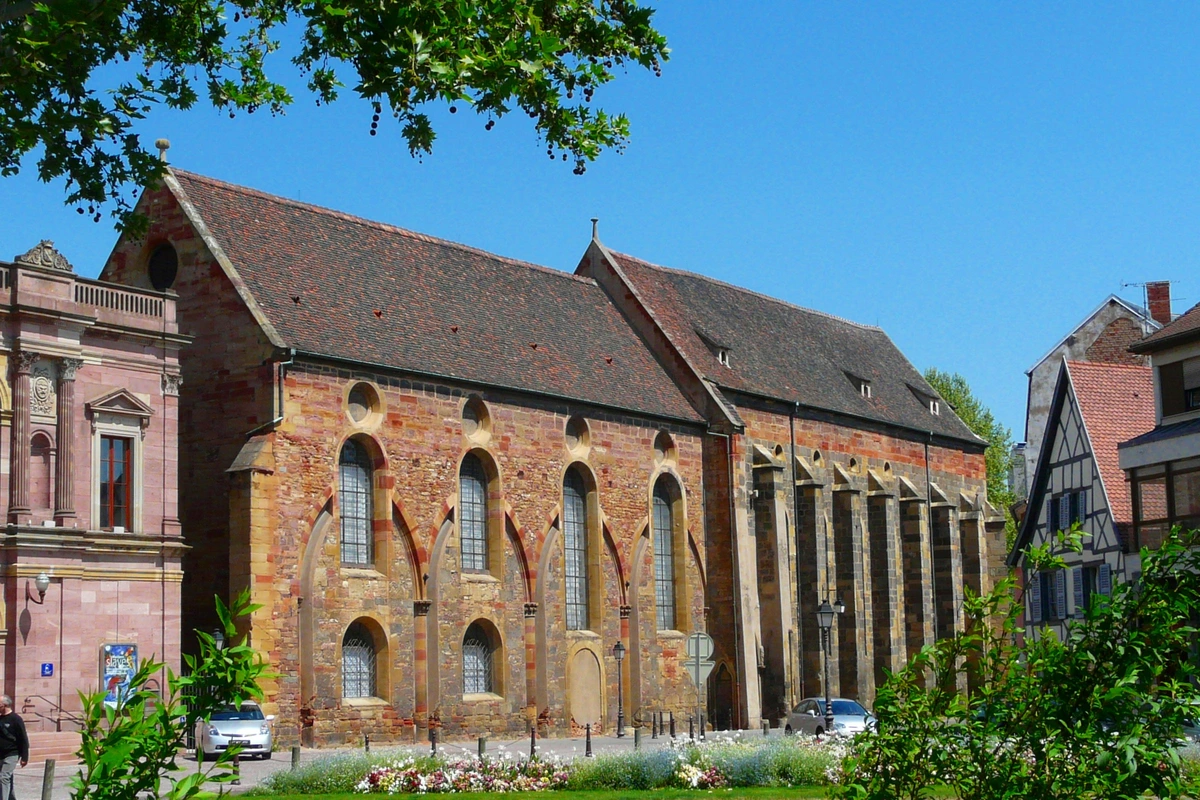
- The Noordbrabants Museum ('s-Hertogenbosch, Netherlands): This place feels like discovering the roots of great art in its local soil. While the Rijksmuseum covers the Dutch Masters on a national scale, this excellent museum offers a deep dive into the specific art, history, and culture of the North Brabant province. It features important works by Brabant natives like Van Gogh (focusing on his early, darker Brabant period, which feels so different seen here in its local context) and Hieronymus Bosch (who was born and worked in the city), alongside significant collections of Southern Netherlandish art from the 16th-18th centuries and regional contemporary artists. It provides crucial local context, wonderfully complementing the city's other unique offerings like the Design Museum Den Bosch or the contemporary focus of the Zen Museum Den Bosch located nearby. Definitely puts Den Bosch on the map as one of the key art cities in the Netherlands, proving you don't need to be in Amsterdam for world-class art.
- Wallraf-Richartz Museum (Cologne, Germany): This place feels like a hidden treasure trove of painting history. Often overshadowed by Berlin or Munich, Cologne's Wallraf-Richartz holds an incredibly impressive collection of European art from the medieval period up to the early 20th century. It's particularly strong in medieval Cologne painting (a genre you likely won't see much of elsewhere), with notable works by artists like Stefan Lochner, and boasts major works by giants like Rembrandt, Rubens, Monet, and Munch. It feels like a major national museum somehow tucked away in a slightly less frantic city – a real treat for focused looking.
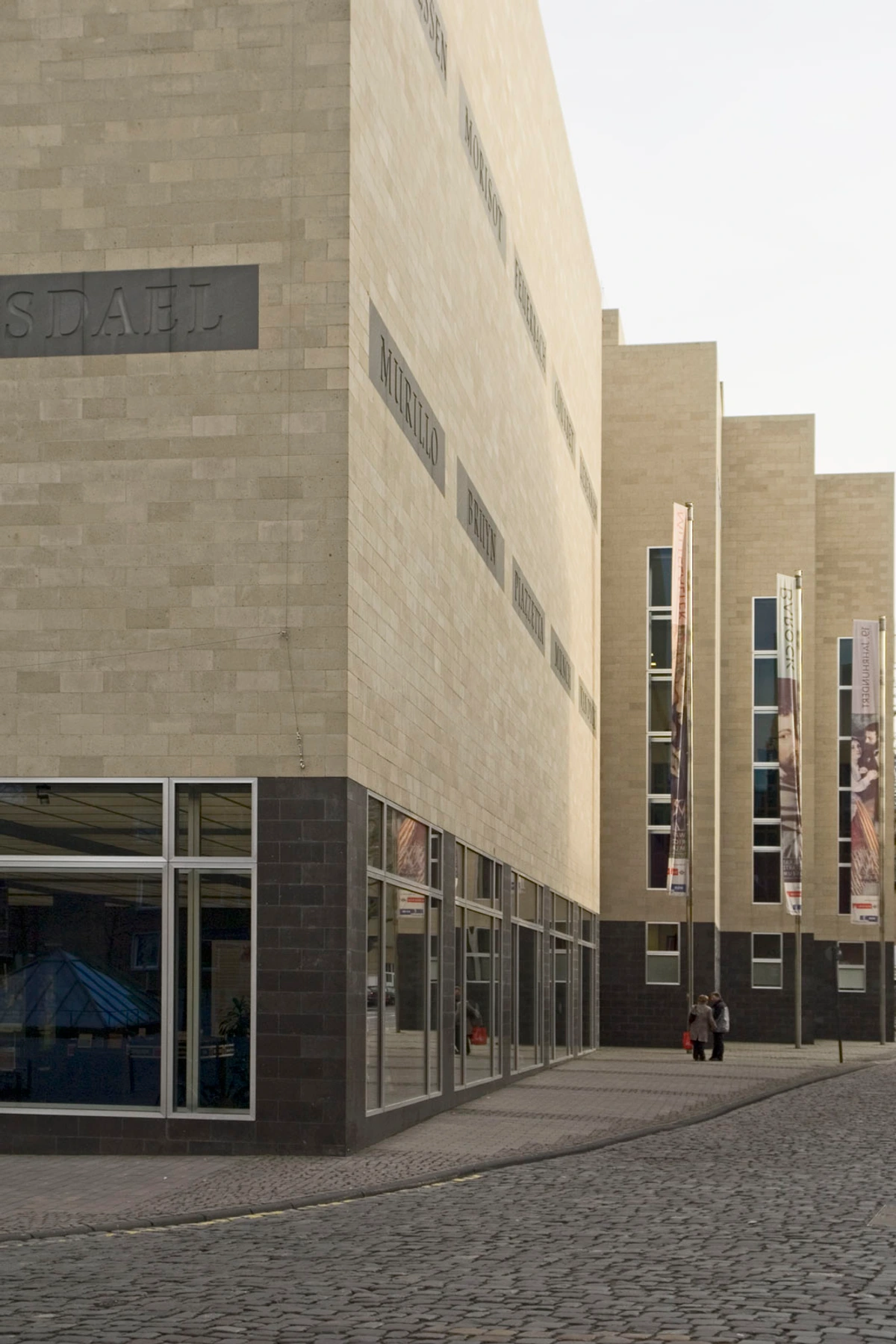
- (Re-mention) Peggy Guggenheim Collection (Venice, Italy): Yes, it's famous, but compared to the Doge's Palace or St Mark's, it still feels like a more intimate, personal encounter with groundbreaking 20th-century art, right on the Grand Canal. Its focus and unique setting make it feel special. It feels like being invited into a legendary collector's home.
- (Re-mention) Groeningemuseum (Bruges, Belgium): Essential for understanding the brilliance of the Flemish Primitives like Jan van Eyck and Hans Memling, seen in the incredibly preserved medieval city where many of them worked. It feels like stepping back into the Golden Age of Flemish painting.
Beyond the Museum Walls: The Wider Art Ecosystem
But art in Europe isn't just confined to these incredible buildings... Okay, we've talked a LOT about museums. They're the anchors, the big ships in the harbour. But the art world is a much wider ocean, isn't it? Thinking about art in Europe isn't just about hushed halls and gilded frames. There's a whole vibrant ecosystem buzzing outside those grand institutions. For an artist, engaging with this wider world is just as crucial as visiting the classics. It's where you see art being made, debated, and lived. It feels different from the quiet contemplation of a museum – it's more immediate, sometimes messy, and often directly engaged with the world right now. Seeing art outside the institution, whether on a street corner or in a commercial space, reminds me that art is a living, breathing thing, not just something preserved behind glass.
The Spectacle: Major Art Events
Certain moments on the calendar draw the entire art world's attention. These aren't permanent collections, but massive, temporary gatherings that define trends and showcase cutting-edge work. Planning a trip around one can be overwhelming but also incredibly exciting:
- Venice Biennale (Venice, Italy - Odd-numbered years for Art, Even for Architecture): This place feels like the art world descends on the city. Arguably the oldest and most prestigious international contemporary art exhibition. Countries showcase artists in national pavilions scattered across the Giardini and Arsenale, alongside a massive curated central exhibition. It's a sprawling, fascinating, sometimes exhausting snapshot of global contemporary art.
- Documenta (Kassel, Germany - Every 5 years): This place feels like a deep, sometimes challenging, conversation about the state of art and the world. Held in the German city of Kassel, Documenta is known for its rigorous intellectual and often political approach to contemporary art. Each edition is curated by a different artistic director (or collective) with a specific theme, often resulting in challenging and thought-provoking exhibitions spread across the city.
- Major Art Fairs (Art Basel, Frieze, etc.): These feel like high-energy marketplaces and showcases combined. While primarily commercial events aimed at collectors (where you might buy art), major fairs like Art Basel (in Basel, Switzerland, but also Miami Beach and Hong Kong) and Frieze (London and other cities) also feature ambitious curated sections, talks programs, and are simply massive spectacles where you can see a huge volume of contemporary work from galleries worldwide in one place. Check out our tips for visiting art fairs if you're tempted.
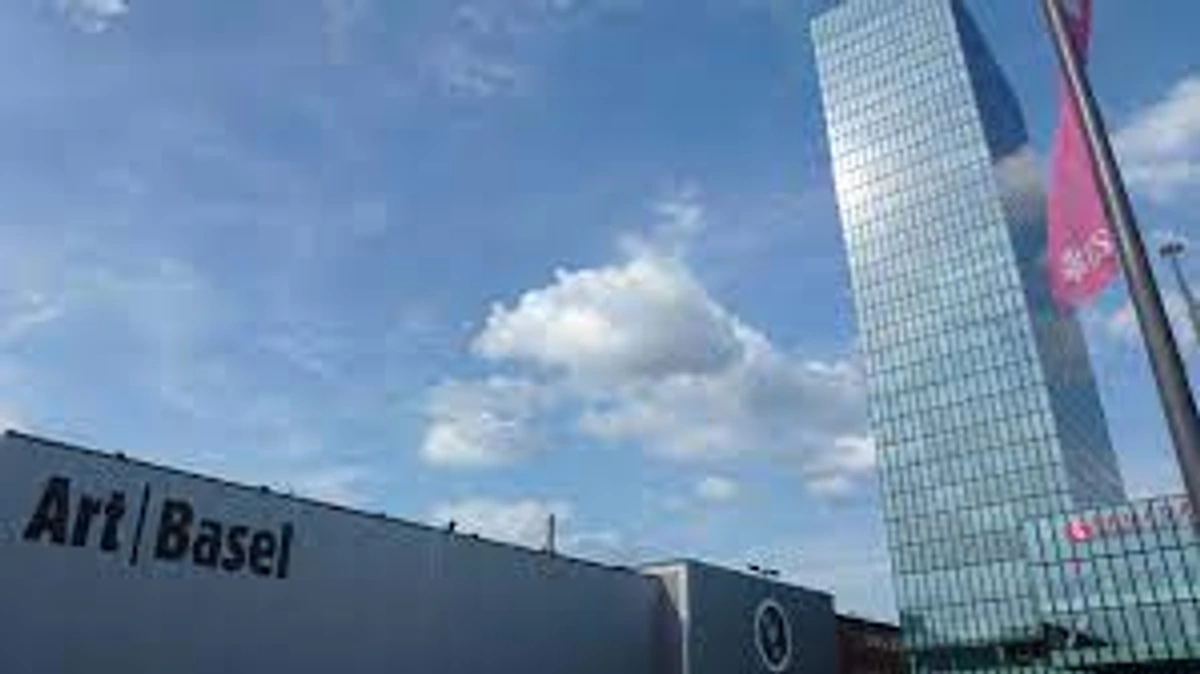
Art in the Streets: Urban Canvases
Not all art hangs on walls under spotlights. Some of Europe's most dynamic art scenes unfold right on the streets. Cities famous for their vibrant Street Art culture offer a completely different kind of art experience – free, accessible, constantly evolving, and deeply connected to the urban fabric. It's art that lives and breathes with the city itself. Seeing a massive mural appear overnight, or spotting a tiny, clever stencil in a doorway, feels like the city is talking to you. It's raw, immediate, and often political or humorous. I remember walking through Shoreditch in London and turning a corner to find a vibrant, intricate piece that seemed to have materialized overnight, completely transforming a drab wall into a living canvas.
- Berlin, Germany: This place feels like the art here is raw and historically charged. Long a haven for street artists, particularly in districts like Kreuzberg and Friedrichshain (check out the East Side Gallery, a preserved section of the Berlin Wall covered in murals). The art here feels raw and historically charged.
- Bristol, UK: This place feels like a city that embraces creativity on its walls. Famously the home city of Banksy, Bristol has a thriving scene well beyond its most famous export, especially in areas like Stokes Croft and Bedminster.
- Lisbon, Portugal: This place feels like the city itself is a canvas. Known for its colourful murals, often on large building facades, and initiatives that actively promote urban art throughout the city.
Many cities now offer guided street art tours, which can be a great way to discover hidden gems and learn about the local scene and artists. It's a reminder that creativity isn't confined to institutions.
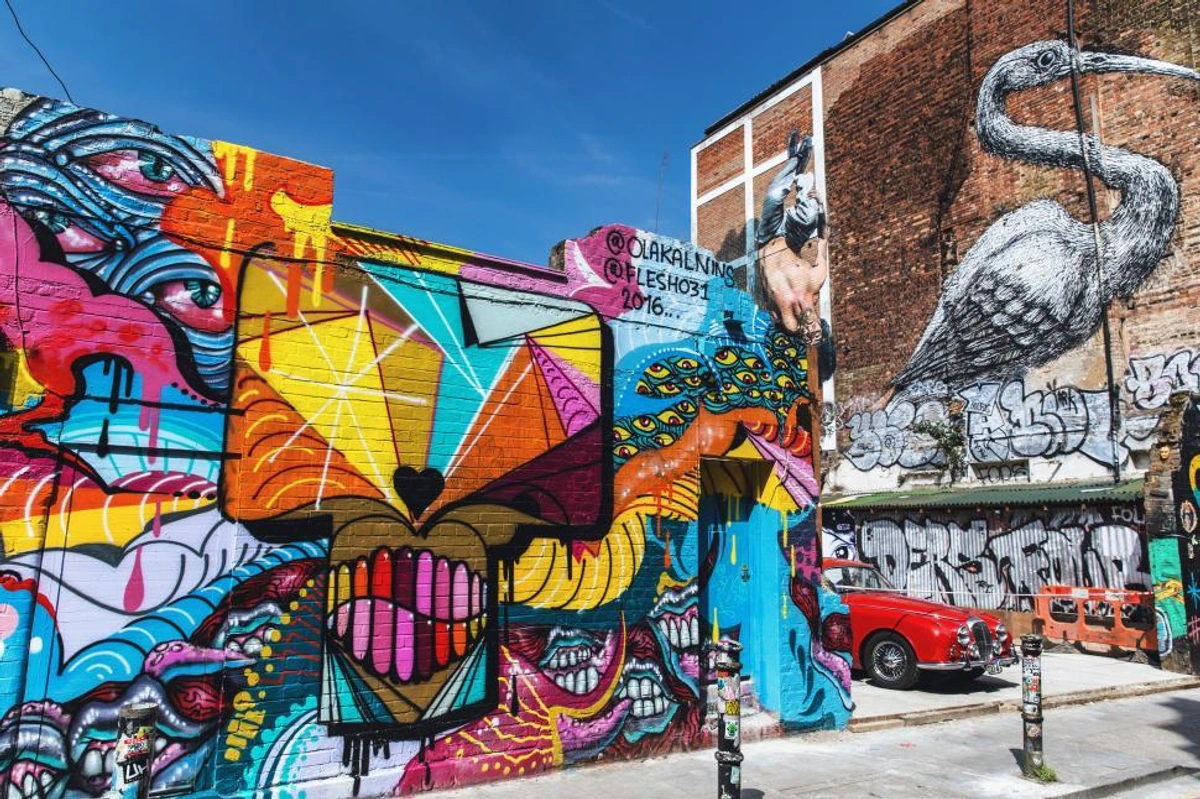
The Commercial Heartbeat: Gallery Districts
Remember how we distinguished between public museums and commercial galleries at the start? While this guide focuses on the former, understanding where the commercial art world operates adds another layer to a city's art landscape. These districts are where galleries representing living artists often cluster, holding rotating exhibitions (usually free to enter, though the primary goal is sales). Exploring these areas can give you a feel for the current market and potentially discover emerging artists. It feels like stepping into the engine room of the contemporary art market. It's a different energy than a museum – less about history, more about the buzz of the new, the potential, the conversation happening now. And let's be honest, sometimes it's less about quiet contemplation and more about the quiet contemplation of price tags. It's also worth noting that many private art collections, even those not publicly accessible, play a significant role in influencing the art world and shaping future museum acquisitions through donations, loans, and market trends.
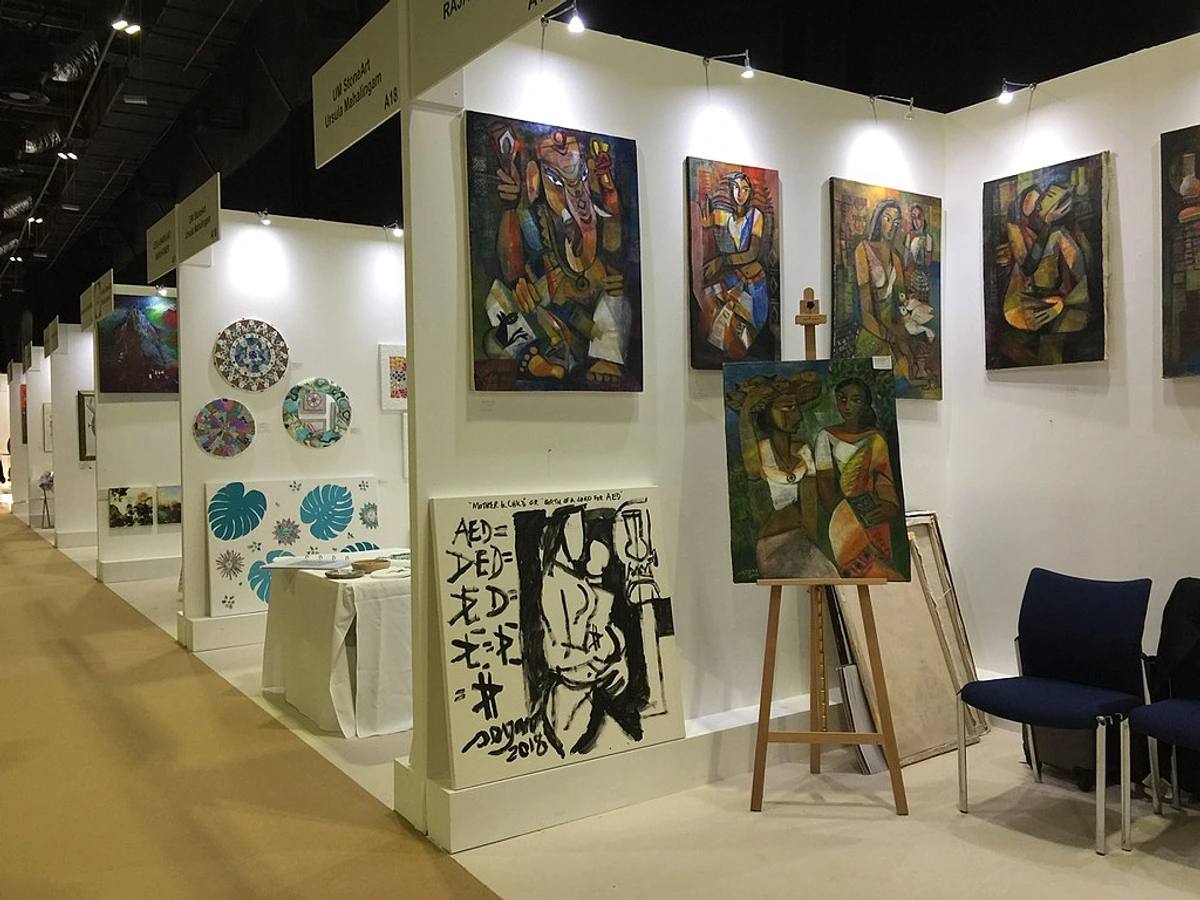
credit, licence
- Mayfair (London, UK): The traditional heart of London's high-end art market, packed with established international galleries.
- Le Marais (Paris, France): A charming historic district now home to a dense concentration of contemporary art galleries alongside boutiques and cafes (and near the Pompidou and Picasso Museum).
- Mitte & Kreuzberg (Berlin, Germany): Berlin's gallery scene is more dispersed, but areas around Auguststraße in Mitte and near Checkpoint Charlie/Lindenstraße in Kreuzberg have significant clusters.
Visiting these districts feels different – it's less about historical masterpieces and more about what's happening now and what might be the next big thing. It's part of the complete picture of art in Europe.
Artist Studios & Open House Events: Meeting the Makers
For a truly personal connection to the art world, seek out opportunities to visit artist studios. Many cities and regions host annual 'Open Studio' events (like 'Kunst in de Straat' in some Dutch towns, or London Open Studios) where artists open their private workspaces to the public. This is a fantastic way to see where and how art is made, talk directly to artists about their process and art inspirations, and perhaps even buy art directly from the source. It feels like getting a peek behind the curtain, seeing the creative process up close. It's a reminder that every piece of art starts with an individual vision and a workspace, whether grand or humble. As an artist myself, stepping into another artist's studio is always a fascinating, sometimes humbling, experience – seeing their tools, their process, the controlled chaos, it makes the finished work feel even more real. I once visited an open studio where the artist was working on a massive, intricate sculpture made entirely of recycled plastic. Chatting with them about their dedication to sustainability and the surprising beauty they found in discarded materials was truly eye-opening and inspiring.

credit, licence
Art Historical Sites & Artist Homes: Stepping into the Past
Some places aren't traditional museums but offer an immersive glimpse into the world where art was created. Visiting these sites can provide invaluable context.
- Fondation Monet (Giverny, France - Easy Day Trip from Paris): This place feels like walking through a living painting. Okay, technically not a museum with his paintings, but visiting Monet's meticulously restored house and gardens – the direct inspiration for his famous water lily series and countless other works – is like stepping into one of his canvases. An immersive pilgrimage for Impressionism lovers. It's seasonal (usually April-October), so check opening times carefully. It's a powerful reminder of how deeply an artist's environment can shape their work.
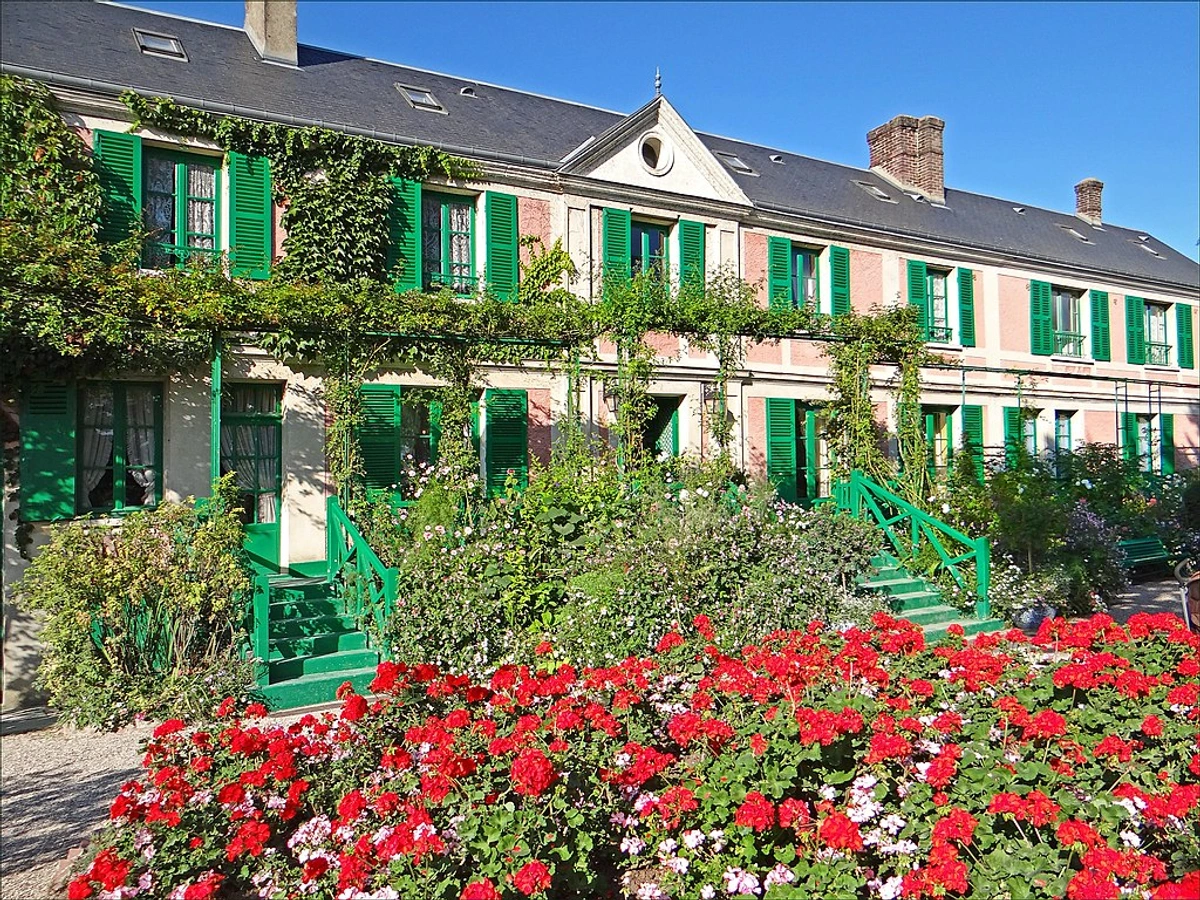 credit, licence
credit, licence - Rembrandt House Museum (Amsterdam, Netherlands): Step into the world of the Dutch Master. This beautifully restored 17th-century house in Amsterdam's Jewish Quarter was Rembrandt van Rijn's home and studio for many years. While it doesn't hold many of his most famous paintings (those are at the Rijksmuseum!), it's furnished with period pieces and Rembrandt's own etchings and drawings, giving a vivid sense of his daily life, his working methods, and the environment that shaped his genius. It's an intimate, evocative experience.
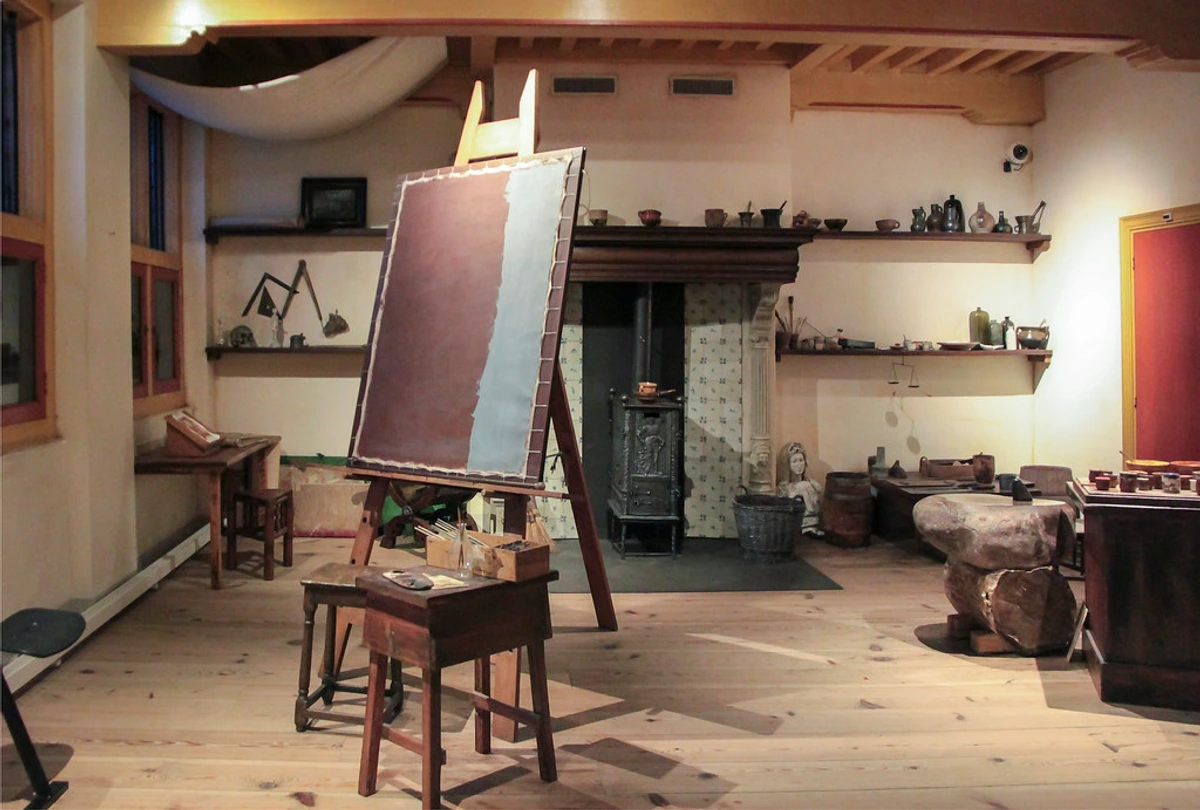
- Casa Batlló & Casa Milà (La Pedrera) (Barcelona, Spain): While primarily architectural marvels, Antoni Gaudí's buildings are total works of art. Visiting these houses allows you to experience his unique, organic, and colourful vision in three dimensions. It's art you walk through, touch, and live inside (briefly!). They are masterpieces of Art Nouveau (or Catalan Modernism) and show how art can encompass entire living spaces.
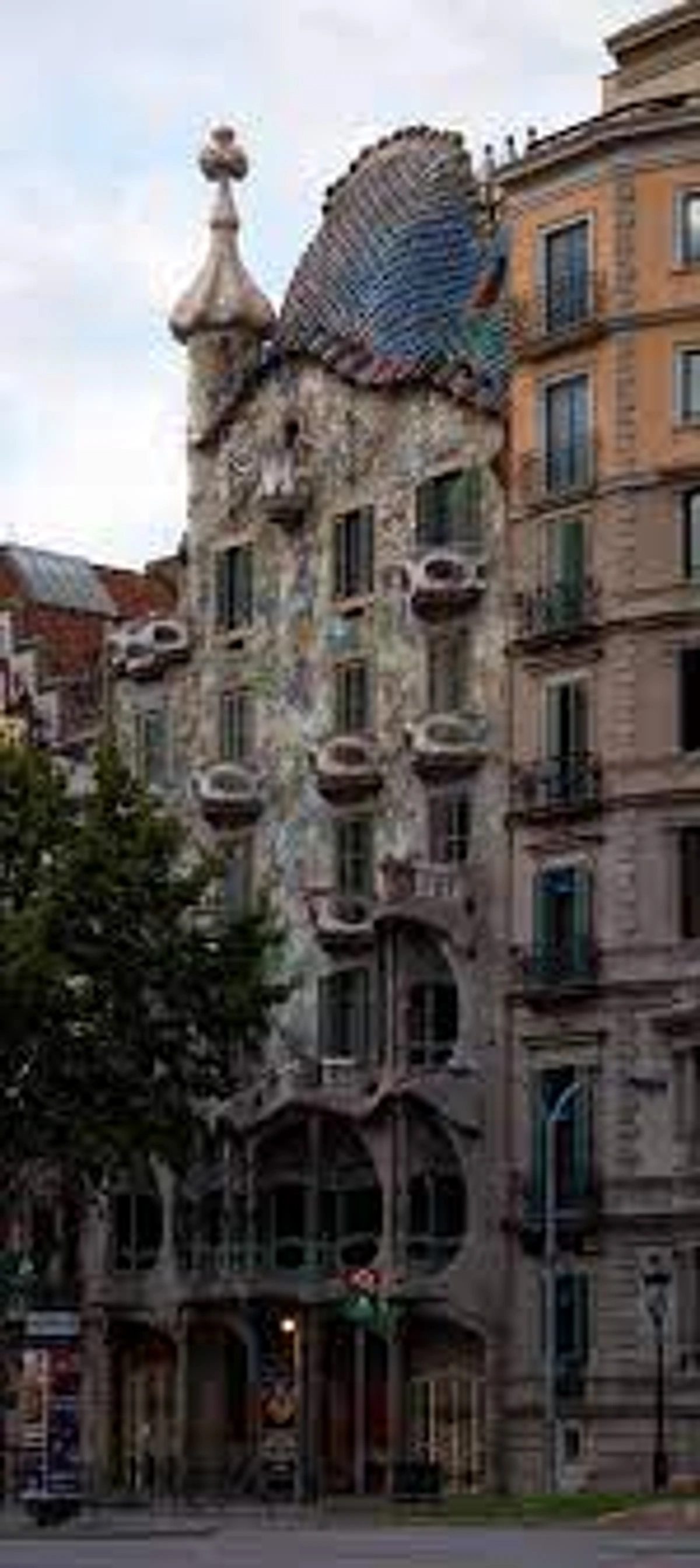
These sites offer a different kind of connection, less about viewing finished pieces in isolation and more about understanding the context, the inspiration, and the daily reality of the artist's life.
Art Hotels & Art-Themed Tours: Immersive Experiences
Beyond traditional museums and galleries, Europe offers even more immersive ways to engage with art. Consider staying in an art hotel, where the design, decor, and even the curated collection of artworks become an integral part of your stay. Many cities also offer specialized art-themed tours, which can range from guided walks through street art districts to curated gallery crawls, or even tours focusing on specific art historical periods or artists. These experiences often provide unique insights and a deeper connection to the local art scene that you might not get from a standard museum visit.
Summary Table: Europe's Art Scene - The Big & The Beautiful (Expanded & Categorized)
Ready to map out your artistic adventure? This table summarizes some of the best, top, and major European art museums we've journeyed through, including our specialized, regional, and local gem additions. Remember, the "Typical Visit Time" is just a suggestion – your pace might be faster or slower, and temporary exhibitions can add significant time!
Institution | City | Country | Primary Focus | Key Era(s) | Notable For | Category | Best For | Typical Visit Time | Feeling/Essence (My Take) |
|---|---|---|---|---|---|---|---|---|---|
| Louvre Museum | Paris | France | Encyclopedic Art & Antiquities | Antiquity - Mid-19th C. | Mona Lisa, Vastness, Palace Setting, Global Icons | Encyclopedic / History | Global Masterpieces & Ancient Civilizations | 4+ hours | Overwhelming grandeur, historical depth |
| Prado Museum | Madrid | Spain | European Painting (esp. Spanish Masters) | 12th C. - Early 20th C. | Velázquez, Goya, El Greco, Spanish Royal Collection | History / Painting | Spanish Golden Age Painting | 3-4 hours | Intense focus, deep contemplation |
| Uffizi Gallery | Florence | Italy | Italian Renaissance Painting (esp. Florentine) | Renaissance | Botticelli, Leonardo, Michelangelo, Raphael | History / Painting | Italian Renaissance Masterpieces | 3-4 hours | Renaissance heartland, air hums with creativity |
| Rijksmuseum | Amsterdam | Netherlands | Dutch Art & History (esp. Golden Age) | Dutch Golden Age, Various | Rembrandt (Night Watch), Vermeer, Dutch Masters | History / National | Dutch Golden Age Painting | 3-4 hours | National pride, elegant clarity, special light |
| National Gallery | London | UK | Western European Painting | Mid-13th C. - 1900 | Comprehensive Survey, High Quality, Free Entry | History / Painting | European Painting Overview | 3-4 hours | Perfectly curated history book, accessible overview |
| State Hermitage Museum | St. Petersburg | Russia | Encyclopedic Art (esp. Western European) | Antiquity - Early 20th C. | Scale, Opulent Winter Palace Setting, Depth | Encyclopedic / History | Imperial Collections & Grandeur | 4+ hours | Imperial excess, artistic accumulation, breathtaking scale |
| Vatican Museums | Vatican City | Italy | Papal Collections (Art, History, Antiquities) | Antiquity - Renaissance/Baroque | Sistine Chapel, Raphael Rooms, Classical Sculpture | Encyclopedic / History | Religious Art & Classical Sculpture | 4+ hours | Immense spiritual/historical weight, awe-inspiring climax |
| British Museum | London | UK | World History, Culture & Art Artifacts | Antiquity - Present | Global Scope, Rosetta Stone, Parthenon Sculp., Free | Encyclopedic / History | World Cultures & Antiquities | 4+ hours | Repository of humanity's story, endless curiosity |
| Musée d'Orsay | Paris | France | French Art (Impressionism/Post-Impressionism) | 1848 - 1914 | World's Best Impressionism Coll., Station Building | Modern / Impressionism | Impressionist & Post-Impressionist Art | 2.5-3 hours | Light-filled, accessible, vibrant fleeting moments |
| Gemäldegalerie | Berlin | Germany | European Painting (Old Masters) | 13th C. - 18th C. | Old Masters Depth & Quality, Systematic Display | History / Painting | Old Master Painting | 2.5-3 hours | Serious, quiet sanctuary for painting purists |
| Kunsthistorisches Museum | Vienna | Austria | European Art (Imperial Coll., esp. Bruegel) | Antiquity - Baroque | World's Best Bruegel Collection, Habsburg Treasures | History / Encyclopedic | Habsburg Imperial Art & Bruegel | 3-4 hours | Imperial grandeur, old-world elegance, accumulated power |
| Alte Pinakothek | Munich | Germany | Old Master Painting | 14th C. - 18th C. | Dürer, Rubens, German/Flemish/Italian Masters | History / Painting | Northern European Old Masters | 2.5-3 hours | Classic, solid collection for serious looking |
| Thyssen-Bornemisza | Madrid | Spain | Western Art Survey (Comprehensive) | 13th C. - Late 20th C. | Breadth Across Eras, Fills Gaps, Private Coll. Origin | History / Survey | Comprehensive Western Art Survey | 2.5-3 hours | Highly curated, personal history of art |
| Tate Modern | London | UK | International Modern & Contemporary Art | 1900 - Present | Scale, Turbine Hall Installations, Global Focus, Free | Modern / Contemporary | Cutting-Edge Contemporary Art | 3-4 hours | Raw industrial scale, cutting-edge creativity, alive |
| Centre Pompidou | Paris | France | Modern & Contemporary Art, Design, Arch. | 20th C. - Present | Iconic Architecture, French/Intl Modern Masters | Modern / Contemporary | 20th/21st Century Art & Design | 3-4 hours | Inside-out machine for culture, vibrant, stimulating |
| Museo Reina Sofía | Madrid | Spain | 20th C. & Contemporary Art (esp. Spanish) | 20th C. - Present | Picasso's Guernica, Dalí, Miró | Modern / Contemporary | Spanish Modernism & Guernica | 2.5-3 hours | History and contemporary issues collide, powerful witness |
| Fondation Beyeler | Riehen/Basel | Switzerland | Modern & Contemporary Art | Impressionism - Present | Exceptional Collection Quality, Art/Arch/Nature Blend | Modern / Contemporary | Refined Modern & Contemporary Art | 2-3 hours | Peaceful, refined harmony of art, architecture, nature |
| Stedelijk Museum | Amsterdam | Netherlands | Modern & Contemporary Art & Design | Late 19th C - Present | De Stijl, Design Focus, Cobra, Post-War Art | Modern / Contemporary | Dutch Modernism & Design | 2.5-3 hours | Energetic, diverse, embraces the new and experimental |
| Hamburger Bahnhof | Berlin | Germany | Contemporary Art (Post-1960s) | 1960s - Present | Beuys, Warhol, Kiefer, Large Installations | Contemporary | Post-1960s Contemporary Art | 2-3 hours | Vast industrial space, bold statements, raw engagement |
| Kiasma | Helsinki | Finland | Contemporary Art (Finnish & Nordic Focus) | 1960s - Present | Nordic Contemporary Scene, Multimedia, Architecture | Contemporary | Nordic Contemporary & Experimental Art | 2-3 hours | Sleek, modern, integrated, explores contemporary issues |
| MUDAM | Luxembourg City | Luxembourg | Contemporary Art, Design, Fashion | Contemporary | Adventurous Trends, I.M. Pei Architecture | Contemporary | Cutting-Edge International Contemporary | 2-3 hours | Bold statement, forward-looking, rooted in history |
| Van Gogh Museum | Amsterdam | Netherlands | Works of Van Gogh & Contemporaries | Post-Impressionism | World's Largest Van Gogh Collection | Single Artist | Deep Dive into Van Gogh | 2-3 hours | Emotional journey, walking alongside the artist |
| Musée Rodin | Paris | France | Works of Auguste Rodin | Late 19th/Early 20th C. | Iconic Sculptures (Thinker, Kiss), Garden Setting | Single Artist / Sculpture | Sculpture in a Serene Setting | 1.5-2 hours | Serene, evocative, stepping into the artist's world |
| Kröller-Müller Museum | Otterlo | Netherlands | Modern Art (esp. Van Gogh) & Sculpture Garden | 19th C. - 20th C. | 2nd Largest Van Gogh coll., Huge Sculpture Garden | Modern / Sculpture | Art & Nature Integration | 3-4 hours | Peaceful retreat, art and nature in dialogue |
| Middelheim Museum | Antwerp | Belgium | Modern & Contemporary Sculpture (Open-Air) | 20th C. - Present | Extensive Collection in Park Setting, Free Entry | Sculpture / Contemporary | Open-Air Sculpture | 2-3 hours | Relaxed, accessible, art integrated into public space |
| Yorkshire Sculpture Park | West Bretton | UK | Modern & Contemporary Sculpture (Open-Air) | 20th C. - Present | Major Artists, Large Scale Works, Landscape Setting | Sculpture / Contemporary | Large-Scale Outdoor Sculpture | 3-4+ hours | Art breathing in the open air, treasure hunt in nature |
| Borghese Gallery | Rome | Italy | Baroque Sculpture (Bernini) & Painting | Baroque | Bernini Masterpieces, Intimate Villa Setting | Sculpture / History | Baroque Sculpture & Italian Painting | 2 hours (timed) | Privileged glimpse into artistic perfection |
| V&A Museum | London | UK | Art, Design & Performance (Global) | Antiquity - Present | Unrivalled Decorative Arts, Fashion, Global, Free | Design / Decorative | Global Design & Decorative Arts | 3-4+ hours | Global journey through creativity and craftsmanship |
| Musée des Arts Décoratifs | Paris | France | French Decorative Arts & Design History | Middle Ages - Present | French Style Evolution, Fashion, Furniture | Design / Decorative | French Decorative Arts & Fashion | 2-3 hours | Stylish stroll through French history and taste |
| Design Museum Den Bosch | 's-Hertogenbosch | Netherlands | Contemporary Design & Visual Culture | Contemporary | Thematic Shows, Social/Critical Design Focus | Design / Contemporary | Contemporary Design & Social Issues | 1.5-2 hours | Asks you to think about the objects around you |
| MAK – Museum of Applied Arts | Vienna | Austria | Applied Arts (esp. Wiener Werkstätte) | Various - Present | Wiener Werkstätte, Viennese Modernism, Design | Design / Decorative | Applied Arts & Viennese Modernism | 2-3 hours | Celebration of craft, innovation, and Viennese style |
| FOAM | Amsterdam | Netherlands | Photography (All genres & eras) | Historical - Present | Leading International Photography Hub, Diverse Shows | Photography | Contemporary Photography | 1.5-2 hours | Vibrant hub for the ever-evolving medium |
| The Photographers' Gallery | London | UK | Photography (Historical & Contemporary) | Historical - Present | UK's Premier Photography Centre, Soho Location | Photography | Photography in All Its Forms | 1.5-2 hours | Dedicated space for the power of the lens |
| Maison Européenne de la Photographie (MEP) | Paris | France | Contemporary Photography | Contemporary | Major Intl. Shows, Marais Location | Photography | Contemporary Photographic Art | 1.5-2 hours | Stylish showcase for contemporary visual narratives |
| Guggenheim Bilbao | Bilbao | Spain | Modern & Contemporary Art | 20th C. - Present | Iconic Gehry Architecture, Large Installations | Architecture / Contemp. | Architectural Marvel & Contemporary Art | 2-3 hours | Sculpture you can walk inside, revitalizing icon |
| Louisiana MoMA | Humlebæk | Denmark | Modern & Contemporary Art | 20th C. - Present | Perfect Art/Nature/Architecture Blend, Seaside | Modern / Architecture | Art, Nature & Architecture Harmony | 3-4 hours | Peaceful escape, art and nature in harmony |
| MAXXI | Rome | Italy | 21st Century Art & Architecture | Contemporary | Zaha Hadid Architecture, Italian Contemporary | Architecture / Contemp. | Contemporary Italian Art & Architecture | 2-3 hours | Futuristic vessel in a historic city |
| Sir John Soane's Museum | London | UK | Eclectic Collection (Arch., Art, Antiquities) | Neoclassical/Various | Unique, atmospheric House Museum, Dense Display | Lesser-Known / House | Eccentric Personal Collection | 1.5-2 hours | Stepping into a brilliant, eccentric mind |
| Museum Mayer van den Bergh | Antwerp | Belgium | Northern Renaissance/Baroque Art | Renaissance/Baroque | Bruegel's Mad Meg, Intimate House Museum Feel | Lesser-Known / History | Intimate Old Master Collection | 1.5-2 hours | Perfectly preserved moment in time, collector's passion |
| Musée Unterlinden | Colmar | France | Northern Renaissance Art (Isenheim Altarpiece) | Renaissance/Various | Isenheim Altarpiece, Medieval Convent Setting | Lesser-Known / History | Profound Renaissance Altarpiece | 2-3 hours | Quiet, intense spiritual power |
| Noordbrabants Museum | 's-Hertogenbosch | Netherlands | Regional Art & History (Brabant focus) | Various (esp. Bosch, Van Gogh) | Local Context, Bosch/Van Gogh early work, Regional | Local / Regional | Regional Art & History | 2-3 hours | Discovering the roots of great art in local soil |
| Wallraf-Richartz Museum | Cologne | Germany | European Art (Medieval - Early 20th C.) | Medieval - Early 20th C. | Medieval Cologne School (Stefan Lochner), Old Masters, Impressionism | Local / Regional | Medieval & Old Master Painting | 2.5-3 hours | Hidden treasure trove of painting history |
| National Gallery Prague | Prague | Czech Republic | Czech & International Art | Medieval - Present | Multi-venue, Broad historical scope | National / History / Modern | Czech & International Art History | 3-4 hours | Different lens on European art history |
| National Museum Warsaw | Warsaw | Poland | Polish & European Art, Antiquities | Antiquity - Present | Polish Masters, Faras Gallery, European works | National / History / Encyclo | Polish Art & Antiquities | 3-4 hours | Repository of Polish history and art |
| ARoS Aarhus Art Museum | Aarhus | Denmark | Danish & International Art | 19th C. - Present | Rainbow Panorama, Contemporary Focus | Modern / Contemporary | Danish & Contemporary Art | 2-3 hours | Visually striking, embraces contemporary experience |
| Gothenburg Museum of Art | Gothenburg | Sweden | Nordic & European Art | 15th C. - Present | Strong Nordic Collection, Hasselblad Centre (Photo) | History / Modern / Photo | Nordic Art & European Masters | 2-3 hours | Calmer, focused experience of Nordic art |
| National Gallery of Ireland | Dublin | Ireland | Irish & European Art | 14th C. - Present | Irish Masters (Yeats), European Highlights (Caravaggio) | National / History / Painting | Irish & European Painting | 2.5-3 hours | Discovering the artistic soul of a nation |
| IMMA (Irish Museum of Modern Art) | Dublin | Ireland | Modern & Contemporary Art | 20th C. - Present | Irish & Intl. Contemporary, Historic Setting | Modern / Contemporary | Irish & International Contemporary | 2-3 hours | Dynamic contemporary focus in a historic setting |
| Pinacoteca di Brera | Milan | Italy | Italian Painting (esp. Northern) | Renaissance - Baroque | Mantegna, Bellini, Caravaggio, Raphael | History / Painting | Northern Italian Renaissance | 2-3 hours | Deep dive into Northern Italian masters |
| Peggy Guggenheim Collection | Venice | Italy | 20th Century European & American Art | Modern (Cubism, Surrealism, AbsEx) | Intimate Setting, Key Modern Masters, Canal Location | Modern / Private Collection | 1.5-2 hours | Invited into a legendary collector's home | |
| Musée Fabre | Montpellier | France | European Art (esp. French) | Renaissance - 20th C. | Courbet, Delacroix, Soulages Collection | History / Painting | French & European Painting | 2-3 hours | Strong regional collection with global names |
| Lenbachhaus | Munich | Germany | Blue Rider Movement & Modern Art | Early 20th C., Contemporary | World's Best Blue Rider Collection (Kandinsky, Marc) | Modern / Expressionism | German Expressionism (Blue Rider) | 2-3 hours | The place for German Expressionism's vibrant heart |
| Royal Museums of Fine Arts | Brussels | Belgium | Belgian & European Art | 15th C. - Present | Old Masters (Bruegel), Fin-de-Siècle, Magritte Museum | National / History / Modern | Belgian & European Art History | 3-4 hours | Rich, sometimes quirky, artistic heritage |
| Groeningemuseum | Bruges | Belgium | Early Netherlandish Painting | 15th C. - 16th C., Modern | Van Eyck, Memling, Flemish Primitives | History / Painting | Flemish Primitives | 1.5-2 hours | Stepping back into the Golden Age of Flemish painting |
| Magritte Museum | Brussels | Belgium | Works of René Magritte | Surrealism | World's largest Magritte collection | Single Artist / Surrealism | René Magritte's Surrealism | 1.5-2 hours | Deep dive into the mind of a Surrealist master |
| Belvedere Museum | Vienna | Austria | Austrian Art (esp. Klimt & Secession) | Medieval - Present | Klimt's The Kiss, Fin-de-Siècle Viennese Art | National / Modern / History | Austrian Modernism & Klimt | 2-3 hours | Showcase of Viennese fin-de-siècle brilliance |
| Leopold Museum | Vienna | Austria | Austrian Modernism (esp. Schiele) | Early 20th C. | World's largest Schiele collection, Secession | Modern / Single Artist Focus | Austrian Expressionism & Schiele | 2-3 hours | Intense focus on Austrian modernism and Schiele |
| Brücke Museum | Berlin | Germany | German Expressionism (Die Brücke group) | Early 20th C. | Focus on Kirchner, Heckel, Schmidt-Rottluff | Modern / Expressionism | Die Brücke German Expressionism | 1.5-2 hours | Dedicated to the raw energy of German Expressionism |
| Hunterian Art Gallery | Glasgow | UK | Whistler Collection, Scottish Art, Mackintosh | Various (esp. 19th-20th C.) | Whistler Archive, Mackintosh House | University / Various | Scottish Art & Whistler | 2-3 hours | Academic depth, Scottish focus, Mackintosh legacy |
| Calouste Gulbenkian Museum | Lisbon | Portugal | Eclectic Collection (Antiquity to Modern) | Various | Eclectic Masterpieces, Art Nouveau Jewellery | Encyclopedic / History / Modern | Eclectic Masterpieces & Decorative Arts | 2.5-3 hours | A collector's personal journey across time and taste |
| National Museum of Ancient Art | Lisbon | Portugal | Portuguese & European Art | Medieval - 19th C. | Portuguese Masters, European Painting | National / History / Painting | Portuguese & European Old Masters | 2-3 hours | Repository of Portugal's artistic heritage |
| Serralves Museum | Porto | Portugal | Contemporary Art & Architecture | Contemporary | Modernist Villa, Contemporary Focus, Park Setting | Contemporary / Architecture | Contemporary Art & Architecture | 2-3 hours | Art, architecture, and nature in dialogue |
| Museu Nacional d'Art de Catalunya (MNAC) | Barcelona | Spain | Catalan & European Art | Romanesque - 20th C. | Romanesque Frescoes, Catalan Art History | National / History / Modern | Catalan Art & Romanesque Frescoes | 3-4 hours | Deep dive into Catalan artistic identity |
| Hungarian National Gallery | Budapest | Hungary | Hungarian Art | Medieval - Present | Comprehensive Hungarian Collection | National / History / Modern | Hungarian Art History | 2.5-3 hours | Showcase of Hungarian artistic evolution |
| National Museum of Art of Romania | Bucharest | Romania | Romanian & European Art | Medieval - Present | Romanian Masters, European Collection | National / History / Modern | Romanian & European Art | 2.5-3 hours | Journey through Romanian and European art |
This table is just a starting point! Now, let's dive into how to make the most of your visit with some practical tips.
Level Up Your Visit: Pro Tips for Tackling Europe's Art Museums Like a Seasoned Pro
So you've picked your targets from the list of best European art museums. Fantastic! But how do you make the most of your precious time and energy amidst the masterpieces and the inevitable masses? Going beyond just showing up at the door, here's how to deepen your experience and avoid common pitfalls at these world-class temples of art:
- Taming the Giants (Strategic Strikes are Key) 🎯: For behemoths like the Louvre, Hermitage, British Museum, or Vatican Museums, accept this crucial reality upfront: you cannot physically or mentally see it all in one go. Trying is a guaranteed recipe for exhaustion and art fatigue.Pre-select specific wings, periods, or absolute must-see masterpieces using the museum's website or good, recent guidebooks before you go. Think surgical strike, not carpet bombing. Consider multiple shorter visits over several days instead of one soul-crushing marathon session.Use museum apps or good old-fashioned paper maps for navigation and finding the nearest coffee/restroom (essential survival info!). Even within giants, check if specific highly popular sections (like maybe certain Egyptian tombs or special collection rooms) require separate timed entry or pre-booking beyond the main ticket. It's about quality over quantity, always.
- Get the Lay of the Land (Check the Floor Plan) 🗺️: Before you even step inside, or at least before you leave the entrance hall, take a few minutes to look at the museum's floor plan. Most museums have them available online, or you can grab a paper copy. Getting a sense of the layout – where the major sections are, where the stairs/lifts are, where the cafes and restrooms are located – can save you a surprising amount of time and aimless wandering, especially in sprawling buildings. It helps you plan your strategic strike!
- Dodging the Crowds (Or At Least Managing Them) 🚶♀️🚶♂️: The golden rules are timeless: Arrive right at opening (be in the queue before the doors swing open) or visit during shoulder seasons (spring/fall) or weekdays if possible.Mid-week mornings (Tuesday-Thursday) are often your best bet for relative calm compared to weekends or Mondays (when some museums are closed, funnelling crowds elsewhere – be aware of typical closing days: often Mondays in France & Spain, Tuesdays in Italy, though always check individual museum websites!). Some museums quiet down an hour or two before closing, but always double-check last admission times carefully.Evening hours (like Friday nights at the Louvre or Tate Modern), when offered, can sometimes be more relaxed and offer a different, often more adult, vibe. Some museums also offer free admission on certain days or evenings (e.g., Prado evening hours, first Sundays in Paris), which is fantastic budget-wise but will attract larger crowds – weigh the pros and cons! If timed entry is an option (and it usually is for the big ones), book the earliest possible slot. It makes a huge difference to your initial experience.
- The Magic of Temporary Exhibitions (Book Ahead!) ✨: Major museums frequently host world-class temporary or 'blockbuster' exhibitions, often requiring a separate (or combined, but still timed) ticket. Check museum websites well in advance for schedules and book these tickets early – the really popular ones sell out weeks or even months ahead. These are fantastic opportunities to see significant works gathered from collections around the globe or explore specific artists or themes in exceptional depth. Don't miss out by assuming you can just walk up! Sometimes these shows are the highlight of a trip.
- Squeeze Out All the Juice (Leverage Museum Resources) 📚☕: Look beyond just wandering the main galleries. Make use of what's on offer:
- Audio Guides: Often provide genuinely great insights and context on key works (check if included in the ticket price or if there's an extra cost). Downloadable apps are increasingly becoming the standard and can be very convenient. They can turn a quick look into a deeper understanding.
- Guided Tours: Can offer structure, storytelling, and deeper context, especially if you're new to a particular period or feel overwhelmed by the scale (check languages, specific themes, duration, and booking requirements – free tours often fill up fast). A good guide can bring the art to life.
- Museum Libraries/Archives: Some museum libraries or study rooms are accessible to researchers or sometimes even the curious public (usually by prior appointment). A chance to really nerd out!
- Lectures, Films & Workshops: Check the museum's events calendar for talks, film screenings, concerts, or family activities that might coincide with your visit and add another layer to your experience.
- Cafes & Restaurants: Absolutely essential for recharging body and soul. Plan breaks before you hit the wall. Some museum cafes boast stunning views (like the Musée d'Orsay's Cafe Campana) or unique historical settings – make the break part of the cultural experience, not just a frantic fuel stop. Fueling up is crucial for art endurance.
- Bookshops: Dangerous places for your wallet, yes, but often excellent sources for exhibition catalogues, specialized art books you won't easily find elsewhere, and higher-quality, more meaningful souvenirs than the usual tourist tat. They're also great for finding prints or unique items related to the collections you just saw.
- Check the Website Before You Go (Seriously) ✅: Beyond booking tickets, always, always check the museum's official website right before your planned visit. Look for notices about unexpected closures, changes in opening hours (sometimes they have special events or staff shortages), or renovation notices that might impact access to certain wings or artworks. Also, crucially, check for closures on public holidays – these can vary widely by country and museum. A quick check can save you a wasted trip or disappointment. Don't let a last-minute closure ruin your plan!
- Consider Membership 🔑: If you plan to visit a specific museum or a group of museums in a city or country frequently (e.g., all the national museums in London or Paris), look into their membership programs. Benefits often include free entry (sometimes with a guest!), invitations to previews or special events, discounts in the shop or cafe, and sometimes even reciprocal entry to other institutions. It can be a great value if you're a repeat visitor.
- Accessibility Matters (Plan Ahead) ♿: Most major European art museums have significantly improved accessibility in recent years, but historic buildings can still pose inherent challenges. Always check the museum's dedicated accessibility page on their official website well beforehand. Look for specific information on lifts (elevators), ramps, accessible restrooms, wheelchair loans, large print labels or guides, audio descriptions, induction loops, and resources for visitors with diverse sensory or cognitive needs. Planning ahead ensures a smoother, more enjoyable visit for everyone.
- Dare to Go Beyond the Famous Few 👀: Yes, absolutely see the Mona Lisa. Yes, stand in quiet contemplation before The Night Watch. But intentionally carve out some time to wander into less crowded sections, explore works by lesser-known artists from the same period as the superstars, or investigate different mediums (like decorative arts or prints and drawings). You might discover a personal favourite away from the scrum and enjoy a more intimate, unhurried viewing experience. Serendipity is your friend in a museum, especially in those quieter local art museums or regional collections where you might just stumble upon something amazing.
- Connect Before and After (Deepen the Experience) 🤔💡: A little preparation goes a long way. Reading a bit about key artists you want to see, the major art movements represented (like modern art or Impressionism), or the history of the collection before you go dramatically deepens your understanding and appreciation once you're standing in front of the actual works. Afterwards, take a moment to reflect. What moved you? What surprised you? What challenged you? Did seeing certain works help you define your personal art style? Did it spark fresh creative art inspirations? Consider tracking the artist's journey if the museum offers biographical context. The visit doesn't end when you walk out the door.
- Museum Manners (Just Be a Good Human) 🙏: Beyond the obvious "don't touch the priceless art" rule and checking the specific photography rules (see FAQ!): keep voices low (it's a shared space, not a football match), be mindful of not blocking the view for others (look, appreciate, then step aside or back), keep children supervised and engaged (or know when it's time for a break!), and follow any instructions from museum attendants politely and promptly (they're there to protect the art and help visitors). Check bag size restrictions beforehand – cloakrooms or lockers are your friends for bulky items.
- Sketching Your Way Through? (Check Policies) ✏️: If you enjoy sketching as a way of looking and remembering, check the museum's policy first (usually on their website under 'Visit' or 'Plan Your Visit'). Many allow pencil sketching in personal-sized sketchbooks in the permanent collection galleries but might restrict it in temporary shows due to crowding or copyright, or ban easels, stools, wet media (ink, watercolour), or charcoal. When in doubt, ask a staff member nicely. Open-air sculpture parks like YSP or Middelheim might offer more relaxed sketching opportunities, but always double-check rules.
- Combatting the Dreaded Museum Fatigue (It's Real!) 😴: Let's be brutally honest: even the most passionate art lover eventually hits a wall. That glazed-over feeling of "if I see one more cherub/rococo swirl/abstract squiggle, I might actually scream"? It's real, it's perfectly normal, don't feel bad about it. Don't try to be a hero and push through. Build in proper breaks before you get desperate. Find a bench (preferably away from the main thoroughfare!) and just sit, rest your feet, and people-watch for ten minutes. Use the museum cafe for more than just a caffeine hit – make it a proper pause, a moment to reset your eyes and brain. Feeling utterly overwhelmed? Pick just one room or even just one artwork that genuinely grabs your attention, give it your full, unhurried focus for 10-15 minutes, and then feel zero guilt about leaving for the day. Quality over quantity, always. Your feet (and your sanity) will thank you profusely.
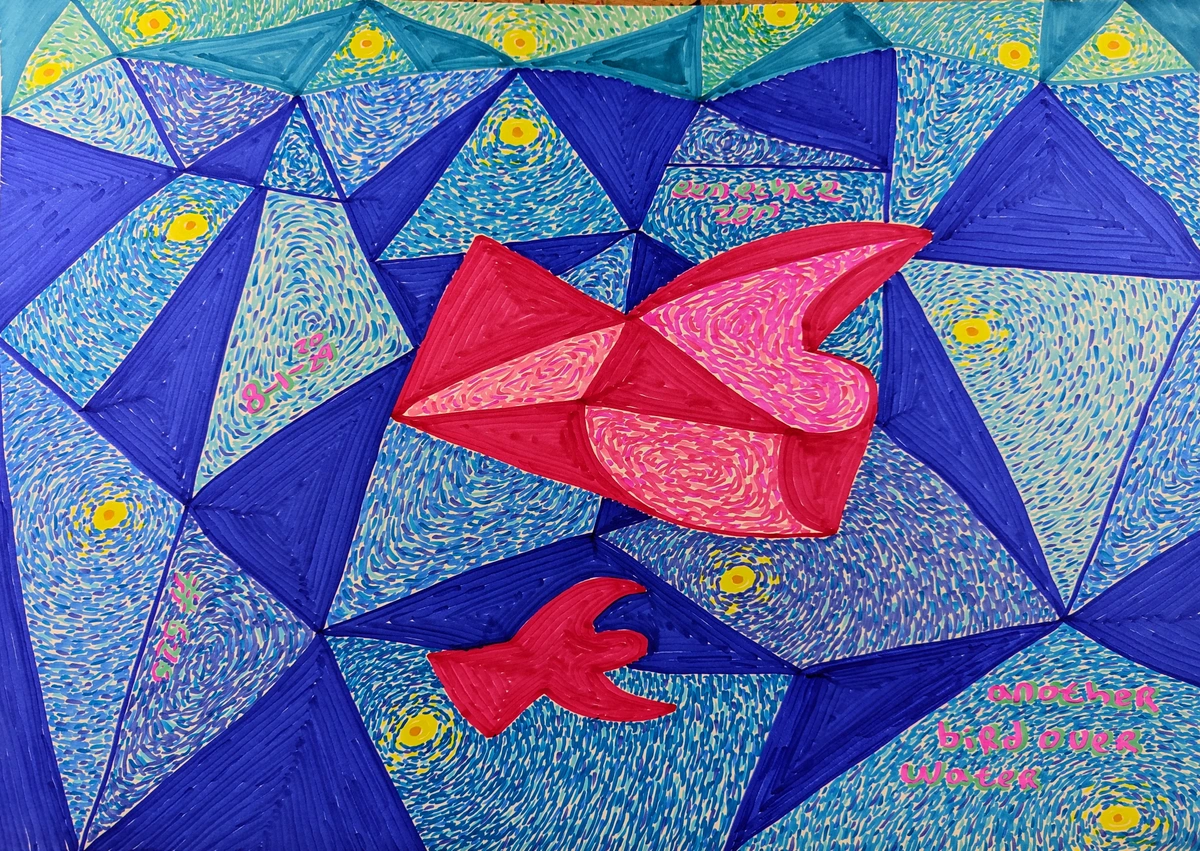
- Embrace Digital Tools (Wisely, Please!) 📱: Many museums now boast excellent websites and dedicated apps featuring interactive maps, collection highlights, audio commentary, curator insights, maybe even augmented reality features. Download them beforehand over Wi-Fi! They can be brilliant for navigation, getting quick info on an artwork that catches your eye, or planning your route. BUT, resist the siren call to experience the entire museum through your phone screen. Use these digital tools to enhance your direct looking, not replace it. Maybe use the app to identify that intriguing sculpture, learn a quick fact, then put the phone away and just spend time looking at the actual, physical object in front of you. Find the balance between helpful tech and unmediated experience.
- Packing Essentials (Your Museum Survival Kit) 🎒: Don't underestimate the power of being prepared for a long day of art appreciation. Bring a reusable water bottle (many museums have refill stations), a small, non-messy snack (like a granola bar) for a quick energy boost between cafes, and a portable charger for your phone (especially if you're using museum apps or taking photos). A small, light bag or backpack is ideal for carrying these essentials without feeling weighed down. Comfort is key to truly enjoying the art!
- Engaging with Museum Staff (Unlock Hidden Insights) 🗣️: Don't be shy! Museum attendants, information desk staff, and even security personnel often have a wealth of knowledge and a passion for the collections. If you're looking for a specific piece, need directions, or even just want a local's recommendation for a lesser-known gallery nearby, politely ask. They can sometimes offer unique insights or point you to hidden gems you might otherwise miss. A friendly question can turn a good visit into a great one.
From Museum Walls to Inside Your Head: Why Visiting Europe's Top Art Museums Matters
Visiting these magnificent repositories of art, from the grand European art museums to smaller art museums in Europe, offers so much more than just ticking off famous names from a list or snapping pics for the 'gram. It's really about the connections made and the understanding gained – it's about what happens inside you:
- Get the Big Picture (Context is King): Seeing artworks arranged chronologically, geographically, or by movement provides a visceral, tangible understanding of art historical development – tracking influences, technical breakthroughs, societal shifts, changing aesthetics – that simply reading a book or looking at images online can never fully replicate. You truly feel why modern art felt so revolutionary after walking through rooms filled with centuries of academic tradition first. Understanding how to read a painting becomes more intuitive. It's like seeing the evolution of human vision unfold before your eyes.
- Train Your Eye (Becoming Visually Savvy): Regularly soaking in masterpieces, across different art styles and periods, sharpens your ability to see, analyze, and appreciate visual information not just in art, but everywhere in the world around you. You start noticing the subtleties – the direction of a brushstroke, the intentional play of light and shadow, the balance (or imbalance) of a composition, the hidden meanings conveyed through symbolism. Your visual literacy grows with every visit. As an artist, this is invaluable training. Seeing how a Baroque painter used light to create drama, or how an Impressionist captured a fleeting moment with color and texture, directly informs my own choices in the studio, even when I'm working on something completely abstract. Understanding how artists use color across centuries is a masterclass in itself.
- Spark Your Own Fire (Creative Fuel & Art Inspiration): The sheer range of human expression, technical problem-solving, innovation, and imaginative power on display in these museums can be incredibly motivating and inspiring. Whether you're an artist yourself seeking fresh ideas and techniques, a designer looking at form and function, a writer observing narrative and emotion, or simply someone looking to inject more creativity and beauty into your everyday life, Europe's art museums are potent fuel. Seeing the struggles and triumphs reflected in an artist's journey can be profoundly inspiring too. For me, it's often the unexpected piece, the bold use of how artists use color, or a surprising composition that sends me back to my studio buzzing with new ideas. How did they achieve that texture? What was the feeling they were trying to capture? These questions echo in my head long after I leave.
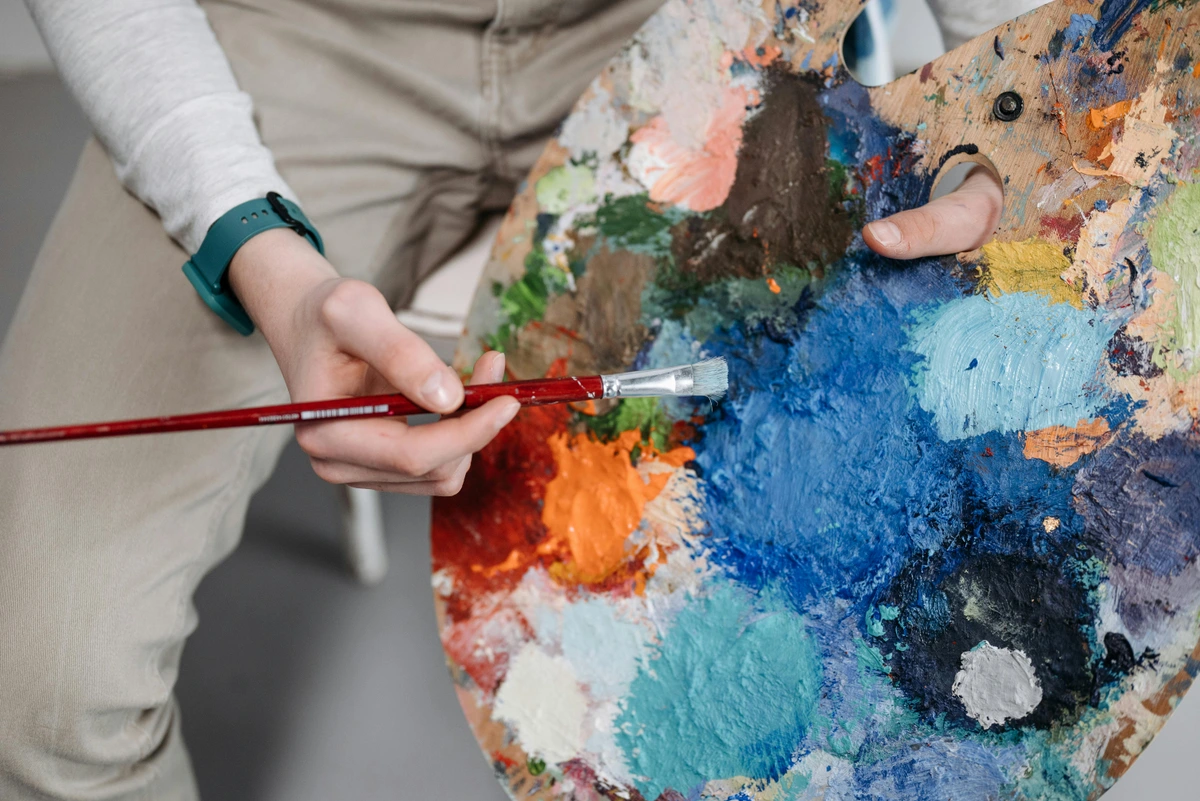
- Find Your Tribe (Informing Your Personal Taste): Experiencing such a diverse range of styles, periods, cultures, and artistic intentions firsthand is unequivocally the best way to figure out what truly resonates with you. Do you swoon for the meticulous detail and jewel-like colours of the Northern Renaissance? The high drama and emotional intensity of the Baroque? The cool elegance and order of Neoclassicism? The raw energy and freedom of Abstract Expressionism? Or perhaps the clean lines and functional beauty of modern design? Understanding your own preferences is invaluable, whether you're pondering what art to buy for your own space or simply deciding which exhibition queue is worth joining next. It's key to defining your personal art style and taste. It's a journey of self-discovery through art.
- Open Windows into Other Worlds (Cultural Understanding & Empathy): Museum collections are essentially time capsules, albeit curated ones. They reflect the histories, beliefs, power dynamics, aesthetic values, anxieties, and aspirations of the societies that created and collected them. They offer fascinating, sometimes challenging, glimpses into different ways of seeing the world, different historical moments, and the vast sweep of our shared (and often contested) human story. They remind us of the complex tapestry of human experience.
- Guard History (Conservation & Restoration): It's easy to forget that the art we see isn't static. Museums play a crucial, ongoing role in conservation and restoration, employing skilled professionals who work tirelessly behind the scenes to preserve these treasures for future generations. Every painting you see has a history of care, cleaning, and repair, a silent testament to the dedication required to keep these fragile objects alive. It's a quiet, vital work that ensures these windows into the past remain open.
- Discover Unexpected Connections (Shared Humanity Across Time): Sometimes, the most profound museum moments aren't about standing thunderstruck before the most famous painting. It might be overhearing a snippet of conversation between strangers that suddenly makes you see an artwork in a completely new light. Or sharing a silent, knowing glance with someone else across the room about a particularly weird or wonderful contemporary piece. Or finding yourself unexpectedly choked up by a portrait painted centuries ago, recognizing a familiar human emotion – joy, grief, boredom, love – staring back at you across the vastness of time. It’s these quiet moments of connection – with the art, with the past, and with fellow humans sharing the experience in the present – that remind us of our shared history and complex humanity. Don't underestimate the quiet power of just being present in these spaces, open to whatever they might offer beyond the labels on the wall.
Frequently Asked Questions (Your European Art Museum Survival Kit)
Got lingering questions before you embark on your European art museum pilgrimage? We've got answers (or at least, our best attempt based on common queries!).
Q1: What's the real difference between an 'art gallery' and an 'art museum' in Europe? They seem interchangeable sometimes! A: That's a great question, as the terms definitely get jumbled. A museum (from the Greek mouseion, seat of the Muses) is an institution dedicated to acquiring, preserving, researching, interpreting, and publicly exhibiting objects for education and enjoyment. Think long-term preservation and public access. A commercial art gallery, on the other hand (like those in Mayfair, London; Le Marais, Paris; or Mitte/Kreuzberg, Berlin), is typically a private business. Its primary function is to exhibit and sell works, often focusing on contemporary artists. This article predominantly focuses on the big public museums and non-commercial institutions – the magnificent places most people mean when they search for the "best art museums in Europe" or "top art museums in Europe" in that grand, non-shopping sense. We've tried to use "museum" consistently for these public bodies throughout the guide for clarity.
Q2: Seriously though, do I really need to book tickets online in advance for these famous places? Can't I just show up? A: For the absolute superstars (Louvre, Uffizi, Vatican Museums, Prado, Rijksmuseum, Musée d'Orsay, Van Gogh Museum, Borghese Gallery, Sagrada Familia if you're including architectural marvels) and pretty much any major temporary exhibition anywhere... YES. YES. YES. We cannot emphasize this enough. Advance online booking via the museum's official website is pretty much non-negotiable, especially during peak tourist season (roughly April-October & major holidays). It guarantees your entry (sometimes slots sell out completely) and saves you from potentially soul-destroying, holiday-ruining queues (which can literally be hours long!). Even for slightly less famous museums, booking online is often cheaper or might offer a slight discount. Always check the official website of the specific museum you plan to visit well before your trip for their latest booking procedures and availability. Don't just wing it and hope for the best – you'll likely regret it! Also, be aware that sometimes specific, highly popular internal sections or special viewings within a large museum might require an additional timed booking even after you have general admission – check the museum's site for details if you have very specific must-sees.
Q3: How much time should I realistically block out for visiting these major museums? I don't want to feel rushed, but I also have other things I want to see! A: This really depends on the museum's size, the depth of its collection, and your personal interest level and stamina! As a very rough guide (and see the table above for quick reference):
- Monsters (Louvre, Hermitage, British Museum, Vatican Museums): Minimum 4 hours for just the absolute, most famous highlights, skimming past almost everything else. A full day (or even better, two separate half-day visits) is more realistic if you actually want to absorb anything or explore beyond the top 10 hits.
- Large & Comprehensive (Prado, Rijksmuseum, National Gallery London, Kunsthistorisches Vienna, Uffizi, National Gallery Prague): Plan for at least 3-4 hours to get a decent overview of the main collections without sprinting like you're in the Olympics.
- Focused Majors (Musée d'Orsay, Reina Sofía, Tate Modern, major Modern/Contemporary museums like ARoS or IMMA): 2.5 - 3 hours can give you a good feel for the key works and overall layout, maybe longer if you get really engrossed in a particular section or temporary show.
- Smaller/Specialized/House Museums (Borghese Gallery, Magritte Museum, Lenbachhaus, Peggy Guggenheim, Sir John Soane's): 1.5 - 2 hours might be perfectly sufficient (e.g., Borghese Gallery visits in Rome are often strictly timed to 2 hours anyway; Sir John Soane's is small but dense).
- Open-Air Sculpture Parks (like Yorkshire Sculpture Park or Kröller-Müller): Easily 3-4 hours, potentially a full day if you want to explore the entire parkland and soak in the atmosphere.
- Key Strategy: Do a little research on the museum's collection online before you go to prioritize what you personally most want to see. This helps you make the most of your time, regardless of how long you have.
Q4: Are there amazing art museums in Europe outside the usual big capital cities like Paris, London, Madrid, Rome, Berlin, Amsterdam? A: Absolutely! While many famous institutions are in capitals, Europe is packed with incredible museums elsewhere. Consider:
- Spain: Guggenheim Bilbao.
- France: Fondation Maeght (Saint-Paul-de-Vence).
- Denmark: Louisiana Museum of Modern Art (near Copenhagen), ARoS Aarhus Art Museum.
- Netherlands: Kröller-Müller Museum (Otterlo), Design Museum Den Bosch, Noordbrabants Museum ('s-Hertogenbosch).
- Switzerland: Fondation Beyeler (Basel).
- Germany: Various Pinakotheken and the Lenbachhaus in Munich, Wallraf-Richartz Museum (Cologne).
- UK: National Museums of Scotland (Edinburgh), Yorkshire Sculpture Park (West Bretton).
- Italy: Peggy Guggenheim Collection (Venice), Pinacoteca di Brera (Milan).
- Eastern Europe: National Gallery Prague, National Museum Warsaw, Hungarian National Gallery (Budapest), National Museum of Art of Romania (Bucharest).
- Ireland: National Gallery of Ireland (Dublin), Irish Museum of Modern Art (IMMA).
- Belgium: Middelheim Museum (Antwerp), Museum Mayer van den Bergh (Antwerp), Groeningemuseum (Bruges).
- Portugal: Calouste Gulbenkian Museum (Lisbon), National Museum of Ancient Art (Lisbon), Serralves Museum (Porto).
Exploring beyond the capitals definitely pays off, revealing unique perspectives and often less crowded experiences.
Q5: Can I take photographs inside these museums? I want memories (and maybe some proof for Instagram!). A: Generally, yes, non-flash photos for personal, non-commercial use are permitted in the permanent collection galleries of most major European art museums these days. HOWEVER, there are crucial caveats:
- NO FLASH. Ever. Seriously. It's damaging to light-sensitive artworks over time, and it's incredibly distracting to other visitors. Ensure your flash is turned OFF.
- Special/Temporary Exhibitions: Photography (even without flash) is often strictly forbidden in these areas. This is usually due to loan agreements with other institutions or private collectors who own the works. Look carefully for signs (usually a camera icon with a red slash through it) at the entrance to these sections. Respect the rules.
- Specific Works: Occasionally, certain particularly fragile or light-sensitive items (like ancient textiles, old master drawings, or certain photographs) might have individual "no photo" signs next to them, even within the permanent collection. Respect these specific restrictions.
- Tripods & Selfie Sticks: Almost universally banned. They're cumbersome, potential hazards to the art and other people, and generally annoying in crowded spaces. Leave them in your bag or at the cloakroom.
- Video Recording: Policies on video are often stricter than for still photography. Many museums prohibit video recording entirely, even without flash, to prevent disruption and manage copyright concerns. Always assume video is NOT allowed unless you see specific signage permitting it, or check the museum's website/ask staff beforehand.
- Be Considerate & Quick: This is key. Don't block pathways or linger for ages in front of a popular artwork trying to compose the perfect shot while a crowd builds up behind you. Be aware of others trying to see the art too. Snap your picture reasonably quickly and then move on or step aside. Don't use photography as a substitute for actually looking at the art. If unsure about a specific area, politely ask a museum attendant.
Q6: Are those city passes or museum passes (like the Paris Museum Pass, I Amsterdam Card, London Pass, Roma Pass, etc.) actually worth the money? A: It totally depends on your specific travel style, how many museums you realistically plan to visit, and what else is included in the pass. If you are planning to hit multiple paying museums and attractions that are covered by a specific pass within its validity period (e.g., 2, 3, 4, or 5 consecutive days), then yes, a pass can potentially save you significant money compared to buying individual tickets. Often, they also offer the convenience of letting you skip the ticket purchase queues (though usually not security lines). The crucial step: Before buying, list the specific included attractions you genuinely intend to visit. Add up their individual standard entry fees. Compare that total cost to the price of the pass for the duration you need. If the pass costs less, or only slightly more but offers significant convenience (like included public transport), it might be worthwhile. Don't buy a pass if it tempts you into a frantic, exhausting museum-hopping frenzy just to "get your money's worth" if that's not your preferred pace. Factor in the convenience factor too – sometimes saving time and hassle is worth a few extra euros/pounds.
Q7: How do I find out about cool temporary exhibitions happening during my trip? Those sound great! A: The absolute best and most reliable way is to check the official website of the specific museum(s) you plan to visit. Look for sections clearly labelled "Exhibitions," "What's On," "Current Shows," "Plan Your Visit," or similar. They will list all current and upcoming temporary exhibitions with dates, detailed descriptions, and crucial ticketing information (remember, these often require a separate, timed ticket booked in advance!). Major international art news websites (like Artnet News, The Art Newspaper, Artsy, Hyperallergic) and local city tourism board websites or cultural listings magazines (like Time Out for major cities) also often highlight major temporary exhibitions happening in that city. Dedicated exhibition listing sites like SeeSaw or general cultural event platforms can also be useful resources for discovering what's on across multiple venues. Planning ahead lets you potentially catch a once-in-a-lifetime show!
Q8: What actually makes these specific places the 'best' or 'major' European art museums? Who decides that? A: That's a fair and important question! The institutions featured prominently in this guide are widely considered among the best art museums in Europe, the top art museums in Europe, and the major art museums in Europe based on a combination of generally accepted factors:
- Collection Scope & Quality: They hold vast, deep, and high-quality collections containing masterpieces that cover crucial periods of art history, specific influential genres, or the works of globally significant artists (like the top artists ever). Both the quality and quantity/breadth often matter here.
- Iconic Masterpieces: They are the guardians of world-famous, instantly recognizable artworks that are considered essential viewing for anyone interested in art and culture (think Mona Lisa, The Night Watch, Venus de Milo, Guernica, Bernini's Apollo and Daphne). These are cultural touchstones.
- Historical & Cultural Significance: Many of these institutions have long, rich histories themselves, are often housed in architecturally significant or historic landmark buildings, and play a huge role in their respective national identities and international cultural exchange. They are more than just buildings with art; they are major cultural landmarks.
- Visitor Experience & Resources: While often crowded due to their fame, they generally offer good visitor facilities, extensive educational resources (guides, tours, labels, websites), and impactful, professionally curated displays. The architecture, setting (like sculpture gardens or unique buildings), and overall atmosphere also contribute significantly to their reputation.
- Global Reputation & Influence: They are globally renowned institutions that attract millions of visitors annually, shape art historical scholarship and curation practices, lend works to exhibitions worldwide, and are simply unavoidable, essential destinations for serious art lovers and cultural tourists. They effectively set the standard for what constitutes a major European art museum experience, encompassing everything from the grand historical museums to leading contemporary art museums in Europe and important specialized collections like the best sculpture museums in Europe. They are often the first places that come to mind when thinking about art in their respective cities or countries.
Visiting Europe's top art museums and major art museums is far more than just sightseeing; it can be a profound pilgrimage. It's a chance for direct, unmediated encounters with human genius and creativity across millennia. It's a journey through history, culture, and aesthetics, and quite often, it's also a journey into understanding yourself a little better. This guide aims to give you a reliable map and some useful tools for that journey, but the real discoveries, the moments that truly resonate, happen when you're standing there, face-to-face with a work of art that speaks to you across the centuries – whether it's a global icon mobbed by crowds or a quiet, unexpected gem you stumbled upon down a forgotten side street or even vibrant art splashed across a city wall. It's in these moments that the art truly comes alive, not just on the wall, but deep within you, sparking new thoughts and feelings that linger long after you've left the hallowed halls. So, go forth and explore, let the art transform you.
So, plan your visits strategically, book those essential tickets well ahead, use these tips to navigate the practicalities, maybe pack some water and comfy shoes (definitely comfy shoes!), and most importantly, allow yourself to be amazed, challenged, confused, delighted, and maybe just a little bit fundamentally changed by it all. Enjoy your explorations of the incredible art museums Europe has to offer! And who knows, maybe you'll find the spark for your next great idea.




